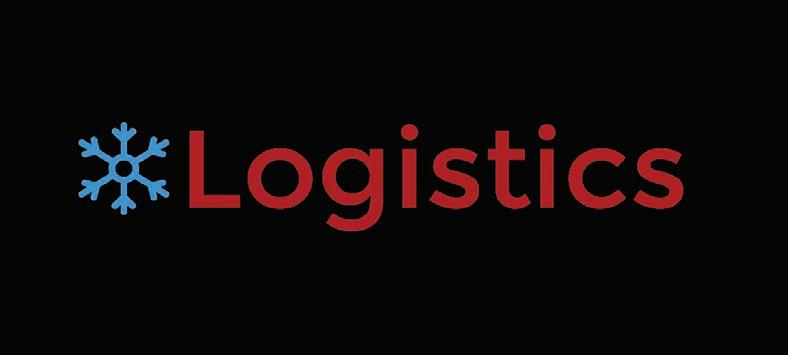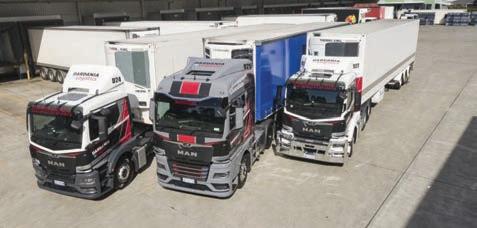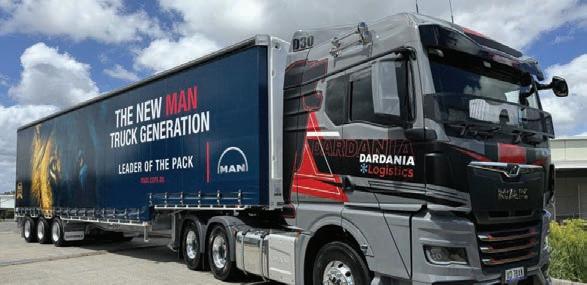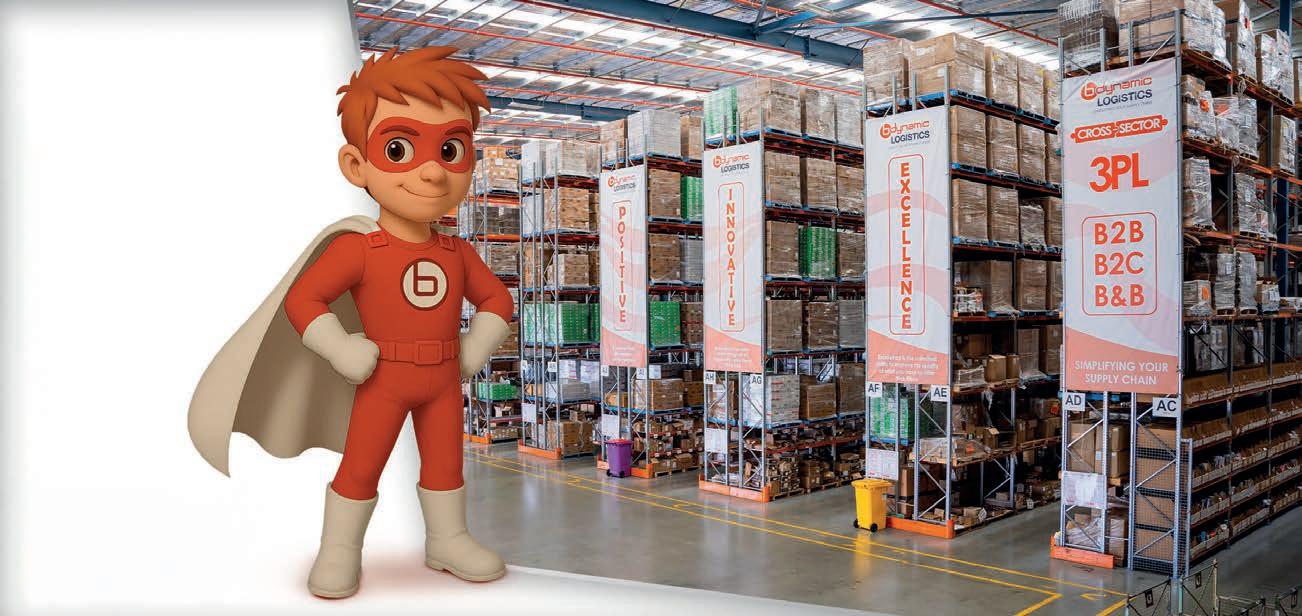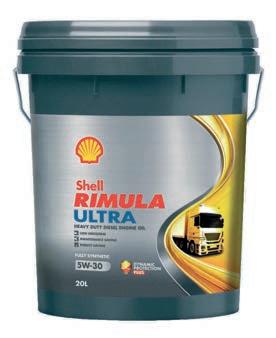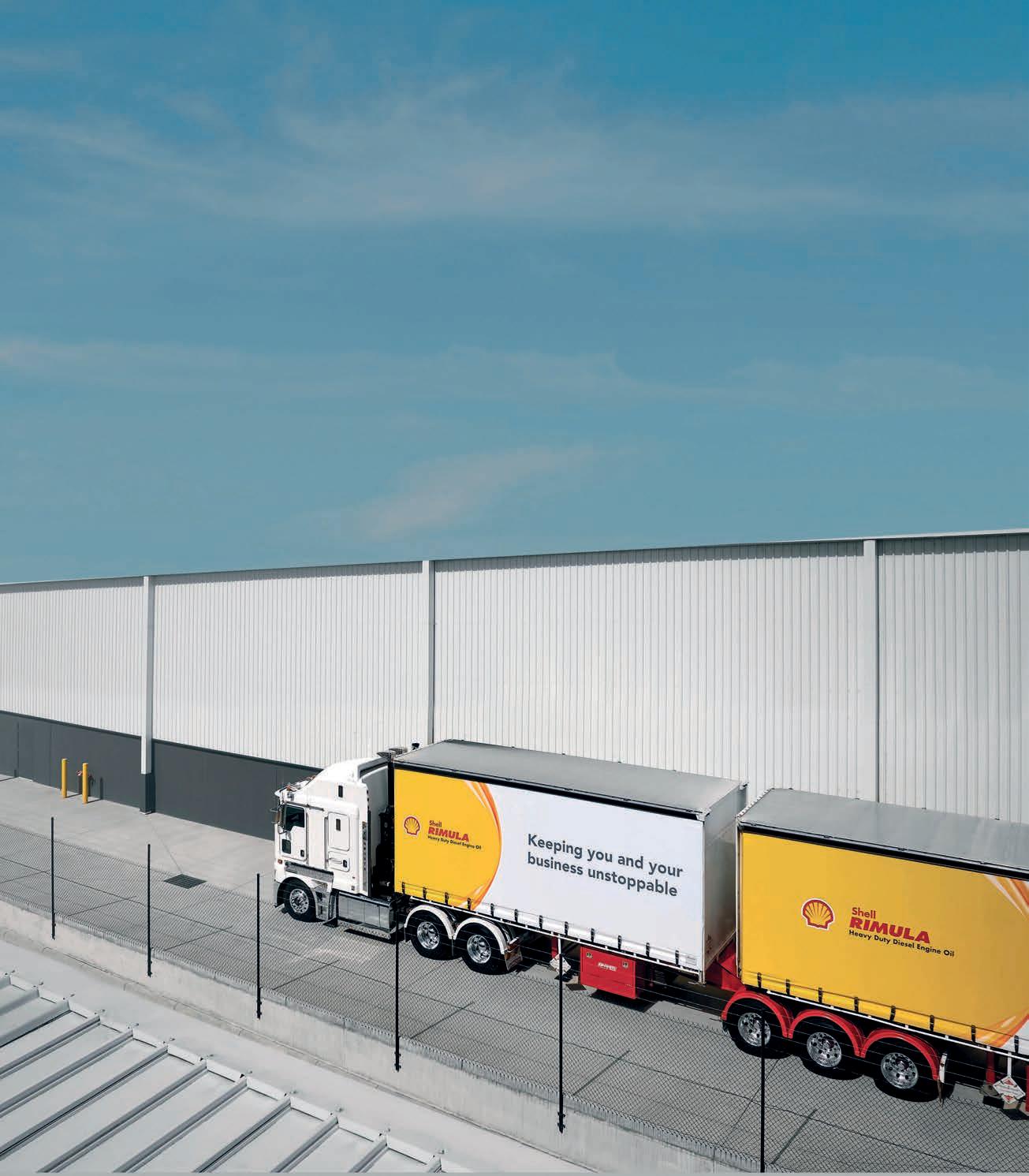

Wettenhalls Making History

INDUSTRY
Fleet: CTI Logistics
Showcase:
INNOVATION
Carrier: Dardania Logistics
Feature: Polyfoam
Tow Trucks: RAA
Test Drive: DAF CF B-double tipper































































































































































The all-new Isuzu truck range. Reliability redefined.











































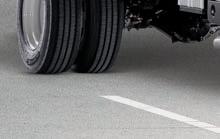




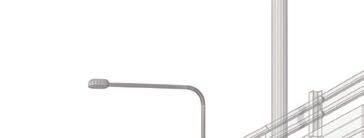

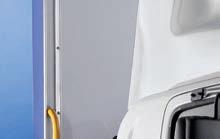
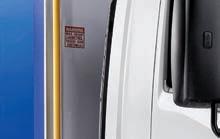


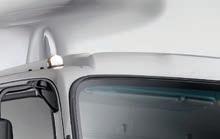
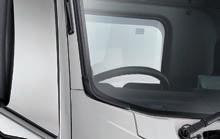





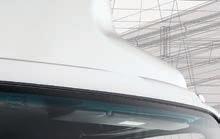
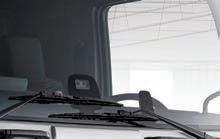
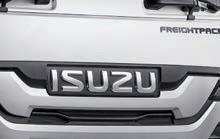










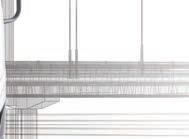







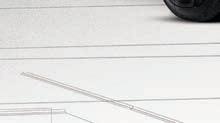















The all-new range of Isuzu trucks has arrived. With a sleek new cab design, more advanced safety features and a smoother, more comfortable drive, the new range will change the way we rely on our trucks. Forever.
To find out more, visit your nearest Isuzu Trucks Dealer or visit isuzu.com.au








MEET THE TEAM
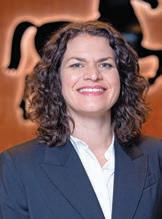

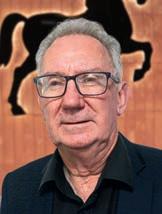


Christine Clancy | CEO
With more than two decades of experience as a media professional, Christine has worked in newsrooms across Canada, Vietnam and Australia. She joined the Prime Creative Media team 12 years ago, and today oversees more than 43 titles, including a dozen print and digital transportation titles. She continues to lead a team that focuses on continuous improvement to deliver quality insights that helps the commercial road transport industry grow.
William Craske | Editor
As the Editor of Prime Mover magazine since 2018 William has reported on the commercial road freight and logistics segments extensively. During that time he has been privileged to lead a team entrusted with covering the latest developments in trucks, transport, technology and the rapidly evolving domain of international supply chains and the role of leading Australian eets.
Peter Shields | Senior Feature Writer
A seasoned transport industry professional, Peter has spent more than a decade in the media industry. Starting out as a heavy vehicle mechanic, he managed a fuel tanker eet and held a range of senior marketing and management positions in the oil and chemicals industry before becoming a nationally acclaimed transport journalist.
Sean Gustini | Journalist
Australia’s leading truck magazine, Prime Mover, continues to invest more in its products and showcases a deep pool of editorial talent with a unique mix of experience and knowledge. www.primemovermag.com.au
Having completed a Bachelor of Arts majoring in Media and Communications at the University of Melbourne in 2024, Sean looks forward to bringing his passion for writing and journalism to the road freight and transport industries. He previously lived in the Philippines, Vietnam, Indonesia and Malaysia. In his downtime he enjoys playing the guitar and running.
Ashley Blachford | Business Development Manager
Handling placements for Prime Mover magazine, Ashley has a unique perspective on the world of truck building both domestically and internationally. Focused on delivering the best results for advertisers, Ashley works closely with the editorial team to ensure the best integration of brand messaging across both print and digital platforms.
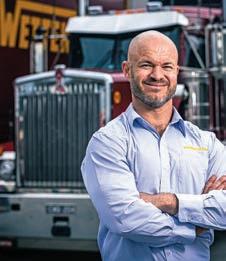
CEO Christine Clancy christine.clancy@primecreative.com.au
Editor William Craske william.craske@primecreative.com.au
Managing Editor, Luke Applebee Transport Group luke.applebee@primecreative.com.au
Senior Feature Peter Shields Writer peter.shields@primecreative.com.au
Business Ashley Blachford Development ashley.blachford@primecreative.com.au Manager 0425 699 819
Art Director Blake Storey blake.storey@primecreative.com.au
Design Jacqueline Buckmaster, Danielle Harris
Contributors Sean Gustini sean.gustini@primecreative.com.au
Client Success Ben Sammartino Manager ben sammartino@primecreative.com.au
Head Of ce 379 Docklands Drive, Docklands VIC 3008 info@primecreative.com.au
Subscriptions
03 9690 8766 subscriptions@primecreative.com.au
Prime Mover magazine is available by subscription from the publisher. The right of refusal is reserved by the publisher.
Annual rates: AUS $110.00 (inc GST). For overseas subscriptions, airmail postage should be added to the subscription rate.
Articles
All articles submitted for publication become the property of the publisher. The Editor reserves the right to adjust any article to conform with the magazine format.
Copyright
PRIME MOVER magazine is owned and published by Prime Creative Media.
All material in PRIME MOVER magazine is copyright and no part may be reproduced or copied in any form or by any means (graphic, electronic or mechanical including information and retrieval systems) without written permission of the publisher.
The Editor welcomes contributions but reserves the right to accept or reject any material.
While every effort has been made to ensure the accuracy of information Prime Creative Media will not accept responsibility for errors or omissions or for any consequences arising from reliance on information published. The opinions expressed in PRIME MOVER magazine are not necessarily the opinions of, or endorsed by the publisher unless otherwise stated.


MAN delivers the powerful performance you expect with the superior support you deserve.
POWERFUL PERFORMANCE,



SUPERIOR SUPPORT.





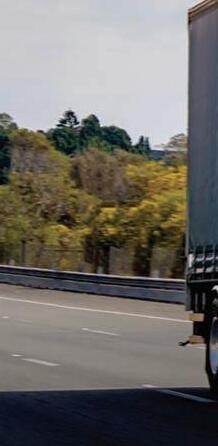


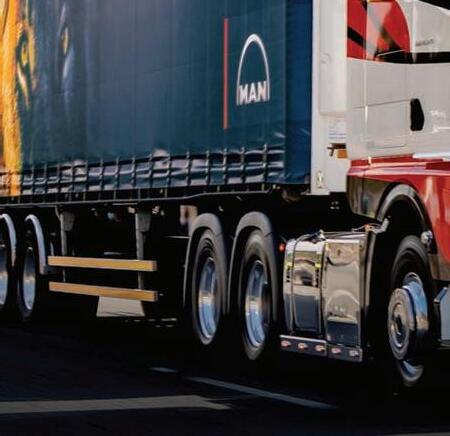
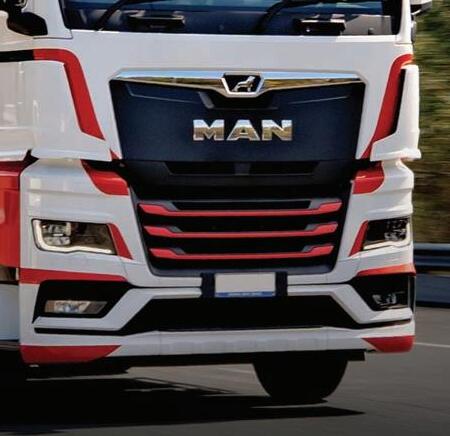









Scan the QR code Up to 5 year, 1,000,000km driveline warranty Up to 4 year, 800,000km entire vehicle warranty
Subvented contract maintenance packages available
Available to the Australian market, this offer ends on 31 December 2025 and applies to select trucks. Terms and conditions apply.




42 38

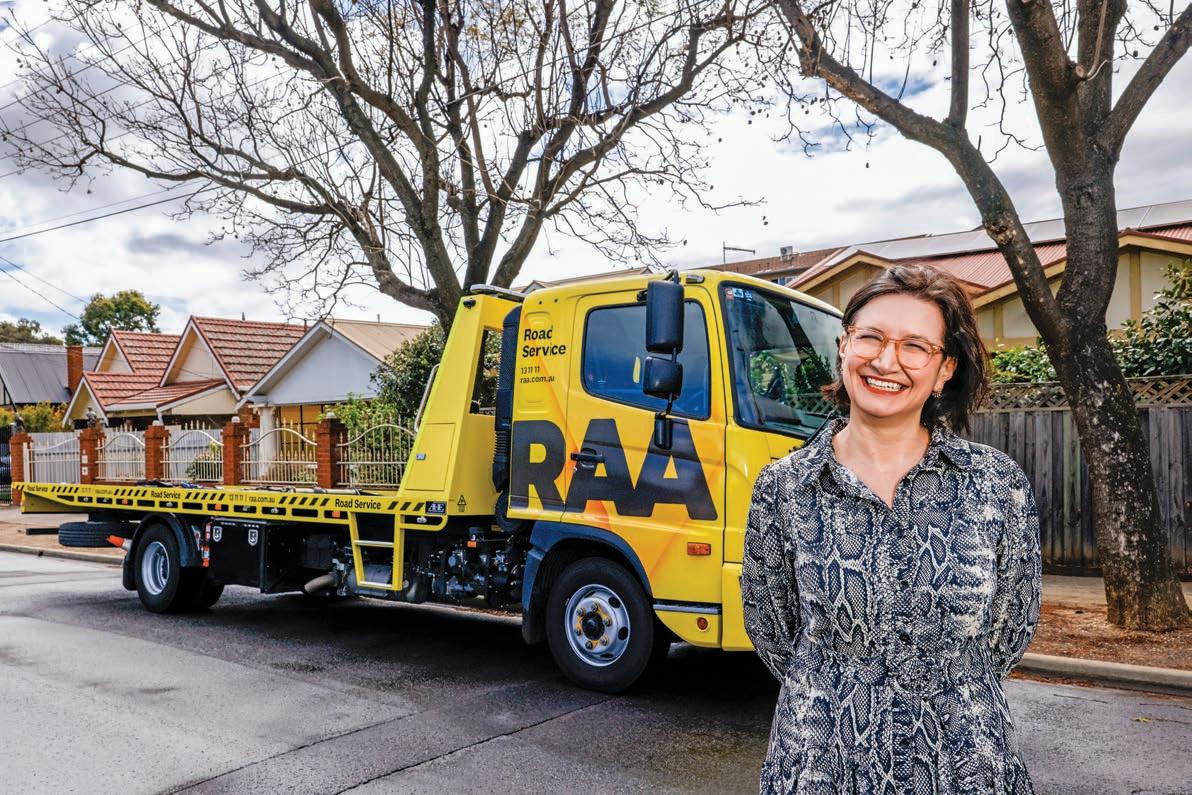
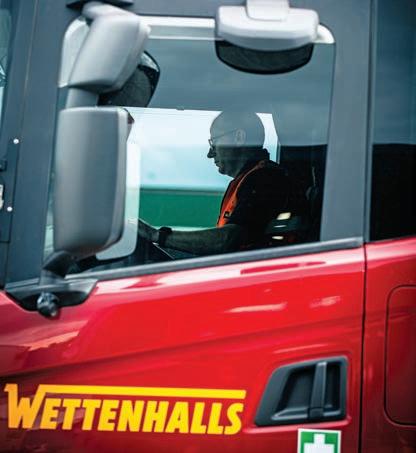
COVER STORY
“In that market there are a lot of blue chip players. Once you start working with some of those on innovative solutions the opportunities just snowball.”


Prime Feature STORIES CORNERING THE MARKET 30
FLEET
FOCUS
24 Making History
Wettenhalls this year celebrates a rich 100-year history, but as a generational enterprise it has an unwavering understanding of where it wants to be in the future.
30 Cornering the Market
Sydney-based Dardania Logistics continues to optimise its truck fleet with new prime movers from MAN as it celebrates its 30th anniversary this year.
34 Light and Easy
Transporting the lightest of loads has its own set of challenges as evidenced by manufacturer Polyfoam.
38 Bread and Butter
Last year CTI Logistics went looking for an OEM partner that was able to provide reliable, versatile trucks to stand up to the tasks of its metro operations in Perth. It found one in DAF.
TRUCK & TECH
42 Three’s Company
Plumbers’ Co-Op’s interstate value proposition has recently been strengthened with the delivery of six new Fuso Canters this year, with the help of Sydney Truck Machinery.
58 Quiet Achiever
The versatility of the DAF CF makes it suitable for many applications in addition to typical linehaul work.

William Craske Editor
Last week I learned of an aviation charter specialist that has the unique capability to manage high-value falcon movements for Middle Eastern royal families and VIP clients. Somewhere in the skies right now, as falconry season ramps up, a royal is having their prized bird own back home, on a private jet likely in a passenger seat. The falcon, oddly enough, will remain hooded throughout the journey to ensure they are calm and comfortable. It’s standard practice, if I’m reliably informed, in falcon transportation.
More often than not in transport the priority is to prevent the animals boarding. Shippers, landside operators and customs brokers ready themselves annually in Australia for another season, certainly less festive than it sounds, dedicated this time to stink bugs.
The Brown Marmorated Stink Bug, as it is less endearingly named, prefers to stowaway in imported goods or within packing spaces. The smell it emits, mainly as a defence mechanism is not, despite its name, the main threat it poses. If established, stink bugs would eat crops, destroy plants, not
First Class Freight
to mention become a likely nuisance in homes and buildings. Cross border transport is subject to strict regulations regarding invasive species and the carriage of certain foods and products that might conceal something with the potential to cause ecological harm. In the world of international trade, freight vessels are sought out routinely by a litany of undesirables looking to hitch a ride. Containers being an obvious one.
Whatcom County earlier this year was the site of a truck accident in which 14 million pollinating bees were set free after a truck rolled over.
The overturned truck was carrying an estimated 70,000 pounds of honeybee hives, which contained live bees. More than two dozen beekeepers responded to the site where hive boxes from the overturned truck were recovered, restored and returned to use. The bees eventually found their queen bee and re-hived. Interestingly enough, for the past ve years teams in Washington State have been eradicating invasive murder hornets. The insects — more formally known as northern giant hornets — pose a signi cant threat to honeybees and other native insects in the Paci c Northwest. They can kill an entire hive in as little as 90 minutes by decapitating the bees. They were rst spotted in British Columbia, Canada in August 2019 and con rmed in Washington in December of that year. The general consensus is they most likely arrived on commercial
shipping containers
The Australian Fumigation Accreditation Scheme (AFAS) is a bilateral arrangement between the Australian Department of Agriculture, Fisheries and Forestry and participating overseas government agencies. AFAS manages the high biosecurity risk posed by ineffective treatments performed offshore on associated packaging for quarantine and pre-shipment purposes. A registry is in place for accredited pre-border biosecurity treatment providers. These will specialise in heat treatment methodologies, methyl bromide fumigation, controlled atmosphere treatment, sulfuryl uoride fumigation, ethyl formate fumigation, insecticide treatments in addition to a host of other applications. WorkSafe Victoria has two health and safety solutions in place just for the clearance of methyl bromide and venting prior to unpacking primarily for the safety of the end-user.
Christmas, especially for many young families this year will come, at some stage, on a container. It calls to mind a comic moment in Barfly when Mickey Rourke is asked about his previous employment at a toy factory: “You don’t know how men suffer for children.”






> Wightman Transport adds four Kenworth K220s
South Australian refrigerated linehaul specialist, Wightman Transport has landed the first two Kenworth K220s of an order of four.
The first pair of day cab units have been active in the fleet on a new contract running between Adelaide and Melbourne. Wightman Transport Business Development Manager Josh Starke said the K220s were able to meet some of the changes tasked of the fleet on a new contract with potential for even longer trips to New South Wales and Queensland.
“The Kenworth K220 is better suited to the latest developments in our workflow,” he told Prime Mover “For this linehaul run we had to have a more fuel and better fuel consumption.”
The Kenworth K220s are powered by a Euro 5 emissions compliant Cummins X15 producing up to 550horsepower and 1850 lb/ft. This incorporates an 18-speed automated manual transmission which feeds a set of Meritor axles and differentials specified at a 4:3 ratio. With a few months under their belt the drivers have had a solid period in which to evaluate the new Kenworths according to Starke.
“The trucks are going great, and the drivers absolutely love them,” he said. These two new K220s are 114-tonnerated. All four units feature the retrofit advanced driver assistance Bendix Fusion system.
The fitment of Advanced Emergency Braking (ABE) to most heavy vehicles over 3.5 tonnes Gross Vehicle Mass (GVM) is now required by law, specifically ADR 97/100. ABE detects probable forward collisions, alerting drivers, and automatically applies the brakes if the driver does not respond. With nose-to-tail collisions the second-most common type of accident involving trucks after rollovers, the Bendix Fusion system is now considered essential.
“All of our customers want it and it’s something we need,” said Starke. “Safety is at the forefront of what we do, and having systems that optimise our operational safety certainly helps with future contracts and customers.”
Bendix Fusion also includes Enhanced Autonomous Emergency Braking, Enhanced Stationary Vehicle Braking, Multi-Lane Autonomous Emergency Braking, and Highway Departure Warning and Braking.
The other two Kenworth K220s due soon for delivery in the fleet are big cabs fitted with bullbars.
These units are destined for long haul into New South Wales and Queensland return.
Wightman Transport had its 60th anniversary last year. Starke’s grandfather, Doug Wightman was instrumental in helping build the company. His son-in-law Peter Starke, became Managing Director in 2010.
The 1980s was a particularly fertile period for the business in which it saw significant growth.
Some of its success was initially sustained on the back of a Mitsubishi Fuso that did everything from local PUD in Adelaide to trips across the Nullarbor to Perth.
That Fuso had a red underside trim that the newest Kenworths, as part of a tribute to its legacy, display via a striking dragonfly red vinyl wrap.
South Australian family business Panagraphix supplied the signwriting and design.
“It was something that caught my eye and I thought it would be good to get away this time from having all white,” said Starke. “We’re happy to support a local business doing great work.”
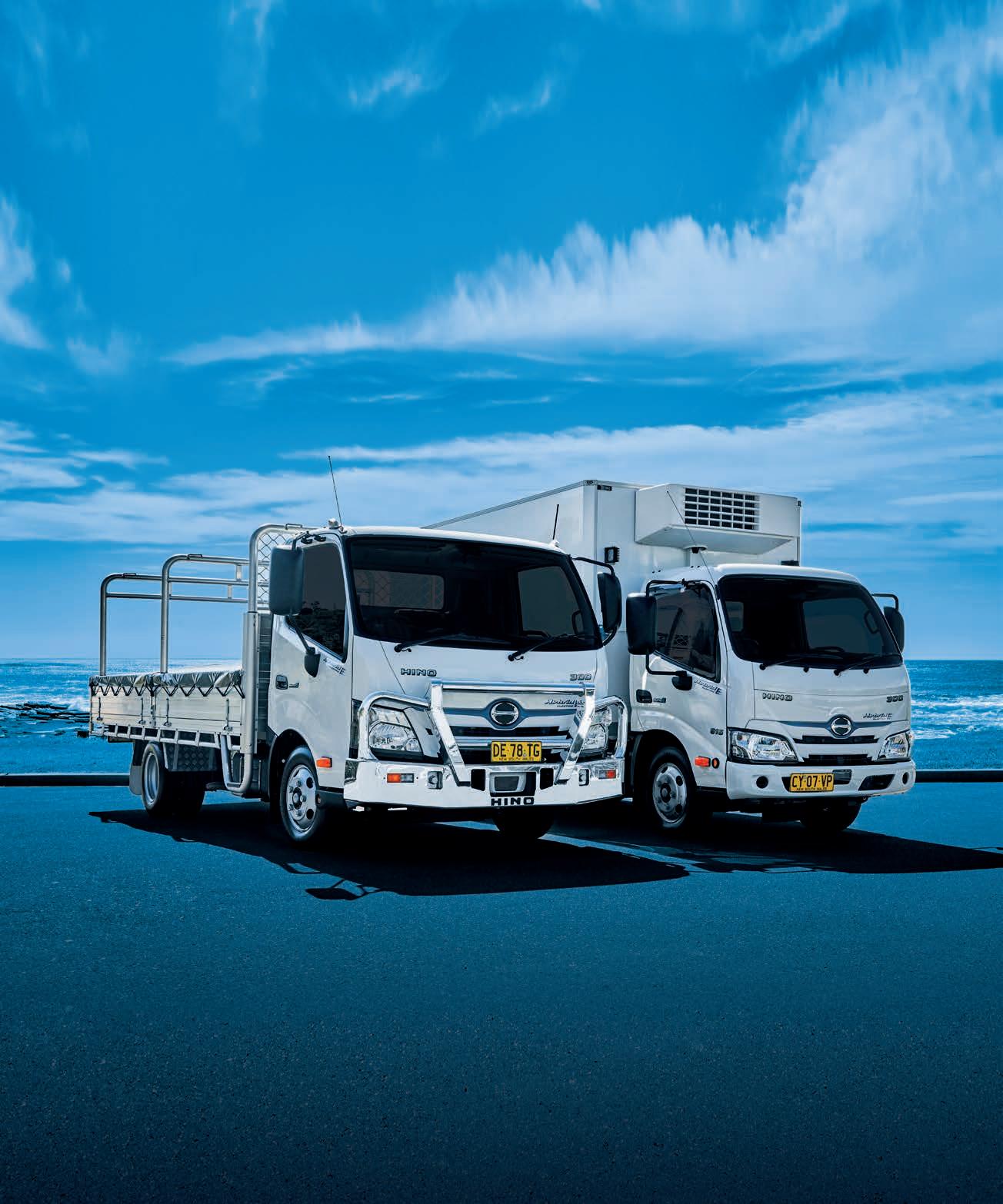

One of the new Kenworth K220 B-doubles.

THE POWER OF PROVEN TECHNOLOGY.
THAT’S ANOTHER HINO

HINO QUALITY MEETS TOYOTA TECHNOLOGY.
The Hino 300 Series Hybrid Electric utilises a parallel diesel electric hybrid driveline design, powered by Toyota Group technology proven in over 15 million hybrid vehicles worldwide. With maximum torque generated at low rpm, real-world tests prove up to 22%* fuel savings and emissions reductions. Leading the way with low-emissions, there are no recharge requirements or range limitations. Fully backed by Hino Advantage, giving you more support and solutions for the long run. That’s the power of change, that’s the Hino Hybrid Electric. Visit hino.com.au

> Chugh Transport outlays $1.2M on new trucks
Customer service is driving success for Chugh Transport, a small familyowned operation that is growing its business offering, powered by Scania. In 2011, Peter and Kirsty Chugh founded the fledgling business in Dandenong South, armed with one second-hand Scania prime mover. Today, the business operates 15 Scanias and has evolved from its original removals work into container cartage and recently added warehousing and container unpacking services at its new, larger premises.
The new facility on busy Remington Drive has benefited from exposure to passing traffic boosting its awareness, in turn luring new clients.
“It’s a big opportunity for us to expose ourselves more in the market,” Kirsty Chugh said. “Moving to Remington Drive in March 2025, we expanded our footprint from 5,000m³ to 12,000 m³, boosting our onsite capacity from 100 to 500 containers, but already we’re getting full,” she said.
Much of the business hinges on carting containers on A-doubles and B-doubles off the wharf in Melbourne and delivering to the yard, as well as using the company’s six sideloaders to deliver to customers’ premises. With 20 employees on the books, mostly truck drivers and the all-important reach stacker drivers, the business has grown organically from the early days of the two directors doing everything themselves.
Peter and Kirsty have around 40 years of transport industry experience between them, initially starting in Queensland. As the Operations Manager for a transport company there, Kirsty was transferred down to Melbourne and Peter came with. He had worked with Wridgways Removals prior to their demise and managed to secure one of their Scania trucks, a 4×2 P 360, and used this in Melbourne to start Chugh Transport.
That truck now has more than a million kilometres on the clock and was

recently overhauled, so it is still able to earn its keep when required.
While Peter started off driving for Chugh Transport, Kirsty managed the business, but now Peter is now out of the literal driving seat and focused on building sales, and daughter Georgia helps out on the front desk in between her nursing studies.
Initially, the work was removals and then carting to and from the wharf for freight forwarders but now delivering directly for customers is becoming a growing component of the daily schedule, as well as warehousing.
After a couple of years, the business purchased its second truck, a second-hand R 480 prime mover from the Scania Used Truck team in Campbellfield.
“That truck cost $125,000, which was a great deal of money for us,” Chugh said. “Recently we put down $1.2 million on three new Scania trucks, so the times have changed. Early on we bought three or four second-hand Scanias, and then we started buying them new.”
Peter said the tempo of purchasing has increased.
“I am looking forward to the day when I can order ten in one go,” he said.
Peter’s love of Scanias started long ago according to Kirsty.
“He had driven Scanias in previous jobs and just liked the way they
drove. So, he wanted to keep buying them. We formed a good working relationship with Tevfik Onguc, and then latterly with Mat Staddon, Scania Account Managers at the Dandenong Branch [and] it just went from there,” she recalled.
“Last year we bought three brand newies, and this year we have bought three as well; G 560 six-cylinder prime movers and R 590 V8s.The V8s pull the A-doubles and the G 560s pull the sideloaders.”
The fleet also includes a G 440, 130-tonne rated R 590 V8, an R 620 V8, 460 P Supers and an R 540.
The fleet is starting to log bigger annual kilometres now that it is expanding its customer base and services but no more than 85,000 kilometres per year on average across the fleet.
“We are really pleased that the new Scania Supers that we have had on the fleet have been delivering what we were promised in terms of fuel efficiency improvements. We do monitor the fuel use, and we have a 60,000-litre tank on site, which is another way of keeping our fuel bills down,” Kirsty said.
“The combination of buying bulk fuel and the fuel economy of the new Scanias is making a big impact on our fuel costs, given we use around 25,000 litres each month.”

Image: Scania Australia.
Scania prime mover pulls an A-double.



> COPE Sensitive Freight expands fleet, property footprint
COPE Sensitive Freight has broken ground on a new state-of-the-art facility in Sydney. Last month the carrier marked the development approval and commencement of works to deliver a new 38,500m² warehouse and distribution site at the Alspec Industrial Business Park in Orchard Hills. The latest company investment which is going to incorporate modern offices, warehousing and staging facilities in addition to its growing transport operations, will support the continued growth of its operations in New South Wales.
Nick Linnett Chief Operating Officer thanked project partners HB+B
Property and CIP Constructions for helping to bring the company’s vision to life.
“We look forward to watching it take shape in the coming months,” he said. “This facility will further strengthen our network and ensure we can continue on deliver what matters when it matters most for our clients.”
Part of the Federal Group, the oldest continually operating hotel group in Australia, COPE Sensitive Freight has become an increasing presence on major metropolitan arterials. The fleet has also recently replaced four older trucks with new Mercedes-Benz Actros prime movers.
The 580 horsepower rated vehicles,
> XFM continues major fleet expansion
XFM has added five new prime movers to its growing fleet.
The national logistics company recently introduced new Fuso Shogun 400s along with nine new Vawdrey trailers as part of its continued expansion.
XFM’s five Fuso Shogun 400 models feature a Daimler Truck-sourced 11-litre six-cylinder engine, paired with a 12-speed Automatic Manual Transmission (AMT).
The units’ Euro 6-rated engines produce 400hp, enough power for short- or long haul work.
XFM Managing Director, Les Sharpe, said the company’s recent fleet upgrade is in-line with its commitment to operate modern high-quality equipment and first-class depots across major Australian cities.
“Our customers can attest that we are 100 per cent committed to providing the highest level of service, and that means we operate quality trucks that are safe, efficient and well-maintained,” he said. “Safety for our drivers and other road users is important, so we are also pleased that the Fuso Shogun comes with a really
delivered by Daimler Trucks Hungtingwood, will be covered by a Daimler Complete Service Plan package.
“We’re proud to announce the latest arrivals into our fleet with the delivery of four new Mercedes-Benz Actros prime movers. This investment reinforces our commitment to safety, efficiency, and delivering exceptional service within the sensitive freight sector,” said Matt Heffernan, COPE Sensitive Freight National Network & Assets Manager. “We are confident these vehicles will be a valuable asset to our operations team and a key part of our ongoing partnership with Mercedes-Benz.”

high level of safety as standard. The overall business case for the Shoguns, including the low operating costs, also makes it something that is hard to say no to.”
XFM’s Shoguns come with Advanced Emergency Braking Systems technology fitted as standard, enabling them to automatically carry out full brake application in response to stationary and moving objects. The Fuso Shoguns can even brake in response to moving or halted pedestrians.
Sharpe also expressed his
appreciation for the help of Daimler Truck Australia Pacific Director of Strategic Partners and Business Development, Richard Eyre, who was able to help him get the right trucks for the job in a timely fashion.
The Fuso Shogun 400s also benefit from lengthy 50,000 kilometre service intervals that ensure the truck spends more time out on the road getting the job done.
The truck units also include a manufacturer warranty that lasts for five years or 500,000 kilometres — whichever comes first.
Images: credit
Three of the five new Fuso Shoguns delivered to XFM.
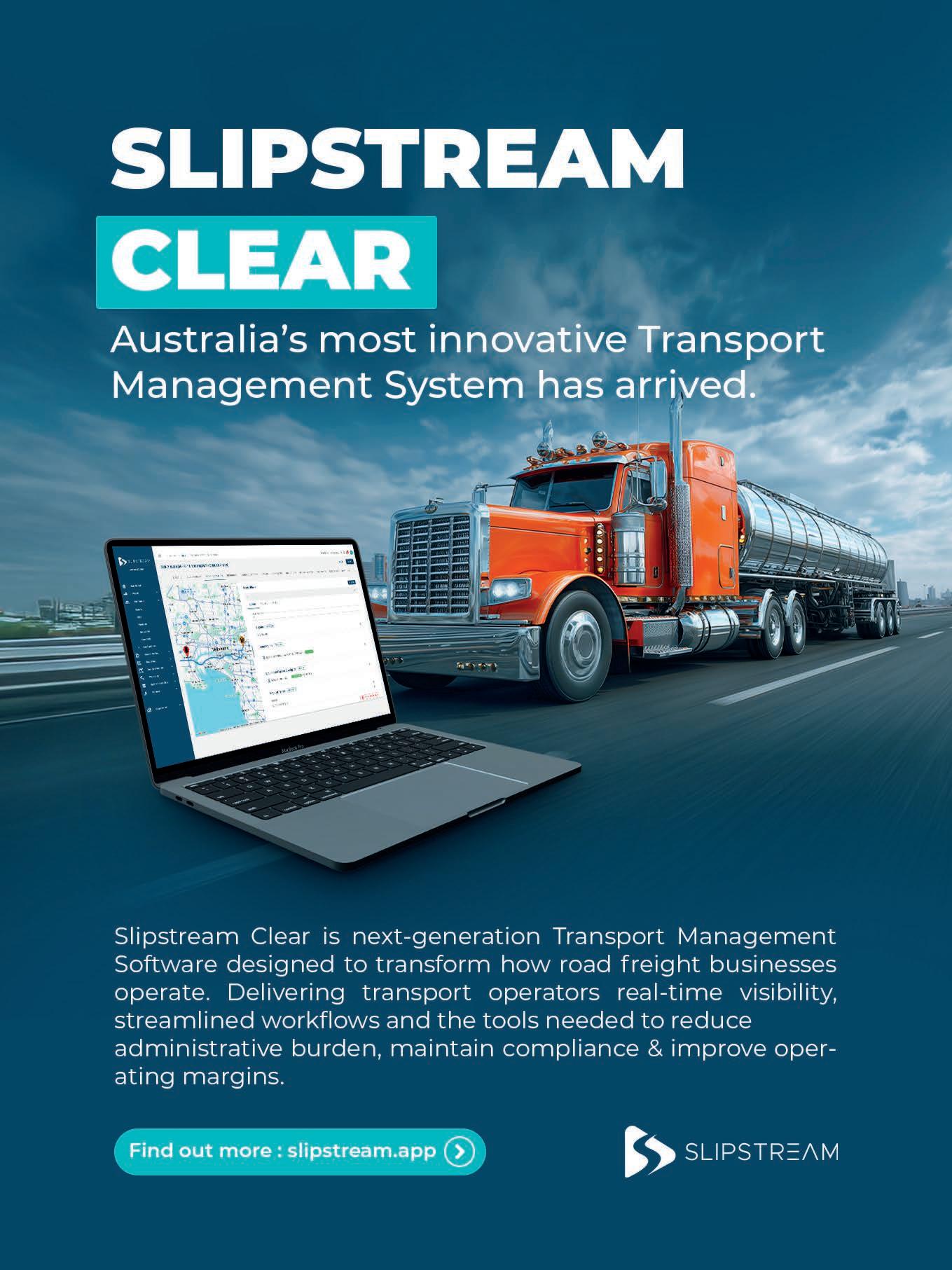
> FedEx introduces EVs in Adelaide
An initial 55 electric vans and trucks are being deployed by FedEx Australia, commencing in Adelaide, with plans for major cities on the east coast also underway.
The Fuso eCanters and Mercedes-Benz eSprinter vans will operate in parcel pickup and delivery services across metropolitan areas. The initial rollout will commence in Adelaide with the introduction of 15 Fuso eCanter trucks hitting the road.
This marks the first phase of a broader expansion, with the remaining EVs to be deployed in Melbourne, Sydney and Brisbane. The company plans to expand into additional regional and metropolitan areas as new charging infrastructure is installed.
The Fuso eCanter trucks are estimated to avoid up to 13.2 tonnes of CO₂ tailpipe emissions per vehicle annually when travelling 30,000 kilometres compared to diesel models, with
an estimated range of up to 200 kilometres on a single charge. Meanwhile, each eSprinter is projected to avoid up to 8.5 tonnes of CO₂ tailpipe emissions per year based on estimated distance travelled compared to a diesel-powered equivalent, featuring a 1.5-tonne load capacity and a 264-kilometre range on a full charge.
“The introduction of these electric vehicles to our pickup and delivery fleet in Australia marks a pivotal moment in our operations,” said Peter Langley, Regional Vice President, FedEx Australasia.
“It is an important initial step we have taken to help reduce the environmental impact of our pickup and delivery operations while continuing to provide the efficient and reliable service our customers expect.
“As e-commerce continues to grow and consumers become more environmentally conscious, we believe
that embracing electric vehicles is a strategic imperative for a cleaner and more sustainable future.”
This electrification initiative reinforces the goal of FedEx Australasia’s parent company, FedEx Corporation, to electrify the entire FedEx global parcel pickup and delivery (PUD) fleet by 2040 and achieve carbon-neutral operations by 2040 across its global business lines.
The introduction of the new EV fleet in Australia follows a recent successful launch of EVs in New Zealand, further reinforcing FedEx Australasia’s efforts to support FedEx Corporation’s wider global strategy to reduce operational emissions across its network.
Beyond vehicle electrification, FedEx Corporation is also investing in other areas such as aircraft modernisation, sustainable fuels, renewable energy, efficient facilities, and is also supporting carbon sequestration research in pursuit of the company’s sustainability goals.
> Blenners Transport opens new facility in Central QLD
Rockhampton is the new home of the latest company-owned facility by Blenner’s Transport.
In addition to warehouse and office space, the purpose-built 2,500m² depot contains a temperaturecontrolled anteroom as well as chiller and freezer rooms available for storage of dry, chilled, or frozen products.
The site itself employs 11 staff and is equipped with onsite diesel storage for refuelling trucks.
There are also five docks for vehicles. For the increase in volume of freight, Blenners is running four B-doubles from Brisbane out to site at Rockhampton daily. Here a semitrailer, a 16-pallet Isuzu, three 14-pallet Isuzus and an 8-pallet rigid provide local deliveries.
Blenners Transport will service out of Rockhampton customers in Emerald, Biloela, Blackwater and Gladstone.
Leanne Dun, Blenners Transport Sales Manager confirmed the new facility
had already generated new customers since it opened.
“We’ve had a heap of new customers come on board since the depot has opened which is why there is four B-doubles a day running up here,“ she told Prime Mover. “Previous to that it was only one, sometimes two.”
Just this year Blenners has deployed ten new Kenworth K220 prime movers across its Queensland operations.
Powered by a 550hp Cummins X15 producing up to 2050ft-lb of torque, each Kenworth K220 is spec’d with an Eaton Endurant XD Pro transmission running through Meritor MT21-165G drive axles at a ratio of 3:91.
Blenners Transport had leased a site prior to this in Rockhampton, which now joins seven other Blenners-owned depots in the state. The latest purposebuilt site is proof of Blenners Transport continuing its reinvestment back into the business with new depots, vehicles and safety systems.
“It shows how we are here for the long-term and our team are proud to work for the Blenners family and watch the business continually grow,” said Dun. “We pride ourselves on providing a superior service to all of our customers [by] looking after their individual freight and storage requirements.”
The Rockhampton depot, according to Dun, has provision for expansion and additional cold rooms as future growth is anticipated.
“Now with five docks the workflow of the site is much better,” said Dun.
“We can offer a superior service to our Rockhampton customers to have extra B-doubles run up from Brisbane as well.
We’ve already got storage customers coming on for Christmas. They can buy in bulk now as there was no other facility previously in Rockhampton that has what we’ve now got.”
The new facility is located at 14 Barton Court, Parkhurst, Rockhampton.


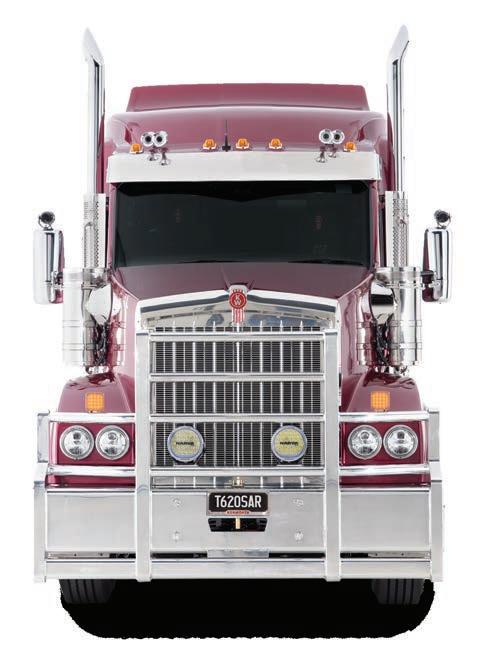
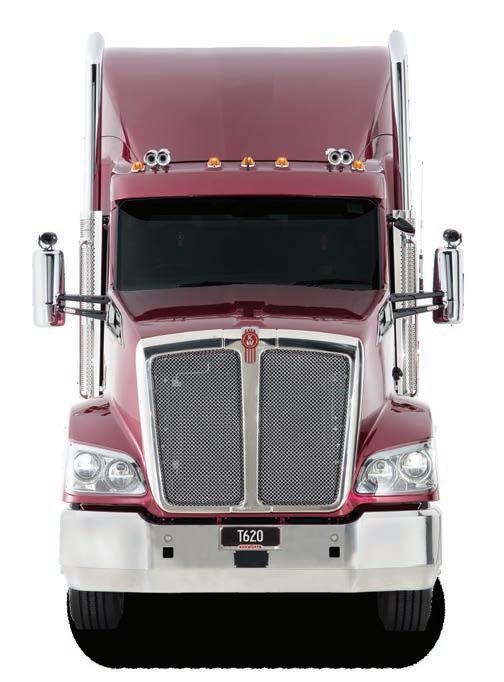
Put the future to work
Kenworth stands by its history of design of trucks that are easy to operate and maintain. The new generation Kenworths integrate the latest technology while upholding this philosophy, making our newest models smarter than ever. Put the future to work for your business.
> Federal Govt pledges $1.1B towards low carbon fuels
Low carbon liquid fuels are set to receive a $1.1 billion injection from the Federal Government. The investment, according to a statement issued today, has been made to strengthen supply chains for the more sustainable fuels that can power trucks, cargo ships and planes into the future.
The new ten-year Cleaner Fuels Program will stimulate private investment in Australian onshore production of low carbon liquid fuels, such as renewable diesel and sustainable aviation fuel. The first production of ‘drop-in’ cleaner fuels, which can be directly substituted for existing fuels and work in today’s engines, is estimated by 2029. Australia already possesses the ingredients needed to make cleaner liquid alternatives to fossil fuels, with ready access to feedstocks like canola, sorghum, sugar and waste.
Liquid fuels make up around half of Australia’s national energy use. While Australia exports nearly $4 billion of suitable feedstocks like canola and tallow, the Clean Energy Finance Corporation (CEFC) estimates an Australian low carbon liquid fuel industry could be worth $36 billion
by 2050 Ă highlighting the untapped potential of developing local refining and value-adding capability. The new production-linked incentive builds on the Government’s support through the Sustainable Aviation Fuel Funding Initiative and the Future Made in Australia Innovation Fund.
Recipients will also need to deliver benefits according to the community benefit principles under the Future Made in Australia Act.
The Government said it was also supporting the market by expanding the Guarantee of Origin Scheme to include low carbon liquid fuels and has established a fuel quality standard for renewable diesel.
A recent report from the CEFC found that a mature Australian low carbon liquid fuels industry could deliver around 230 million tonnes CO₂-e in cumulative emissions reduction by 2050. This is equivalent to 2.3 times Australia’s current annual transport emissions, or the annual emissions from 86 million cars.
NatRoad CEO Warren Clark welcomed the announcement which is in line with NatRoad’s recommendations as part of its advocacy efforts.
> Evans Petroleum acquires new Kenworth T420SAR
Fuel and lubricants distributor, Evans Petroleum, has taken delivery of a new Kenworth T420SAR from Hallam Truck Centre.
Received last month, this new unit now marks the 17th Kenworth in the fleet which is put to work moving fuel in and around Gippsland and other parts of Victoria. This T420SAR model, which was launched at the Brisbane Truck Show, stands out among its counterparts.
It features an Australian Design Rules (ADR) 80/04 compliant PACCAR MX-13 engine which delivers 510 horsepower and is paired with an 18-speed Eaton Endurant transmission. These specifications were ideal for Evans

Petroleum General Manager, Stuart Evans.
“We selected this Kenworth model because we like the brand and it aligns with our fleet,” he told Prime Mover “We run other models of Kenworth
“It’s good to see the Federal Government is listening to industry and taking action. NatRoad has been working behind the scenes for years now and thanks the Government and the Departments for making solid progress,” he said. “We have provided multiple submissions recommending low carbon diesel as a key component of the broader plan, and providing monetary support to help kick-start the support and businesses required to reduce heavy vehicle emissions as we transition to net zero.”
Treasurer Jim Chalmers said low carbon liquid fuels are an enormous economic opportunity for Australia.
“It’s about making Australians and our economy big beneficiaries of the global net zero transformation,” said Chalmers. “Developing this industry has potential to make us an indispensable part of growing global net zero supply chains. This is a downpayment on developing an entirely new industry in Australia.
“From the farm to the refinery, from primary production to processing, this will create more jobs and more opportunities for Australian workers and businesses.”
trucks in our fleet and were excited to give the new model a go.”
The new T420SAR also has 75-tonne gross capacity. The truck is being used to cart fuel in a 19-metre Holmwood Highgate tanker from Melbourne fuel terminals throughout Victoria. Other features include a JOST fifth wheel, a greasing system by Groeneveld and stainless steel trims by Longhaul. Ando’s Detailing Services were also engaged to dress up the truck.
“The drivers have certainly been happy with it,” said Evans. “The truck looks good and feels good to them, particularly the transmission and how smooth it is. No one’s complaining at all.”

Kenworth T420SAR.


We’re clearing all stocks of the DAF CF530 at the low price of $249,900* (ex. GST and Gov’t charges). Plus get a $30,000* BP Fuel voucher or 0% finance* (Max. 48 month term). Only while stocks last. See daf.com.au/CFrunout.
DAF CF530 $249,900* *Terms and conditions apply. See daf.com.au/CFrunout.
> Former Kings Transport CEO appointed at Carroll Group
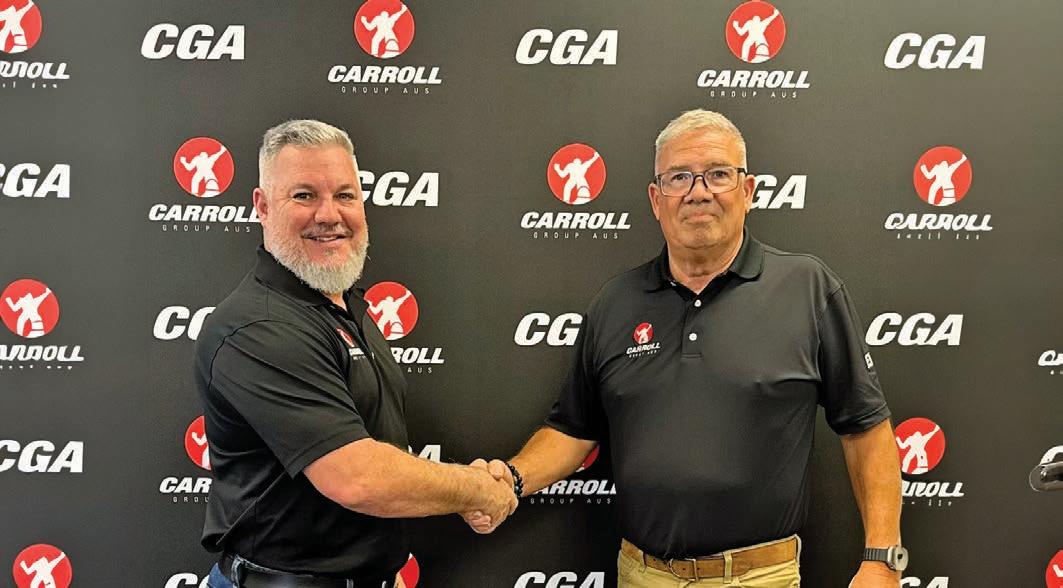
Carroll Group Australia has announced a new Chief Operating Officer (COO).
Experienced road transport and logistics executive, Barry Thompson has accepted a position as the new COO at the company, effective immediately.
Thompson was at Kings Transport for eight years in several senior leadership roles previously.
With 25 years industry experience including roles at Linfox, Thompson is considered proficient in mentoring and coaching executive teams, driving operational excellence, and achieving impactful results across government, private, and nonprofit sectors.
“It’s very good for us,” said Troy Carroll, Carroll Group Managing Director. “As a company we’ve been growing so quickly over the last couple of years, at 30 per cent or even more every year.
“With that type of continual growth, we want to make sure our processes and our people are growing with the company so that our customer service is still second-to-none.”
Considering the fast-changing landscape of the industry and Carroll Group’s upward trajectory within it,
Carroll understood it was time to bring in someone of Thompson’s calibre. “Bringing those layers of management – that C suite in – is important,” said Carroll. “Some people have questioned why I’m doing it given our size. But it’s not about what I’m looking at now, it’s what I want it to be. As we proceed to push to that next level, I want to make sure our customers and partners are getting looked after on the way through.”
Thompson is dedicated to fostering sustainable change and empowering executives to realise their full potential. He told Prime Mover that Carroll Group is an organisation led and run by passionate individuals who are driven to continually improve on delivering excellent solutions to their customers.
“We service our clients in sometimes very challenging supply chains operating in some of Australia’s harshest conditions and we do it reliably and safely earning our customers acknowledgement and praise,” said Thompson.
It was a chief motivator behind Thompson joining the organisation. One of his aims will be to guide and
improve the functional capability of the organisation focusing on operational excellence and customer satisfaction.
“Going forward we aim to target further growth with our existing clients and expand our service offering to a broader market,” said Thompson.
“I bring considerable operational experience from my years in larger scale domestic and multi-national organisation and am excited for our journey ahead.”
Carroll Group also recently appointed Tim Schneider as its new Chief Financial Officer. Schneider previously worked at Asahi, Lion and Toll Group, as its Financial Transformation Manager.
“When we say we’re going to do something we want to ensure that we do it right every time,” said Carroll.
“Barry and Tim bring a wealth of experience to our business — a business we want to be truly generational so that my daughters can one day take it over and it becomes something a lot bigger than perhaps what we all initially envisioned.”
Carroll Group has also injected nine Euro 6 prime movers into its fleet.

Images: Carroll Group.
Troy Carroll with Barry Thompson.
The MAN TGX trucks are hauling PBS 30-metre pocket roadtrains from Brisbane to either Roma or Gladstone daily.
It’s a vote of confidence in the brand which has been fast finding homes in some of the major fleets across the country.
“We went to the MAN for the safety features they have got such as crash detection and lane assist and the suite of other systems in them,” said Carroll. “But also for the fuel economy which is appealing and reduced fuel burn being a Euro 6 phase II engine. With the second series of that engine the emissions are really low on that truck.”
Carroll is awaiting an annual data report that is presented to him internally by his operations staff but in terms of fuel burn numbers it’s very much a case of so far, so good. “Hence the reason why we bought the trucks. We knew the fuel burn was going to roughly be with the
roadtrains on it and compare it to the Euro 5 engines on the task and even in contrast to some other brands it was a lot better fuel burn,” he said. “Emissions is a huge factor for us as well. We had a goal set for our company to have all Euro 6 by the end of 2025 which we will achieve. ”
Carroll Group is finalising the eventual phase out of its Euro 5 equivalent engines over the next few months.
Carroll said the trucks were sometimes reporting 2.1km/l on HML maximum weights.
The new units have been delivered across different power outputs from 540, 580 and 640hp.
Eight of latest trucks are rated to 90 tonnes to satisfy the PerformanceBased Standards requirement.
The 640hp-rated MAN TGXs are 120-tonne rated. There is one new 640hp in the fleet with two more due later this year.
The trucks have been handled from
the Penske Brisbane dealership through Sales Manager Jayme Deves. “That’s a really good strong relationship for us. We don’t just buy trucks. If anything goes wrong with those trucks I just call Jayme and he’s on top of it. It’s one point of call for me – that’s it.”
Driver feedback is undeniable having been heavily skewed by the benefits of comfort the MAN TGX prime mover offers. The powertrain is also proving a noteworthy feature.
“If you put it to the equivalent of another European brand the actual torque of the MAN is really strong,” said Carroll. “The drivers love how it takes off with a load on it. It’s a lot better than the other brands. It’s literally the driveability of the truck that they are raving about. Though it’s got an air ride cab you don’t get what the drivers call the washing machine movement. It’s really quite a smooth ride in the cab.”


> Autonomous tech company expands deal with Canadian retail giant
Gatik, a provider of autonomous freight for regional logistics networks, has announced a significant expansion of its commercial partnership with Loblaw, Canada’s largest retailer. Marking a milestone for the autonomous trucking industry, the companies have signed a first-of-its-kind, multi-year growth agreement to deploy Gatik’s autonomous fleet across Loblaw’s distribution network in the Greater Toronto Area (GTA). Under the initial phase of the expansion, 20 autonomous trucks equipped with Gatik’s next generation sensor suite will be deployed by the end of 2025, with a further 30 autonomous trucks to be deployed by the end of 2026, creating a scalable platform for future growth phases.
This growth agreement signifies the largest planned roll-out of autonomous trucks in North America, a move that transitions Gatik and Loblaw from initial deployment to commercial operations at scale, an industry-first in the autonomous vehicle (AV) sector.
The expanded fleet will initially be deployed with safety drivers onboard, before transitioning to driverless operations across Loblaw’s regional distribution networks in the GTA, delivering goods to over 300 Loblaw stores. Under the expanded partnership, Loblaw has made a strategic investment in Gatik, strengthening Loblaw’s commitment to scaling Gatik’s autonomous solution within its
extensive supply chain and helping to rapidly accelerate fleet expansion and geographic growth within Loblaw’s priority markets.
Gatik and Loblaw previously made history in 2022 with the deployment of Canada’s first driverless commercial fleet, setting the foundation for last month’s historic expansion.
“This is a transformational moment, not just for Gatik and Loblaw, but for the autonomous trucking sector globally,” said Gautam Narang, CEO and CoFounder of Gatik. “It’s the first time a major retailer has transitioned from pilot to commercial scale with autonomous trucks, directly addressing Canada’s growing driver shortage, delivering the true benefits of autonomous logistics - reliability, safety and scalability - to millions of Canadians.
“Loblaw’s investment is a powerful endorsement of our market-leading AI Driver, Gatik’s purpose-built technology that has logged extensive miles on public roads while maintaining an exemplary safety record, and underscores our commitment to revolutionising regional distribution through intelligent, autonomous solutions.”
Loblaw Companies Limited Chief Administrator Rob Wiebe recognised the expanded partnership as a significant step forward in its commitment to innovation and supply chain sustainability. “Autonomous logistics will enable us to move more orders more frequently
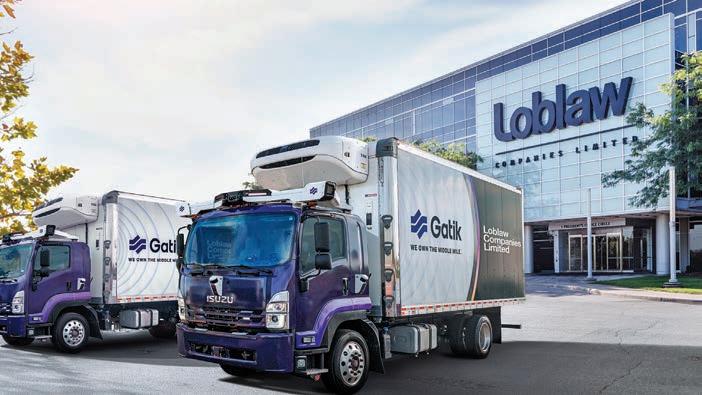
for our customers,” said Wiebe. “We are excited to continue leading the way nationally in retail distribution with Gatik’s groundbreaking technology which has already been proven across our operations.”
This expansion leverages Gatik’s proprietary Gatik Driver, “a scalable and interpretable AI driver” purpose-built for autonomous trucks proven in real-world commercial operations per a company statement. The new fleet will include cold chain-ready vehicles optimised for the movement of time-sensitive grocery and household items.
In preparation for Gatik’s multiyear expansion with Loblaw, Gatik worked closely with the Ministry of Transportation of Ontario (MTO) to inform the development of the Automated Commercial Motor Vehicle (ACMV) Pilot Program, a new provincial regulatory framework that recently launched on 1 August, 2025 and enables the operation of Gatik’s medium-duty autonomous trucks on all surface streets and highways in the province.
With the ACMV Program now in effect, Gatik and Loblaw are well positioned to continue to scale autonomous driving operations.
The ACMV Program has been carefully developed to facilitate the safe and rapid roll-out of autonomous trucks in Ontario, ensuring that the province continues to lead the way nationally in transportation innovation. Gatik’s regional network approach with Freight-Only (driverless) operations underway in markets such as Texas, Ontario, Arkansas and Arizona.
Last year Isuzu Motors agreed to further enhance the development of the North American autonomous driving business announcing it would invest US$30 million in Gatik. The agreement between the two companies focuses on the development of middle mile autonomous driving and will include the design and development of a new chassis that ensures safety when equipped with an autonomous driving system.
Gatik.
Isuzu Motors struck a deal with Gatik last year.
Fuso’s PPE gear for EV.
> New EV PPE pioneered by Fuso
Mitsubishi Fuso Truck and Buck Corporation (MFTBC) has developed the world’s first personal protective equipment (PPE) designed specifically for operations involving electric vehicles (EVs) — known as ARCTECT GEAR for EV. Jointly developed with Japanese manufacturer, Midori Anzen, and global material science company, W.L. Gore & Associates G.K. (GORE), the PPE has been designed to accommodate an increasing number of EV maintenance requirements as the technology becomes more commonplace. Scheduled for rollout at select overseas service centres in 2026, ARCTECT GEAR for EV has been designed for use in high-voltage environments like EV workshops, balancing safety and comfort in equal measure. Specifically, all PPE used for EV maintenance needs to meet several critical needs in a workshop setting. The equipment must offer flexibility for working in tight spaces, provide effective
temperature and moisture control in enclosed areas, and deliver consistent protection for frequent transitions between high-voltage and low-voltage systems. Additionally, the equipment must also not significantly deteriorate its safety performance throughout its intended service life.
The garment satisfies these needs by incorporating GORE Japan’s PYRAD Fabrics by GORE-TEX LABS, a highperformance fabric engineered to be lightweight and moisture permeable while offering protection against arc discharge. Drawing on more than 70 years of safety equipment development, Midori Anzen collaborated with GORE Japan to develop high-voltage protection without compromising comfort and mobility. The PPE has already been certified under multiple international standards including arc flash protection.
MFTBC’s development of ARCTECT GEAR for EV is the latest of the
KEEPING YOU COOL
HEAVY DUTY SOLUTIONS TO BEAT THE HEAT THIS SUMMER
We’ve sourced quality ranges and partnered with industry leading brands to stock the world’s biggest brands in heavy duty air conditioning. The best in compressors, condensers, evaporators, fans and belts, fittings, hose, receiver driers, consumables and workshop equipment for all types of heavy duty vehicles, and fleets of all sizes.
You’re also guaranteed reliability with our OE First Fit solutions. Get the right parts for the correct application to keep you moving.
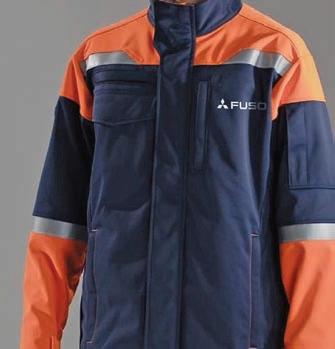
company’s efforts to establish an EV ecosystem where EV trucks are as easily operated as conventional diesel vehicles. This is part of a larger plan to contribute to the Japanese Government’s target to realise a decarbonised society by 2050. “As we expand our eCanter operations globally and work toward Japan’s 2050 decarbonisation goals, innovations like this remind me that the future of transportation includes everyone who builds, maintains, and services these vehicles safely,” said Karl Deppen, President & CEO Mitsubishi Fuso Truck & Bus Corporation. “We’re planning to introduce this gear to our overseas service centres in 2026, with Midori Anzen bringing it to market broadly.”
More than parts, NAPA is with you for the long haul. We make it our business to drive yours. Visit napaparts.com.au
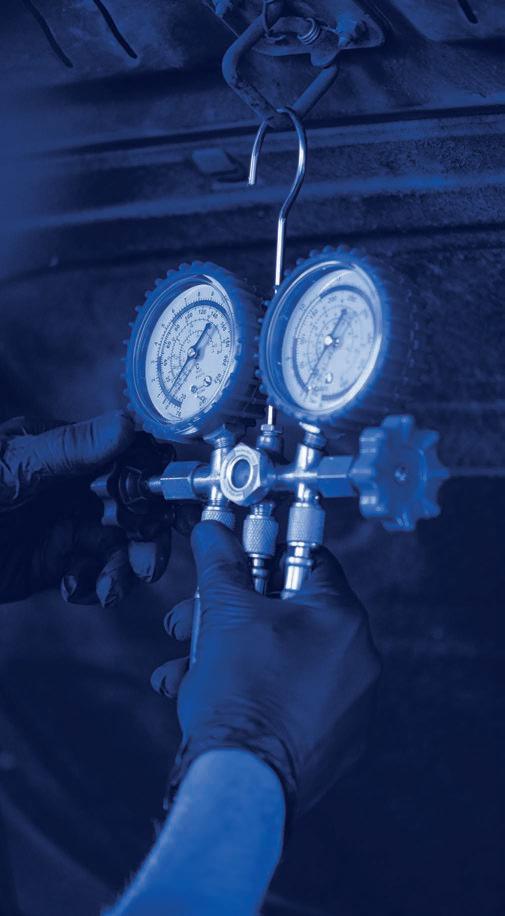
Image: Daimler Truck.

HISTORY MAKING
Wettenhalls this year celebrates a rich 100-year history, but as a generational enterprise it has an unwavering understanding of where it wants to be in the future.
Scania R 620 V8 hauling an A-double with precast 16-tonne concrete culverts.
All transport companies are alike. No two, however, are the same. In the case of the 100-year-old Wettenhalls, the fundamentals always have applied even if the systems and protocols are vastly different than they were in 1925. That immense journey is chartered in a sumptuous new coffee table book launched by the Colac-born company this month in which the anniversary celebrations, initially teased with the unveiling of a newly minted commemorative

Kenworth T909 sporting a refrigerated trailer by Freighter Group adorned in a monochromatic livery of historic images, are set to culminate with several events to mark the occasion including a family eld day and a gala dinner. The book authored by Charles Happell is a well-researched volume that lays out the origins and remarkable history of Wettenhalls across four generations commencing with Reginald Amezdroz and a two-tonne Federal Knight tray truck. The son of Swiss migrants, Reginald began freighting vats of cream from the western district dairy he worked, daily to Melbourne when a government regulation prohibited the transportation of perishable goods on passenger trains. Today the national business though
still plying its trade predominantly in Victoria, by concentrating heavily in the regional area southwest of Geelong, runs dedicated contract logistics operations in Sydney, Brisbane and as far north as Townsville in drastically different applications. The Altona depot opened in 2020 and is one of four main company-owned sites it operates in the state. Each includes a state-of-the-art workshop, automatic truck wash, cross-dock and warehousing facilities, of ces and solar arrays. Not the least impressive thing about its newest facility is the selection of prodigious high productivity units that come and go. Though not widely publicised, Wettenhalls is a keen proponent of Performance-Based Standards and through its specialty

Environmental Solutions Division
(ESD) has made increasing strides in this area of the business in recent years.
“It continues to grow sustainably,” says Wettenhalls Managing Director Martin Kelly. “In that market there are a lot of Blue Chip players. Once you start working with some of those on innovative solutions the opportunities just snowball.”
Now with a dedicated team double shifted that features driver-trainers, an operations manager and eet controller, ESD works around the clock, having initially been bolted on to another division when it was rst created in 2017.
“My dad always said there was money to be made in waste,” says Martin. “It seemed like there was a need in the marketplace for someone who specialises in it. When I joined the company that was in the back of my mind and from there some of the relationships with these larger players in the market have really grown.” A little of over three years ago,
Wettenhalls purchased a business in the Southern Highlands of New South Wales that services a blast furnace owned by Boral. Here they use B-double walking oor trailers to transport recycled wood to the furnace for a third-party.
Another growth area for the business is in servicing infrastructure and major projects. Today it accounts for a signi cant amount of company revenue. The increased capacity of longer combinations has afforded the eet the exibility to move bulk goods, and raw materials like steel on split quad axle trailers combined with 8x4 prime movers. At present Wettenhalls is deploying six A-doubles for the North East Link to complement its single trailer eet. They are moving up to 20 precast concrete sections on any given day. Maximum weight is 85.5 tonnes under PBS, but is much less on these combinations due to overall height. These combinations are pulled by Scania V8 prime movers and use a low pro le drop deck trailer
joining two 45-foot trailers coupled as an A-double with ballasts. They are something to behold even only when being moved around the yard. With a multitude of single trailer applications still of paramount importance to the business, Wettenhalls had a benchmark from which it could refer as it looked to scale capacity during the planning and execution process. It took about six months according to Martin.
“Because these culverts are coming from regional Victoria, we wanted to do half the amount of the trips,” he says. “Once you know those parameters you know what it is you’re pushing for. Talking to Kenny [an experienced Wettenhalls driver] using an A-Double would burn about 1.5 times the amount of fuel as a single trailer. Clearly, emissions have been reduced massively, not to mention the cost.”
While there are a few rigids operating regionally to load general freight mainly in the western district, Wettenhalls is rst and foremost a prime mover eet. Altona alone handles some 50 heavy rigs mainly hauling skels and palletised freight.
“We’ve got a lot of PBS gear that might not be running at the optimum weights initially, but you build it in the anticipation of infrastructure upgrades,” says Martin. “It’s a continual process of pushing the boundaries.”
He adds, “Basically every customer that we’ve got in the ESD division is being serviced with high productivity vehicles be it A-doubles or 20-metre quadaxle walking oor combinations with high capacity.”
Infrastructure projects in a country that looks to build for escalating population offer opportunities beyond the backyard.
Growth achieved, most crucially, with balance, is the company’s lodestar.
“That pipeline is really strong in terms of tender activity and there are huge opportunities depending on the amount of growth,” says Martin. “We are really interested in sustainable growth and being able to integrate those jobs into the business without
Wettenhalls Managing Director Martin Kelly.
breaking anything.
We could easily double in size quickly but if your systems and processes and people can’t keep up with it then what’s the point?”
The bulk food component of the business remains its largest concern.
Wettenhalls has highly sophisticated systems in place for dry, chilled and frozen goods in sharp contrast to the ice and wet sacks Reg Amezdroz used to cool the Dairymaster steel cans of cream moved on those very rst trips a century ago.
Working with some regional food factories, Wettenhalls is often a one-stop shop in which they will also warehouse, in addition provide transport, for its customers. More recently it rolled out Thomax, a new warehouse management system, across the business. It’s integrated with the SAP system of a key account. Endto-end, the process at the factory has been optimised so that carrying the raw materials and packaging can be provided at the Wettenhalls warehouse. Having a container transport capability is also an advantage.
“We can unpack the containers, transport the raws to the factory and then move the nished goods out of it,” says Martin. “It makes that whole process seamless. We’re always looking for ways to add more value for our customer relationships.”
Pumpa Manufacturing have delivered several PBS-approved mezzanine-style
dry freight vans 4.6 metres in height and 20-metres long for light bulk food. Along with Barker Trailers, they are preferred partners for specialised bulk equipment such as bins and walking oors.
Freighter Group and Vawdrey are more often engaged for the curtainsider spec. Wettenhalls uses Marcus Coleman of Tiger Spider as their engineering rm on much of their innovative heavy vehicle designs.
“That’s how we build our knowledge talking to guys like that who are in the know as well as the trailer manufacturers,” adds Martin. That relationship goes back long before road transport to university where Marcus was actually Martin’s football coach at Uni Blues in the highly rated Australian Rules Amateurs league. Martin’s journey at Wettenhalls of cially began in 2014 when he came across after spending the initial seven years of his career at PricewaterhouseCoopers where he was working in the private clients division. He is a self-described “country boy who married into the Amezdroz Family” with a professional services background. The previous year, as a result of a management buy-out, largely funded by the Amezdroz Family, Wettenhalls was purchased back from private equity, the grounds for affording a revised leadership structure. Wettenhalls had, around the time, acquired Rodon Transport,
a Brooklyn-based out t which served as its entrée into the construction sector and later on projects for big consortiums like the West Gate Tunnel, regional rail upgrades and Victoria’s ‘Big Build’. Martin basically cut his teeth in the organisation initially on the integration, and then running, of that business unit.
“That helped me build my transport speci c skills,” he recalls. “I had a good background in dealing with nance and numbers and the skills learnt growing up on our family farm translate well. But for transport itself I really needed to live and breathe it.”
When Chief Executive Of cer Mike Lean, announced he was leaving last year Martin put his hand up for the Managing Director’s role knowing he had a great team of staff and mentors around him.
The eet, until earlier this year, was evenly split between PACCAR – mainly DAF CFs – and Scania product, when Head of Fleet Marcus Prato, introduced several Mercedes-Benz Actros units. Speci cally for the new Actros units, Wettenhalls has been able to negotiate decisive exibilities around their contract maintenance arrangements.
The Kenworth is quite a statement particularly in a eet of some 200 trucks, few of them small, nearly all of them cabover top shelf European variants. Approximately 70 per cent of its mobile assets are powered by Euro 6 standard drivetrains.
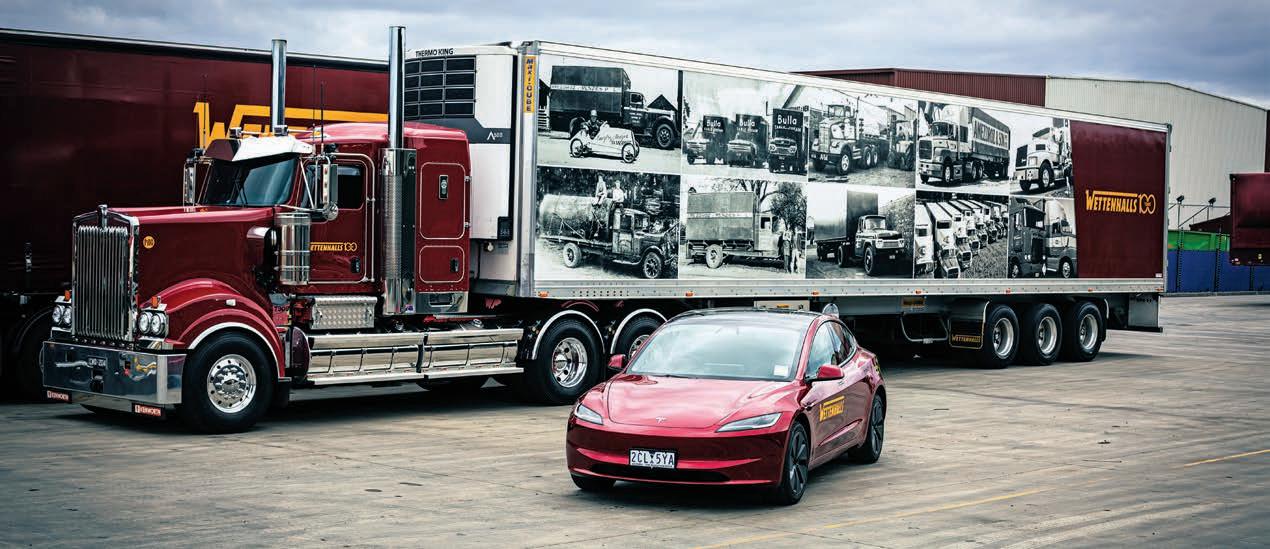
Depot diversity: Kenworth T909 with a Tesla Model 3.
The rst Kenworth in the eet arrived in 1967 when it had no more than a handful of trucks. This followed the introduction of its rst refrigerated van purchased circa 1965 second-hand from Freighter. A new Transicold unit was suspended under the chassis. Up until then the company had been building its perishable goods gear inhouse, with the cream carrying trailers framed, insulated then sheeted with plywood.
The Wettenhalls 100 Years book details, through dozens of interviews with extended family and long serving staff,
a mosaic of memories, historic nuggets and once buried anecdotes such as the border hopping operation into Moama adapted in the mid-1970s to comply with disruptive government trade protectionism of the railways.
That rst green and cream truck differs notably from the maroon and yellow vehicles today, one of the best colour schemes of any heavy vehicle eet on the road. It can now also be seen on three recently introduced Tesla Model 3 company cars that are perfectly suited for high frequency carpooling and inter depot travel. The cars can be charged comfortably in three hours on site using electricity from the solar systems.
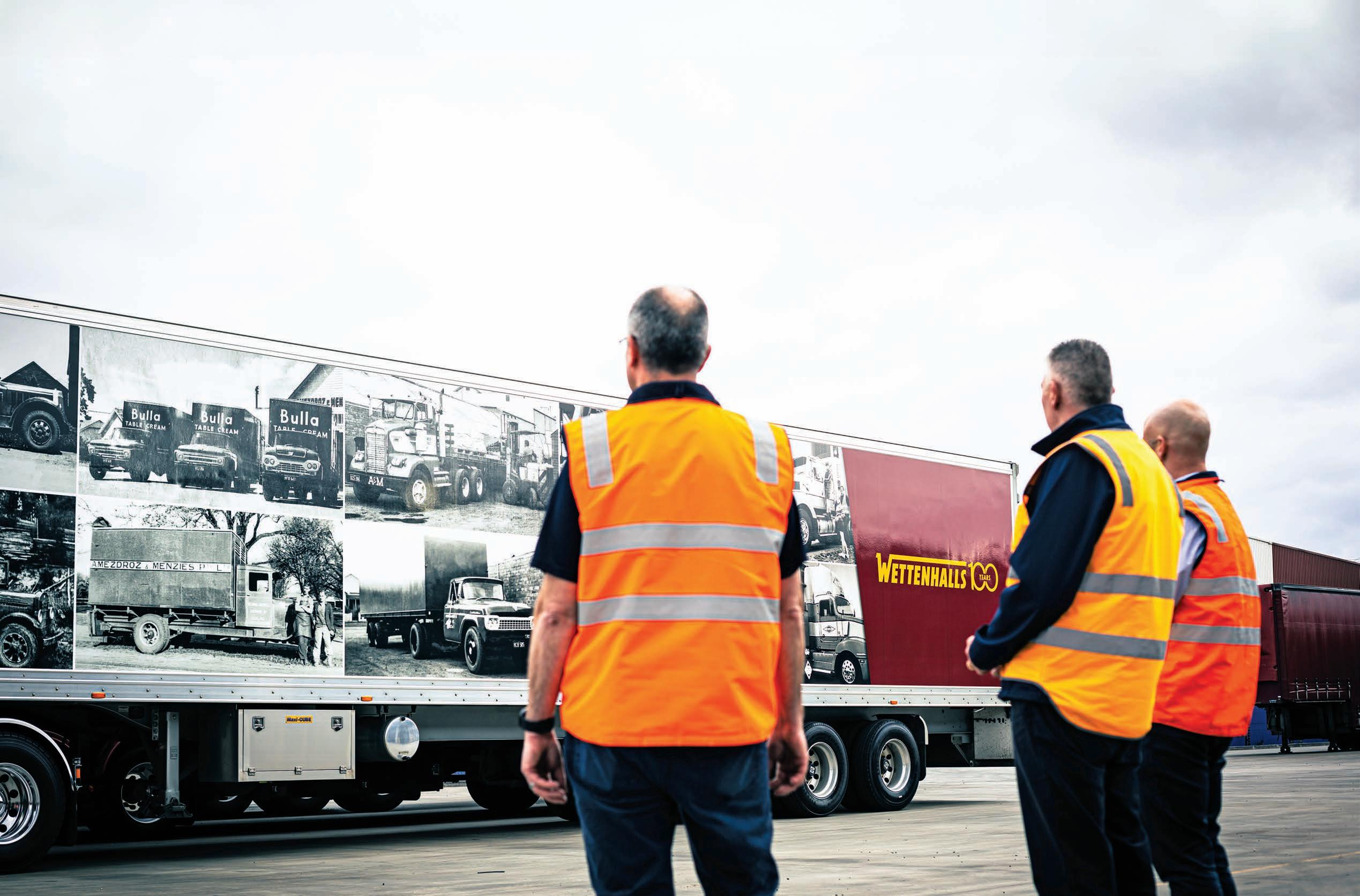
“There’s always a conversation about fuel allowances or fuel cards or company cars and it helps to get around all of that sustainably,” says Martin. “Often, they are used during daytime and you come back and plug them in. That’s been more than suf cient.”
Wettenhalls is also avidly pursuing low emission battery electric and fuel cell vehicle options.
In addition to being nalists in two other categories: Women in Leadership and Investment in People, Wettenhalls was also recognised as the Application of Technology category winner at the Australian Freight Industry Awards (AFIAs) for
Marcus Prato, Chief Operations Officer Gary Peatling, Martin Kelly in Altona.
its successful adoption and rollout of JOST’s JSK37 sensor coupling across a subset of its heavy vehicle eet.
Every truck, meanwhile, in the entire eet is tted with a Guardian driver fatigue camera from Seeing Machines. Wettenhalls was one of the rst companies to invest in the technology. Telematics partner MTData is also utilised for its latest 7000AI Series device that monitors driver behaviour and vehicle data, streamlining communications between drivers and their eet managers during transport journeys. The latest MTData units have ve external and internal cameras.
“The Guardian system has de nitely saved lives,” says Martin. “We see all the footage. You’ll interview the driver after they’ve been told to pullover, and they don’t even realise they’ve had a microsleep. It’s an expensive outlay at
the start but if you don’t have them, it’s a lot worse — It’s cheap in that context.”
Innovations, like the aforesaid, are nothing new at the business. In fact, they date as far back to the Amezdroz & Menzies prewar out t applauded in the in 1939 by the Colac Herald for what it described as “dependability and speed, combined with a proper regard for the handling of goods entrusted to their care.”
That goes for people, too. Wettenhalls has several recognition and reward programs the pinnacle of which is the Ned Club for 20-year servants to the business. Of which there were well over 20 drivers inducted into the club launched late last year. Named in honour of Ned Amezdroz, Brett Amezdroz’s late father,

the Ned Club will have its second inaugural dinner later this month. Brett, who is Martin’s father-in-law, currently serves on the Board as a NonExecutive Director.
Heritage is of vast importance not only to maintaining Wettenhalls’ strong multi-generational culture but in forging future directions. While the consumer economy is sustained by population growth transport and logistics for food will continue to grow according to Martin.
“Where we’ve got specialised solutions, and specialised equipment which itself is a barrier to entry, those are the markets we like to play in,” says Martin. “In 30 years-time a lot of the commodities we transport today I think we’ll still be transporting. It’ll just be smarter, more ef cient, safer.”
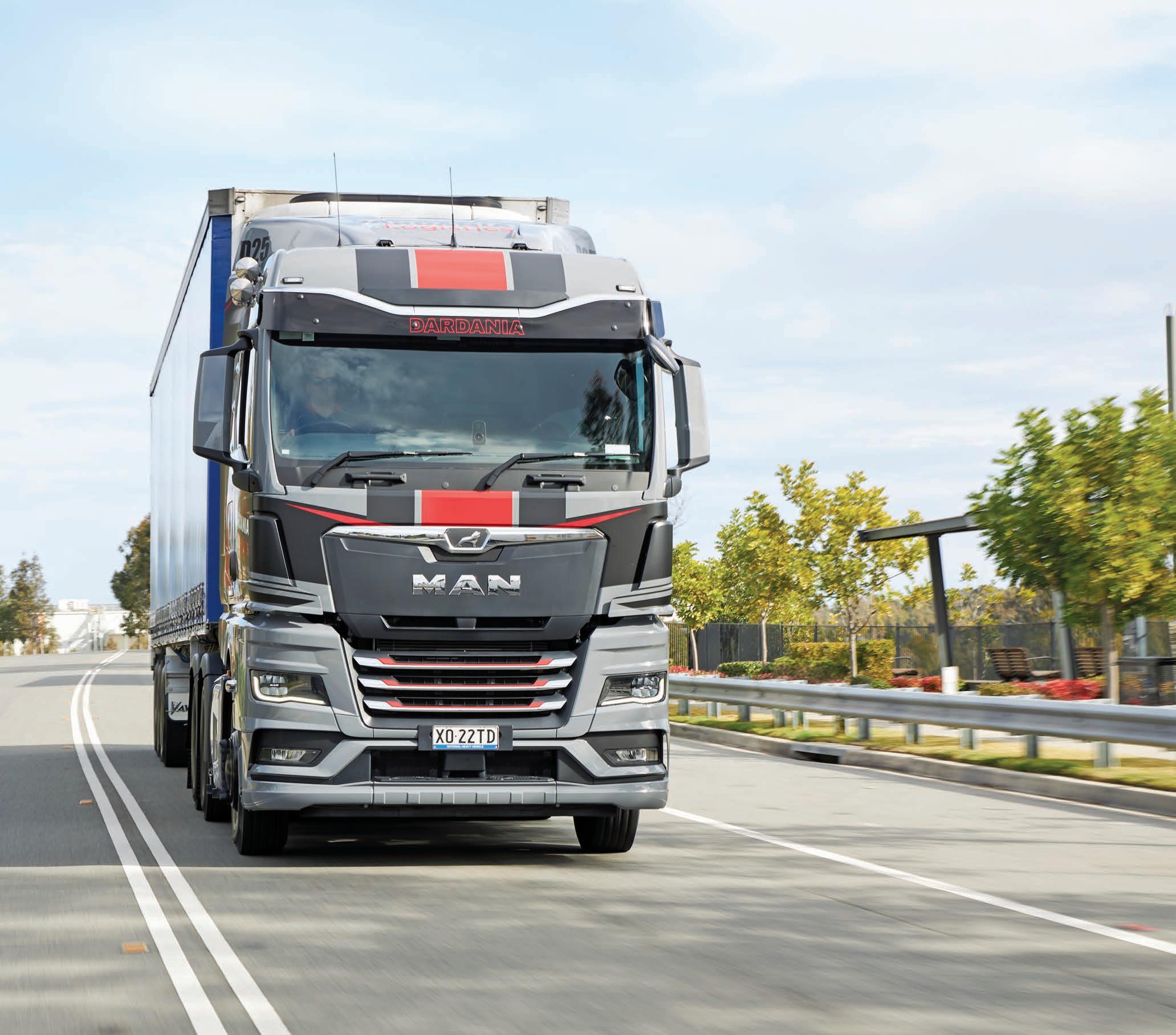
MAN TGX
en route to a distribution centre in western Sydney.
MARKET CORNERING THE
Sydney-based Dardania Logistics continues to optimise its truck eet with new prime movers from MAN as it celebrates its 30th anniversary this year.

Culture is an avowed bellwether at the best of companies. At Dardania Logistics it’s considered a strength. This year the business celebrates turning 30. Like many medium-size operations to have survived the caprices of industry and economies over three decades its origin is humble. The rst calling for the farming family was fresh produce. Transport was a means of moving freight from Sydney’s west to the markets and some businesses directly associated with it. In the early days Jimmy and Hysni Dardania steered the business founded by their father. Later on, a third brother, Adam, joined them. The transition to transport took place in the mid ‘90s and by 1996 the business was a fully- edged transport operator. Trucking by then was lucrative enough to increase the scale of operations.
Ever since it has ourished from strictly a produce carrier to a complete logistics operation delivering into majors with a client portfolio just as impressive for its longevity as it is the names: Coles, Woolworths, Aldi, Metcash to name just a few.
In the quick turnaround temperature control area pertaining to Sydney metro distribution Managing Director Tim Dardania con rms a number of Dardania Logistics’ long-term clients have got customers who have been with the business for over 25 years.
“Our top ten are probably all over ten years’ service with us,” he says. “People don’t stick around unless you’re doing the right thing. That’s usually the way.”
Being the youngest in the family, Tim had the bene t of attending university, where he studied economics, and a few other pursuits such as the Army Reserve, before returning to the family business. That was in 2007. His return was a catalyst for the company to embark on a new direction.
“In a way it helped sway us to make decisions based on the numbers rather than emotions,” he recalls.
“I saw trucks as a tool more than a

toy and they could be used to chase pro tability.”
At that stage the business had started servicing several clients outside the Sydney markets. The path into freight management and goods delivery by then was well underway.
Come 2015 it was a fully- edged logistics provider in the temperature control sphere offering warehousing, cold storage and refrigerated transport.
The Sydney-centric business excels in point-to-point inbound deliveries to distribution centres carrying chilled and dry goods. While it does handle general freight as a niche, customised solution for most customers, it prioritises fast moving consumer goods (FMCG) such as produce and confectionary.
“That was one of things that I pushed hard for during the time,” recalls Tim. “Instead of doing everything, we just needed to focus on what we do well and do it well enough and stick to that and make money from that.”
Recently Dardania Logistics took over a temp-controlled facility of almost 20,000m2 in Eastern Creek which has allowed it to gear up its operations and
capability, signi cantly. Being in the geographical centre of western Sydney’s industrial heartland the site is within a ten-kilometre radius of all the major food chain distribution centres. The business works around the clock with three active shifts. Fleet utilisation, because of this, takes precedence.
“Trucks are like aeroplanes. You’ve got to keep them moving otherwise they are just costing you money,” says Tim.
“That’s always been a big thing for me. At the end of the day it’s going to be costing you insurance and registration while it sits there for 12 hours so you probably should keep moving it, keep utilising it.”
On that front, the company maintains strict fealty to Penske Australia, more speci cally MAN trucks from which it operates nearly 40 prime movers. The eet has always revolved around European trucks. But in the last 15 years Tim says they have migrated the entire eet to MAN in the heavy range.
“The MAN TGS 26.540 has been the backbone of our eet. In recent years, we have spec’d our range closer to the larger end with TGX510, 540s, 580s and recently the 640- agship,” he says.
“We have a combination of the TGS and TGX larger cab variant which we use for longer distance jobs. We don’t do a lot of linehaul but when we do, the TGX is deployed as it offers better driver comfort.”
In the main part these longer trips might involve direct farm pickups to the mid north coast of NSW or out to Bathurst, Orange or Canberra. That’s essentially the perimeter of daily operations notwithstanding the odd job down to Melbourne or up to Brisbane. For the main part it’s the quick cross-docking distribution model that Dardania Logistics excels. They have 12 MAN 26.540 prime movers with two more on order.
Tim likes the midsize cabin as do his drivers.
“Drivers seem to be very happy with their performance and turn around and from a business point of view we’re very happy with their economy,” he says. “It’s our go-to workhorse in that the 540 gives you the best of both worlds — the easier single trailer stuff and the heavier B-double work. It kind of marries us up perfectly that range.” That versatility makes it something of
Tim Dardania.

a poster child. In any event, that’s how Tim likes to describe it to Penske.
“You can throw a 540 at both ends of the application without sacri cing fuel or power in a way,” he says. “The lower cab makes it easier to climb in and out of and the drivers love the combination of agility and power.”
With the truck spec centred around high volume, quick turnaround applications the vehicles are still rated to 90-tonnes GCM. The two latest additions in the eet are a pair of MAN TGX640hp powered by an inline sixcylinder engine displacing 15.2 litres. These come in a high-cab GX sleeper spec with an array of creature comforts to look after the driver when they are away from home. The cab offers a maximum standing height of 2,150mm and lower bed length of 2,000mm.
Dardania Logistics is running the 640s on a B-double linehaul application up and down the east coast.
“While the largest powerplant we operated before them were 580s, the extra power is certainly not going to waste,” he says. “We also believe they will prepare us for additional PBS combinations.”
On the opposite end of the spectrum,
a new MAN TGS 26.440 has been deployed for locations that are typically hard-to-reach for heavy vehicles like the Cruise Ship terminal in Circular Quay.
The upfront cost of a truck is the number one factor ahead of a purchasing decision closely followed by total life cost. Generally, a prime mover at Dardania Logistics enjoys a life cycle of between four and ve years.
“We don’t clock up large kilometres that other eets do. So that time span is our sweet spot to maximise the value of a trade in or the secondary life of the truck,” explains Tim. Those are probably the three main metrics: the initial purchase price, the overall cost and obviously the fuel economy the vehicle offers. Labour and fuel being the two main cost drivers followed closely by maintenance costs.”
The MANs are serviced to the OEM recommendation of 70,000km/annual intervals. Penske has provided On-site servicing, which Tim says has been helpful in reducing downtime and added a very convenient bene t to its servicing regime. They deal with Chipping Norton Penske in Sydney. “Gordon Taylor looks after us along with his team — they are very
responsive to our needs and requests. Gordon is pretty much everything you want in a salesperson,” says Tim. “He’s got that old school customer service about him. He will pick up the phone. He delivers what he promises. He won’t tell you stories along the way. People like that these days are hard to nd.” So too are experienced truck drivers and high calibre trained personnel, but Tim has noticed improvements over the last 12 months. It’s a good time of year to have key staf ng roles lled as the business navigates the peak period that will last until March looking after large multinationals like Unilever, Aldi and Ferrero, who it still counts as clients after more than a decade. That’s the Dardania Logistics point of difference according to Tim — its agility and commitment to 100 per cent DIFOT (delivery in full on time).
“We’ve always retained strong customer loyalty and they’ve come to expect it in return,” he says. “My biggest selling point these days when I’m sitting in front of a new customer: ‘Here’s my top ten and this is how long they’ve been with us. Make of that what you will.’”

AND
LIGHT EASY
Transporting the lightest of loads brings its own challenges.
Typically, most transport operators look to maximise their payloads and run at the upper limits of their legal weights. In contrast, Melbournebased Polyfoam Australia’s products are probably the lightest by weight and largest by volume encountered in the road transport industry.
The company, which celebrates 40 years in business in 2025, is owned and run by Bruce and Simon Pickett. Polyfoam’s core business is manufacturing expanded polystyrene packaging products for use in the produce, seafood, medical, and food industries as well as for construction and insulating products.
Polyfoam also produces a range of moulded Expanded Polypropylene (EPP) packaging, speci cally designed for the protection of expensive pieces of equipment.
Polyfoam Australia has manufacturing facilities in Victoria, New South Wales, Queensland, and South Australia and now has two factories in Tasmania which provide key support for the local salmon export industry through production of expanded polystyrene foam packing boxes.
“Our product is so light, even a fully loaded 14-pallet rigid or 24 pallet drop-deck semi-trailer would not add even a tonne to the total mass of the combination,” says Polyfoam’s General
Manager Nick Tandy.
Around ve years ago, Polyfoam turned to Scania for the supply of rigid trucks to transport the expanded polystyrene food boxes because their previous Japanese supplier could no longer offer a suitable vehicle.
“We made the mistake of buying very light weight trucks in consideration of carrying light weight products,” says Nick. “What we needed was a lightweight truck that could also be stable on the road when it’s loaded or unloaded, because we often have no backload.”
The rst Scania to join the Polyfoam eet was a P 280 rigid, and subsequent rigid trucks have shifted up to the P 320 speci cation, and single and dual axle trailers were added on some routes to maximise the volume of product delivered per journey. Two Scania G 450 prime movers have since been added in combination with drop-deck curtainsider trailers manufactured by Vawdrey.
The low weight, high volume of the loads is due to the fundamental designs of products such as foam food boxes.
“Our boxes have to be strong, so they are as wide at the top as the bottom, which means we can’t nest them and therefore transport more product in a given space,” says Nick. “The boxes for the sh weigh 25 kilograms when full of salmon and ice, and they’re
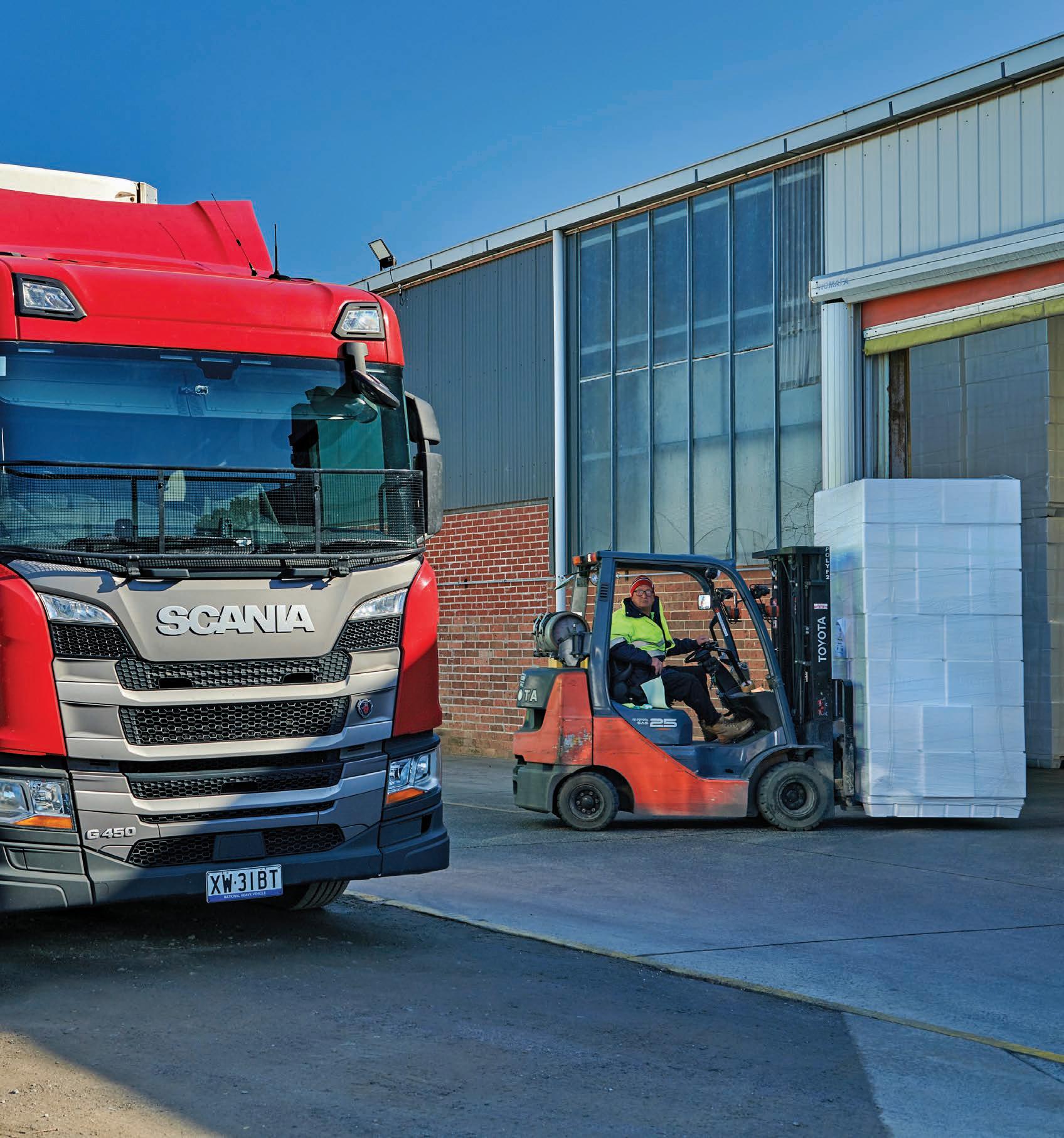
Images: Scania Australia.

One of two new Scania G 450 prime movers.

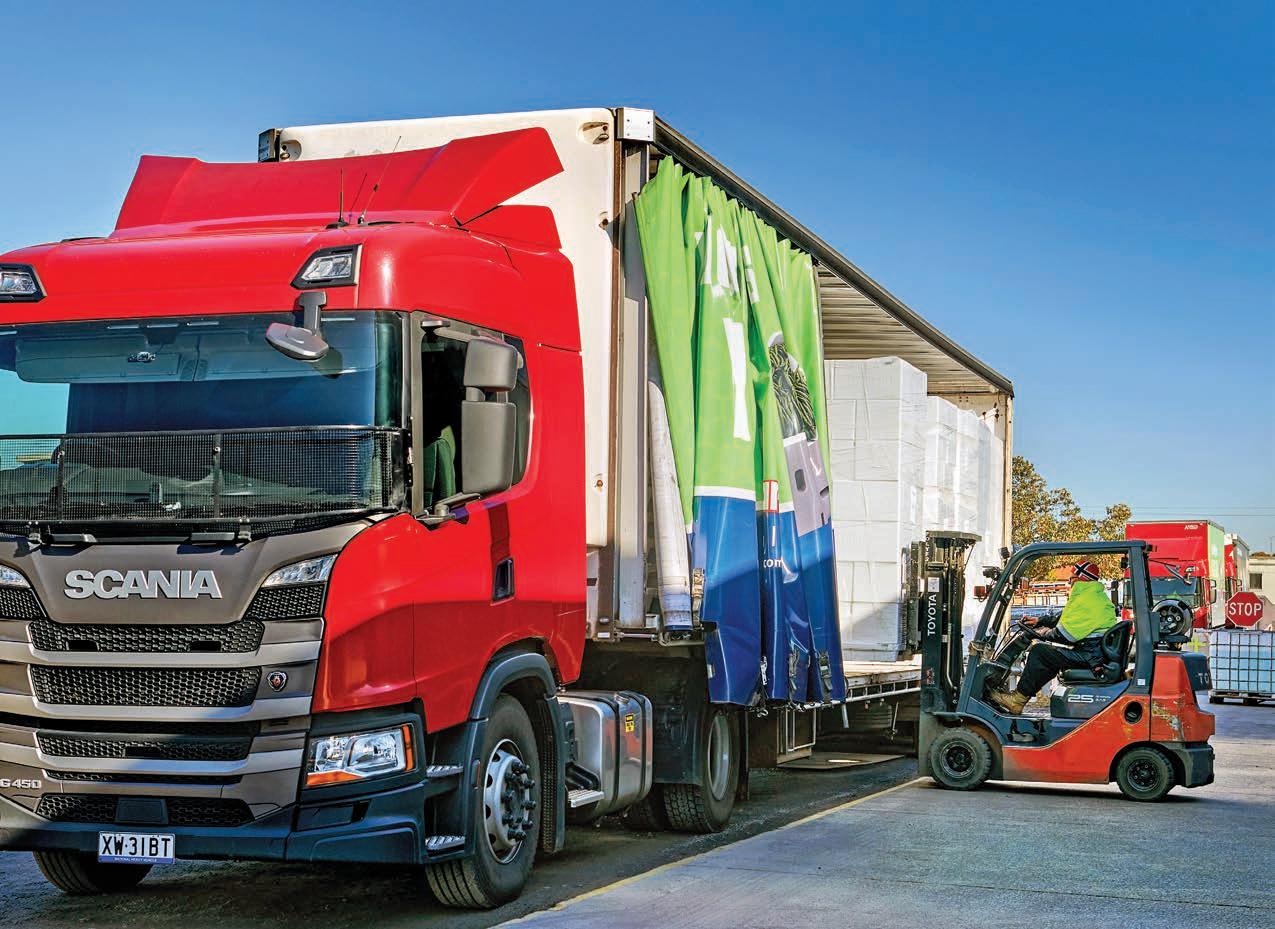
often stacked ten high, so the box at the bottom is supporting 250kg. This is important for our customers, as they need to get the most amount of product in the smallest space to keep their export transport costs to a minimum.”
Polyfoam sells to all the major salmon farmers in Tasmania, who need a robust, leak-free container that will keep their produce fresh. The boxes meet the Australian standard for seafood airfreight approval, which means they won’t leak seawater in the plane.
Foam boxes used for agricultural products are often used in the eld where fresh vegetables such as broccoli are picked straight into the boxes. This contributes to the produce’s freshness and quality when it arrives at market. Due to the combination of light payloads and large surface areas, both rigids and trailers can exhibit the characteristics of large sails that can be affected by cross winds when traversing locations such as across Melbourne’s
Westgate Bridge. The Scanias provide a stable ride, and the inbuilt electronic stability control is always there as a backup if the side winds are too extreme.
The introduction of the Scania trucks to the Polyfoam eet received a good response from the drivers and an ongoing commitment from senior company executives.
“From the start everybody loved the Scanias”, says company Founder Bruce Pickett who, himself, still occasionally drives trucks. “The cabin layout, the access, the simplicity of the vehicle to operate. And it is great to drive. We now have three Scania rigids and two prime movers in Victoria, one Scania prime mover in Bridgewater in Tasmania, one rigid in Westbury in Tasmania at the new factory, and in Queensland I’ve got six rigids in service and two more on order. We’re also introducing Scania to our NSW operation with two going in there, and there will be a new prime mover for Westbury in Tasmania as well.”
The modernisation of the eet incorporating the new Scanias has helped with driver retention and has contributed to the image of the business. From the base in Dandenong South, Polyfoam’s trucks deliver all over Victoria, from Portland to Bairnsdale and up to Shepparton.
The Victorian trucks travel on average 100,000 kilometres annually, while in Queensland each may cover around 200,000kms per year, due to the longer distances involved.
Although weight may not be an issue, wind resistance is an area where the aerodynamic Scanias have an advantage, in combination with the nose cone de ectors tted to the fronts of the rigid and trailer bodies.
“We’re pleased to see that the Scanias are returning better fuel ef ciency than our older trucks, even though the payload is so light,” says Nick.
The Scanias are on contracted repair and maintenance programs providing Polyfoam with the predictability of knowing exactly what the monthly
A 24-pallet dropdeck loaded with foam food boxes.


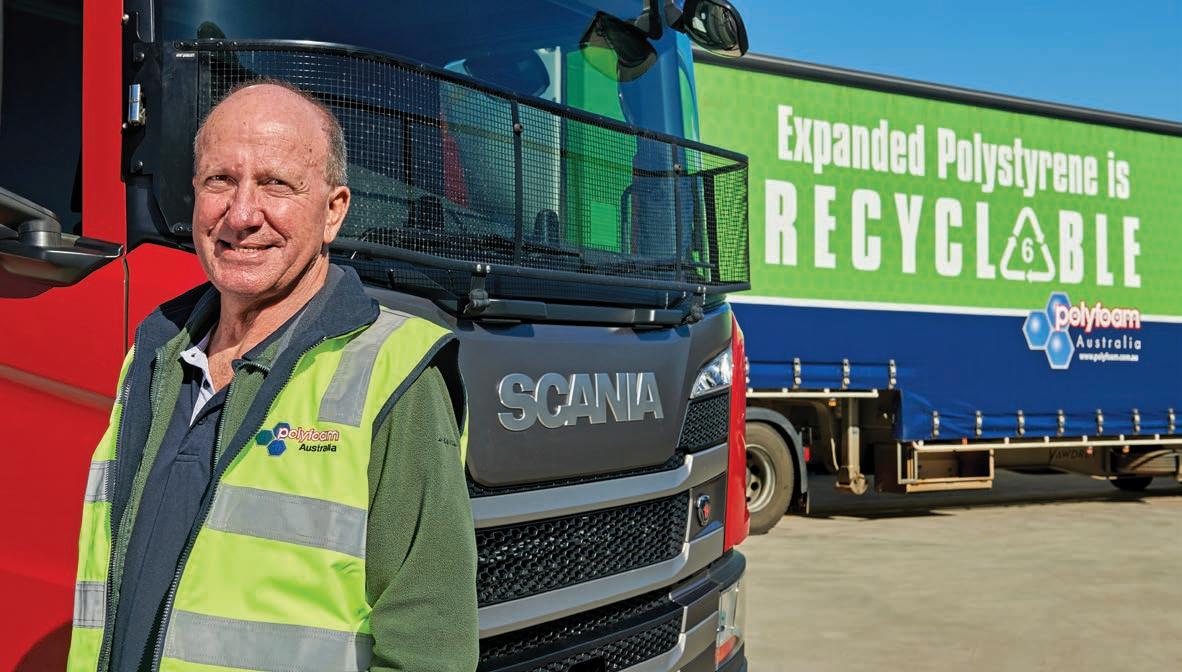
servicing costs are going to be.
The Scanias are expected to be replaced after performing around 700,000 kms.
“They will have had a relatively easy life, of course, although the rigids do deliveries to farms and also to building sites, so they’re often on poor roads and dirt,” says Nick.
Scania’s driver scoring feature is a valuable management tool.
“I get the report every Monday and I go through it,” says Nick. “If I see a lot of harsh braking, I might have a word with the supervisor at a particular site and ask them to talk with their drivers.
Harsh braking and harsh acceleration are things we watch pretty closely. It’s useful to us to provide feedback to the drivers and suggest ‘Hey mate, just settle down’.”
Polyfoam imports the raw materials in granular form from all over the world and then subjects them to steam which uffs them up. After sitting for a period to stabilise, the now uffy granules are then poured into a mould and steamed a second time to fuse them into shape.
“As a business we’re constantly looking for ef ciencies, just like Scania,” says

Nick. “We try all sorts of ways to shave a few grams of base stock out of the design, and we have updated European machinery that can now mould multiple boxes at a time.”
Polyfoam takes its environmental responsibilities seriously and it is committed to helping its customers close the loop in product lifecycle by providing comprehensive endof-life recycling options for all its foam products. Up to nine tonnes per week of recycled foam is ground up to be reused, in combination with some virgin pellet stock, and the recycled material is then turned into the polystyrene pallets on which products such as food boxes are placed for transport or used to make foam
waf e pods for use in construction. A typical unladen wooden pallet weighs around 60kgs, in contrast to the 2kgs of the polystyrene pallets used for Polyfoam’s products.
“Our plastic pallets often weigh more than the load that is strapped to them,” Nick says. “We say that our polystyrene product is more economical to recycle than cardboard, because polystyrene products come back, are ground up and are then ready to reuse.”
The late model Scania trucks are integral in Polyfoam Australia’s provision of practical eco-friendly expanded polystyrene solutions for packaging and construction applications in a growing list of industries.
Polyfoam General Manager Nick Tandy.
New Scania units in Melbourne.

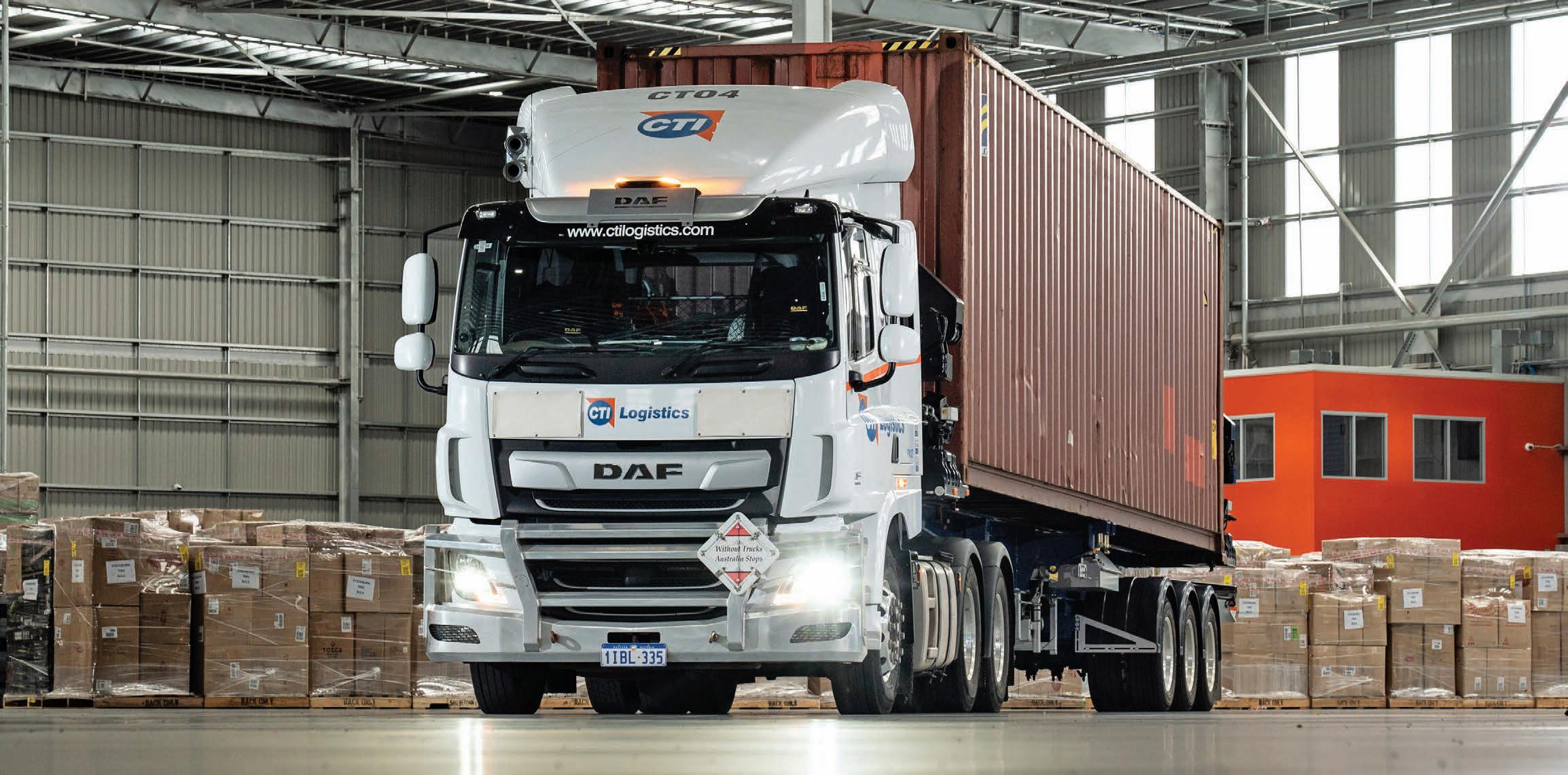
BREAD AND
CTI Logistics has invested in 20 prime movers from DAF in the last 12 months to meet the challenges of its time sensitive schedules that connect directly to interstate and regional networks.
Last year, CTI Logistics needed to re-evaluate new prime movers to support its metro operations in Perth, Adelaide, Melbourne, Sydney and Newcastle. The goal was to nd vehicles that deliver reliability, exibility and strong support from an OEM partner. After a detailed review and trialling an evaluation unit from CJD Equipment, CTI chose to invest in 20 Euro 6 DAF CF450 units.
This decision marked a signi cant shift for CTI. Like many operators, the company had spent several years navigating equipment shortages and unpredictable supply. Replacement
strategies became reactive, dictated by availability rather than planned cycles. According to Mark Cameron, General Manager for CTI, the company has now regained control of its prime mover replacement schedule. “We now know the age bands we want, and we are not just xing spot res,” he says. CTI Logistics is an ASX listed Western Australian company that was founded in 1973. Headquartered in Perth, it operates across interstate transport, regional freight, warehousing, couriers and specialised logistics. Over ve decades, the company has grown from a local courier service into one of the
DAF CF450 in the CTI Logistics container transport division.


AND BUTTER
state’s most recognisable transport and logistics providers, employing more than 1,000 staff across multiple divisions. Its regional freight division connects businesses to more than 175 destinations across the state, handling scheduled services, container work, B-double and triple roadtrain operations and oversize freight.
A key part of the group’s growing national footprint is GMK Logistics, a wholly owned subsidiary of CTI and Australia’s leading logistics supplier to the ooring industry. GMK operates a national transport eet of more than 150 prime movers and
rigid vehicles, servicing customers across every mainland capital city and major regional centres. It also recently took deliveries of new DAF trucks to complement its existing eet, re ecting the same focus on reliability, driver comfort and aftersales support that underpin CTI’s approach.
CTI’s Perth-based eet plays a critical role in the group’s operations. It handles container movements from Fremantle Port, services high volumes of palletised freight across distribution hubs and supports a wide range of commercial, industrial and retail customers across the metropolitan
area and regional WA. The eet covers thousands of kilometres each day, running time sensitive schedules that connect directly to interstate and regional networks.
In this environment, reliability, manoeuvrability and driver con dence are essential.
To evaluate alternatives, CTI looked beyond engine performance and cabin comfort. The deciding factors included aftersales support, parts availability and the strength of the dealership network.
“Most modern trucks are comparable in safety features and fuel ef ciency,”
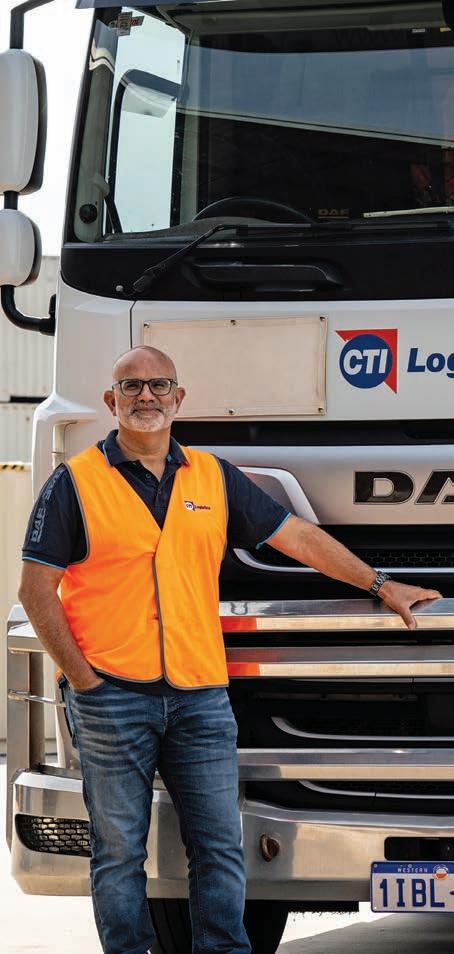
Mark explains. “The differentiator for us is having a dealer and support system that is responsive and technically capable.” Conversations with other Perth operators supported the choice, and the trial vehicle con rmed that the CF450 met the company’s operational needs.
DAF Sales Manager at CJD Equipment, Kes Moopanar, played a key role in matching the speci cation to CTI’s duty cycles and providing technical insights during the evaluation. Once the trial unit demonstrated the expected performance, CTI moved to a full order. The new trucks replaced aging brands that had served in the eet for many years.
The 20 CF450s are now deployed across CTI’s metro distribution network in Perth. They handle container work off the wharf, pull sideloaders, haul curtainsiders and at tops, and tackle tight CBD access runs with frequent dock work and laneway reversing. Some units are also assigned
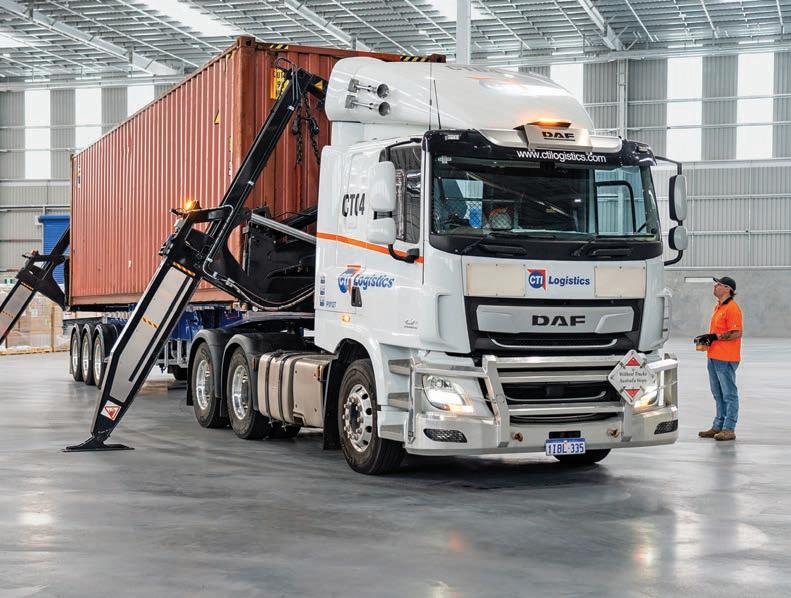
to regional legs, including B-double work into the southwest, which is an important route in CTI’s network.
“Manoeuvrability is critical,” Mark notes. “Some inner-city sites leave very little room, and the DAFs are holding up well in those constraints.”
The trucks’ ability to cross between city distribution and short regional tasks gives planners more options and keeps assets productive across the week.
The DAF CF450 is powered by the PACCAR MX-11 engine producing 330kW and 2,100Nm of torque, paired with a 12-speed TraXon automated transmission. This combination is well suited to CTI’s mix of urban and short regional haul work. Euro 6 engine technology has also brought noticeable fuel ef ciency and emission improvements, supporting CTI’s environmental commitments while maintaining strong pulling power in a variety of duty cycles.
Driver acceptance was an early focus. CTI engaged the DAF driver trainer to work alongside its own supervisors so that crews could get the most from the new trucks. Operators quickly noticed improvements in power delivery, turning circle and ride
quality compared to older models. The cabins offer improved ergonomics and visibility, which is particularly useful in the CBD where precision and clear sightlines are essential. The right-hand side of the steering wheel allows drivers to adjust the variable speed limiter, vehicle speed settings and adaptive cruise control. Downhill speed control is straightforward and the right-hand column switch engages the engine brake with four steps. A clear master display shows operating information and alerts without clutter. These touches reduce confusion and support better maintenance discipline. The transmission and engine braking systems are easy to use. Drivers can switch from automatic to manual mode with the eco function off, then return to automatic with eco activated when the task allows. Manual upshifts are commanded by moving the right hand switch up and downshifts by pressing it down. The blue band on the rev counter shows the engine speed that is optimised during manual gear changes while the engine brake is engaged. In busy metro work these intuitive controls help drivers maintain control and comfort
Images: CTI Logistics
Steelbro SB 363 Sidelifter in action.
Mark Cameron.

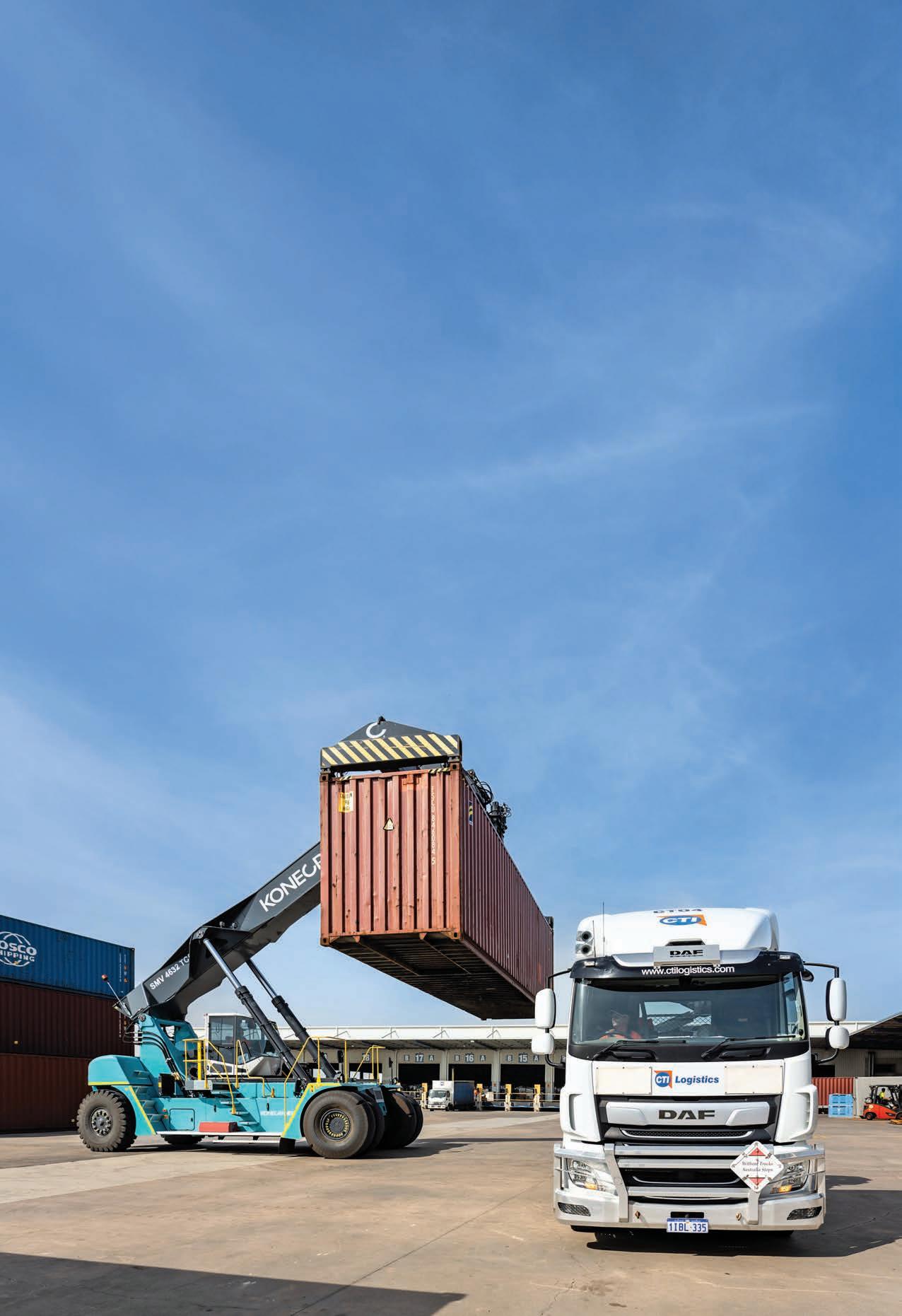
throughout the day.
The trucks’ duty cycles highlight why these details matter. Off the wharf they shuttle containers between terminals and distribution centres under tight schedules. In the CBD they reverse into laneways and tight docks where every centimetre counts. On short regional legs they maintain steady cruise performance. The DAF CF450 has proven capable across all these scenarios, reinforcing CTI’s con dence in the decision.
Regulation and compliance continue to tighten across the industry and CTI has adapted accordingly. Contractors are held to the same standards as company drivers, particularly for vehicle maintenance and emissions reporting. “Managing contractors now requires as much attention as managing our own people,” Mark says. The business uses a uni ed compliance framework to track equipment history, service intervals
and defect recti cation to the same standard regardless of ownership. This consistency supports safer operations and gives customers con dence that every vehicle bearing the CTI brand is up to the task.
With clearer age bands and a stronger pipeline of incoming vehicles, CTI can schedule changeovers during quieter periods, limit short-term hire and reduce disruption to customer schedules. Aligning speci cations around the DAF CF450 has simpli ed training, which reduces downtime and improves whole of life cost control.
Early telematics data points to steady ef ciency gains on comparable routes. As the new trucks settle into their work, CTI is monitoring fuel consumption, service intervals and driver feedback to con rm expected gains over the previous speci cation. The practical bene ts are already visible to customers. With better uptime and improved drivability, the
eet is hitting tight windows more consistently and reducing the need for rebooking. Drivers report fewer delays during start up checks thanks to the straightforward displays and clearer alerts.
CTI’s decision to invest in 20 DAF CF450s shows renewed con dence in planning and eet control. With strong OEM support and capable equipment in service, the business is positioned to deliver reliably across metro and regional operations. By standardising core speci cations and focusing on reliability, support and training, CTI is setting itself up for long-term operational ef ciency and growth. The combination of disciplined replacement planning, responsive aftersales support and engaged drivers is giving the eet team the tools they need to keep freight moving for customers across Western Australia and across the national network.
DAF CF450 at CTI Logistics’ Hazelmere depot.
THREE’S COMPANY
Plumbers’ Co-Op’s interstate value proposition has recently been strengthened with the delivery of six new Fuso Canters with the help of STM Trucks & Machinery.
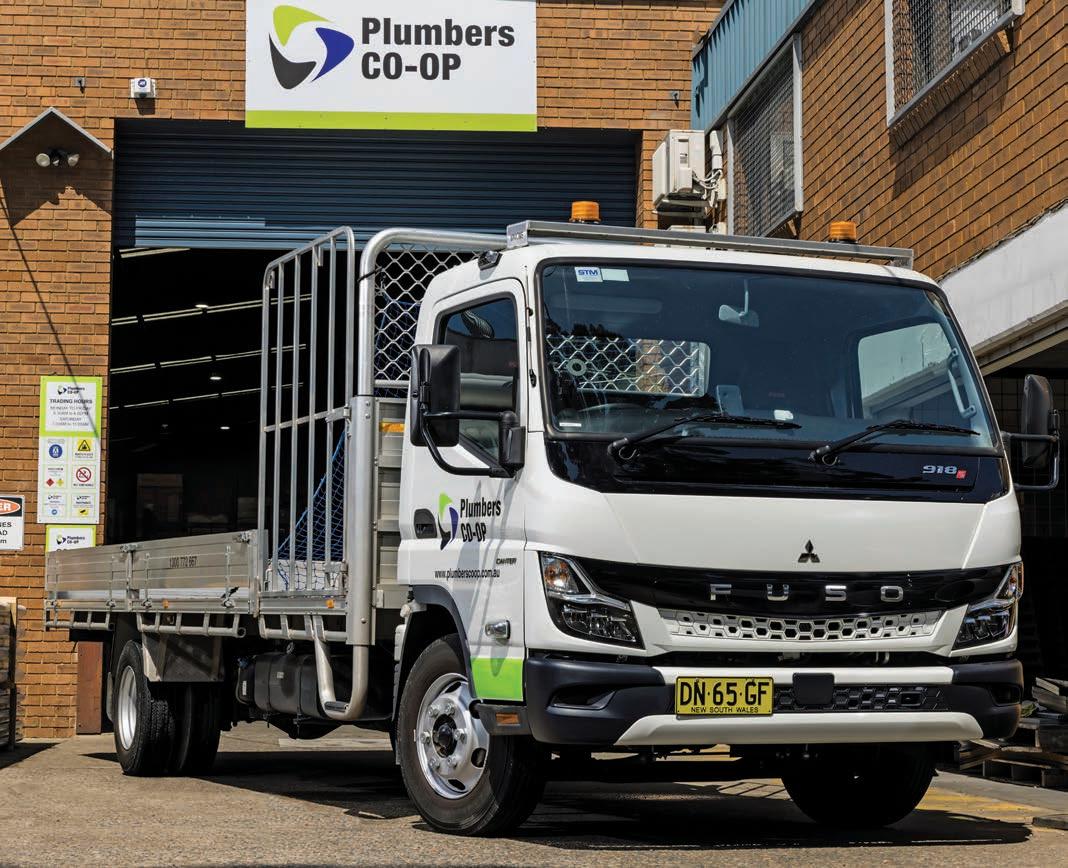
In the world of business, cooperative organisations stand out for their unique company structures which strive to cater to the needs of its members. Simply put — and as the name suggests — co-ops are owned and operated together by those who work for them, aiming to achieve common interests through shared company
control. Problems are heard and solved, while pro ts are allocated evenly among members, as opposed to a few external investors, for the betterment of the company.
In this way, co-ops have a rich history of ensuring fairness and equity across many industries and contexts, one of them being Australia’s plumbing
sector in the form of Plumbers’ CoOp. Established in Sydney in 1955, this co-op was formed in the face of entities which threatened competition in the plumbing profession, according to its NSW Operations Manager, Dan Campbell.
“Plumbers’ Co-Op was founded to keep two big monopolies in the industry
Images: Daimler Truck.
Fuso Canter 918, one of 20 from the brand in the fleet.
honest, and to make sure every worker was given a fair go,” he says. “We always want more members, too — the more, the merrier.”
Throughout its 70 years of operations, Plumbers’ Co-Op’s righteous role in the industry has attracted many members, necessitating a spread along the country’s east. The organisation now boasts 27 branches between New South Wales, Victoria and Queensland, offering delivery services, trade-counter services and sales support to many plumbing communities.
An encompassing value proposition like this one has enabled Plumbers’ Co-Op to endure its fair share of market changes, which are tethered to the different demands of each plumber within the organisation.
“The market we’re in is continually shifting,” Dan explains. “We’re a highservice industry. We feel that we’re exible and nimble enough to keep up with the demands that occur on-site, from our tier-one builders right down to the guys who just need a little water heater delivered. We play in all of these spaces, and we make sure they’re represented for our members.”
But playing in all of these spaces as Dan puts it is a tall order. Enter Fuso, with the help of the STM Trucks & Machinery (STM) dealership.
Plumbers’ Co-Op began its partnership with Fuso some 20 years ago, when one of its members and eet management employees was on the prowl for an ef cient and reliable equipment carting service.
“One guy on our team was looking for some durable units to help move tools and materials between sites,” Dan recalls. “While looking, he found Fuso through STM. And we’ve been strongly acquainted with both companies ever since.”
Having played the role of a middleman in the partnership for decades, STM works diligently to communicate the equipment and design needs of Plumbers’ Co-Op to Fuso, and the resulting truck orders have greatly contributed to the organisation’s
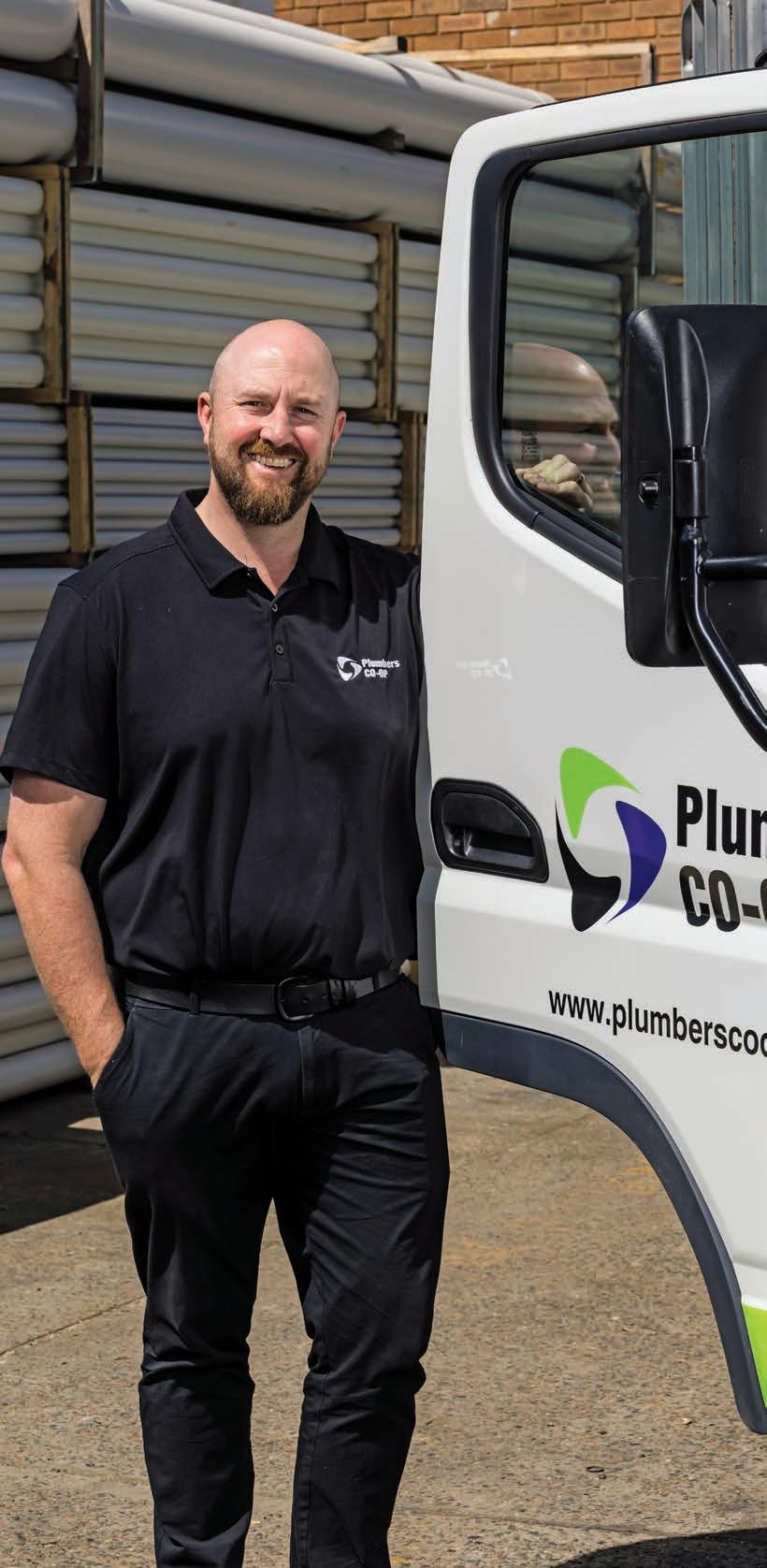
NSW Operations Manager, Dan Campbell.
operational tenacity in the face of changing demand.
“The guys at STM are instrumental in helping us deliver what we promise to our members,” Dan says. “And the reliability and durability that Fuso provides us is second to none. These qualities are a must in our operations, as our trucks are getting beat up every single day when they’re on the road.”
This reliability and durability is present across 20 Fuso trucks of varying applications in Plumbers’ Co-Op’s 27-unit eet. The smaller but no less essential six Fuso Canters were delivered to the organisation in two batches between August and September of this year.
Affectionately known as the workhorses of Plumbers’ Co-Op’s operation, the new Fuso Canters have been specially ordered to take on a constant workload, carting an assortment of equipment primarily across Sydney — as well as up and down Australia’s south coast — every day.
“Our six Fuso Canters work as our class of light vehicles, running around and doing everything for us on a day-to-day basis,” Dan says. “They’re extremely versatile, being physically exible enough to complete runs in tighter metropolitan areas, while also being reliable enough to move some bigger pieces of equipment when needed. This quality gives us options with how to use the trucks, so they’re tasked with completing deliveries across a very wide range of sites.”
The Fuso Canters are tted with Fuso’s own three-litre turbo diesel 4P10 engines and, while boasting a Gross Vehicle Mass (GVM) of 8.5 tonnes, have been de-rated to allow as much use as possible among Plumbers’ CoOp’s members who only have standard car licences as opposed to heavy rigid licences.
The Fuso Canters contain a standard 4750-milimetre wheelbase, as well as a customised 6.5-metre-long extended aluminium tray for carrying a range of plumbing equipment.
“Our Fuso Canters cart pipes up to six
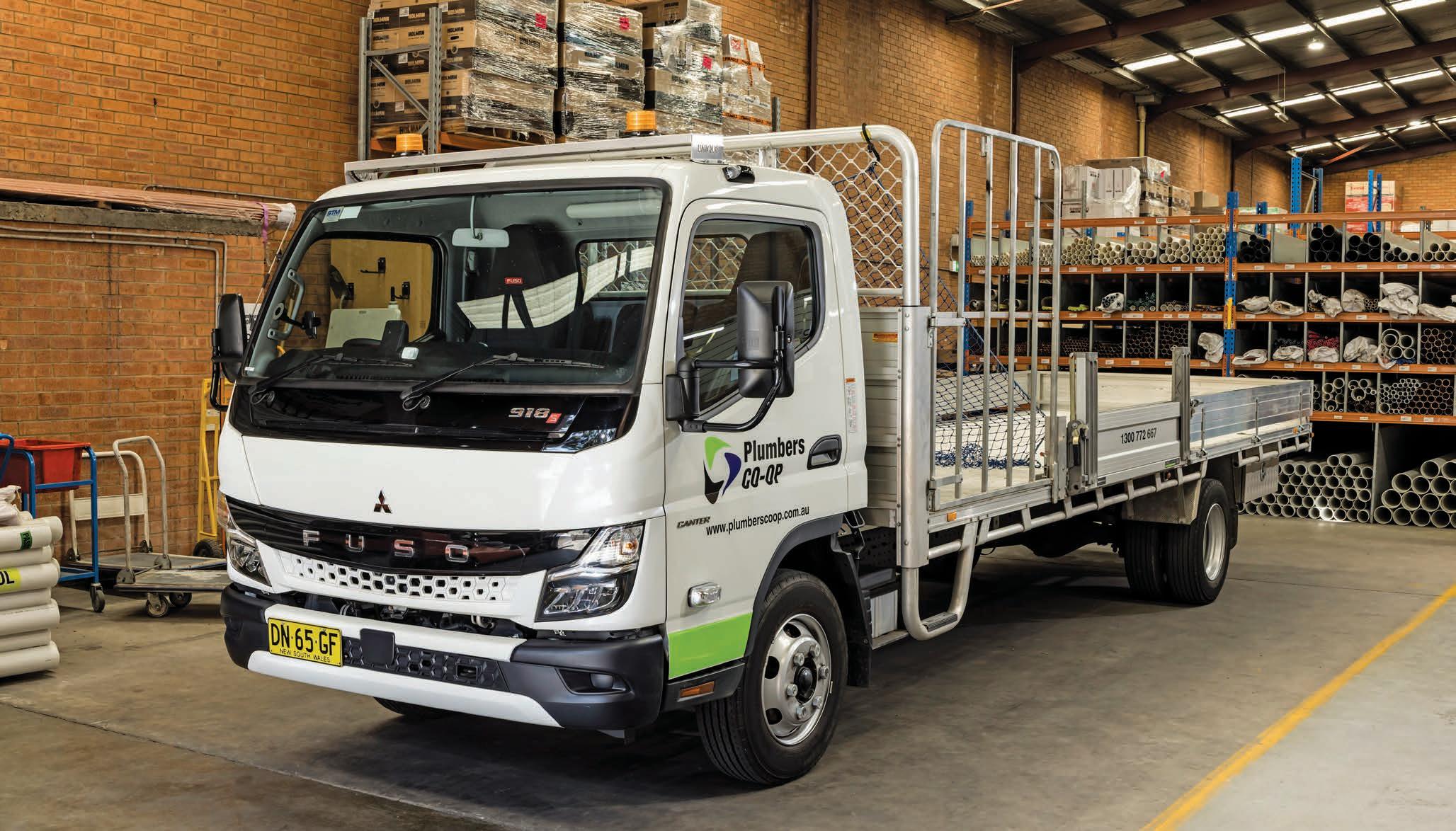
metres in length, so the inclusion of that customised tray on the Canters is critical for us,” Dan emphasises. “But the trays also help with everything else that we carry.”
This ‘everything else’ is an extensive list. It includes boxes, general ttings, pump stations, toilets, basins and concrete products, among other items.
“There’s no plumbing item that we won’t carry in these trucks,” Dan continues. “We move some really weird and wonderful things.”
The Fuso Canters’ carting allowance is further bolstered by the tment of Lyco Loaders. These loaders, mounted to the trucks’ aluminium trays, are manually operated tailgate lifting devices which
use cable winches to lift and carry hot water heater bodies speci cally.
All of this payload is supported through Fuso’s lightweight chassis builds, which, in the eyes of STM Sales Manager, Bruno Gerace, gives the manufacturer and corresponding customers a competitive edge in the industry.
“Fuso champions the lightest chassis on the market,” he says. “This gives Plumbers’ Co-Op the biggest payload possible in that speci c size.”
While this ef ciency is integral to Plumbers’ Co-Op’s operations, Dan and the organisation’s members are just as satis ed with the Fuso Canters’ safety and comfort.
A customised 6.5-metre-long extended aluminium tray carries an array of varied equipment.

“Given the amount of time our team spends on the road, driver comfort is very important to our operation,”
Dan says. “The Canters, while being comfortably designed, further deliver this comfort and peace of mind by being safe to use.
“The Canters feature a three-point touch design and drive very well. Our drivers haven’t faced any mechanical issues while on the road. This keeps our guys happy when they’re doing their jobs, which is essential.”
While the Fuso Canters are used for Plumbers’ Co-Op’s everyday operations, the organisation also runs other Fuso trucks, equipped with different customisations for more niche
uses. Plumbers’ Co-Op’s Fuso Fighter 1124s, for example, offer a heavier-duty application with a GVM of 11 tonnes and a seven-metre tray for carting larger plumbing materials. Meanwhile, the largest Fuso trucks in the organisation’s eet accommodate a maximum 24 tonnes nose to tail, and include a crane mounted between the truck’s body and cab to move particular tools and materials.
While the applications for all of these Fuso units can take them across very demanding distances as part of Plumbers’ Co-Op’s interstate network, the trucks are all entitled to quality care which speci cally maintains longevity.
“Fuso runs a ve-year,
200,000-kilometre warranty, and 30,000-kilometre service intervals for its units once a year,” says STM Sales Executive, Angus Williams. “This is more than any of its competitors.”
The decades of service from Fuso and STM have been vital to the operations of Plumbers’ Co-Op and its many members. This trifecta is tried, true and not going anywhere anytime soon.
“We at Plumbers’ Co-Op have a safe and secure eet, but we’re certainly open to upgrading when needed,”
Dan says. “There are some older trucks which are doing just ne now but may need replacing soon. When that time comes, and we need a new unit, we know exactly who we’ll be going to.”
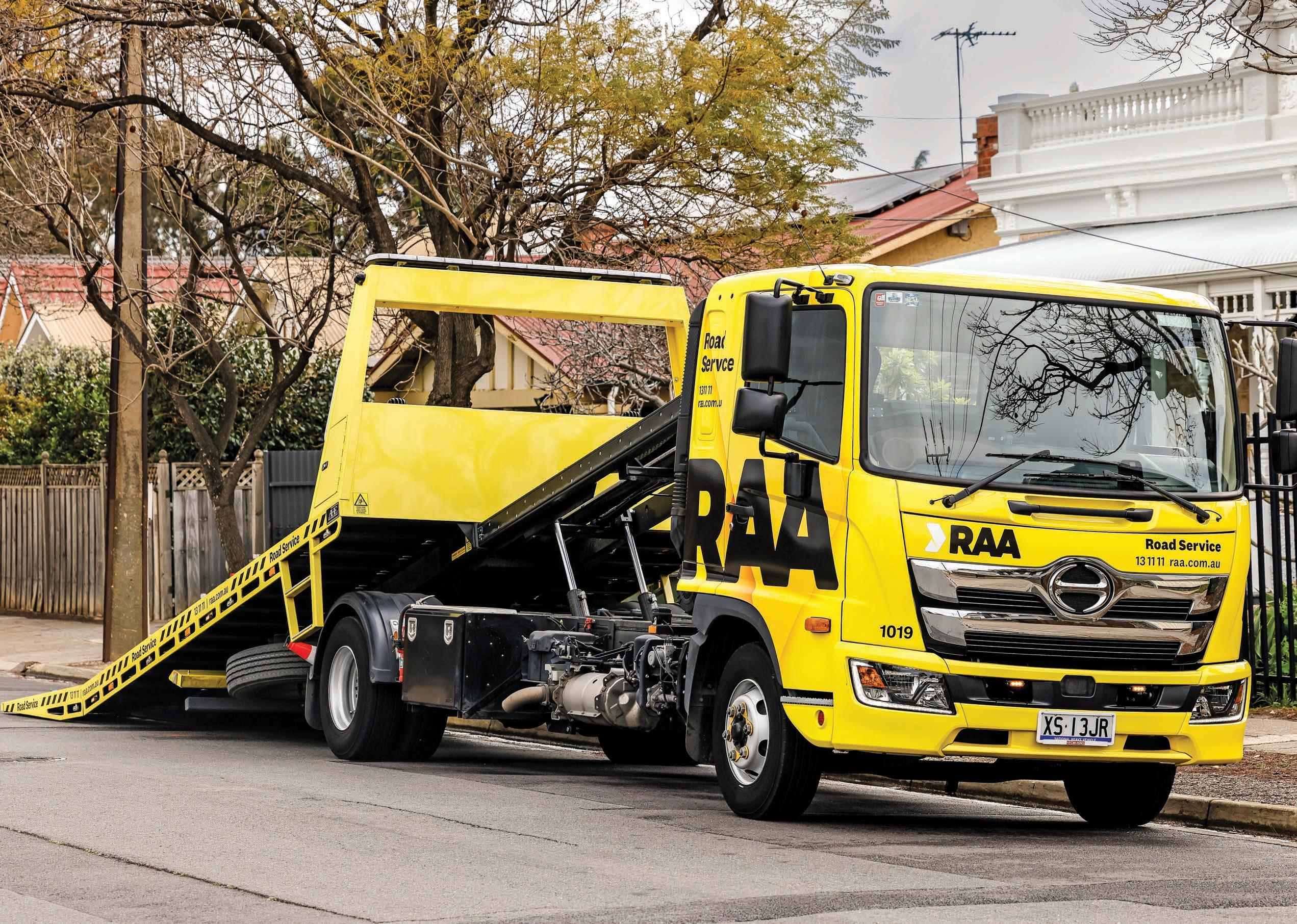
HAPPY ACCIDENTS

The Hino tow trucks can carry up to 3.5 tonnes on a 6.5-metre Ahrns tilt slide tray.
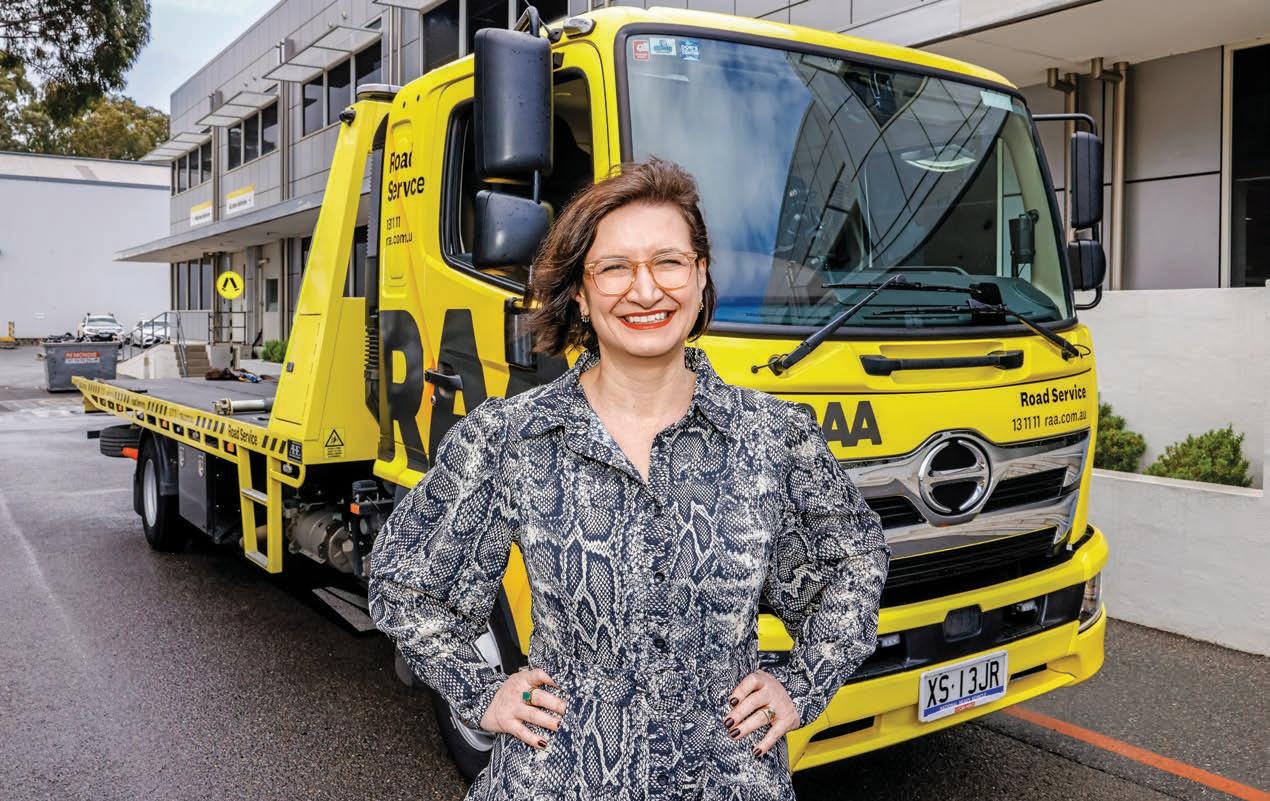
Formed in the days of dirt roads and crank handle starters, the RAA now uses Hino trucks to assist its members.
Formed in 1903, the Automobile and Motor Cycling Club of South Australia eventually became the Royal Automobile Association (RAA) and was established in Adelaide by a handful of people interested in the then emerging activity of ‘motoring’. Early last century there were few cars on South Australia’s roads, and even fewer mechanics to keep them running, so sharing knowledge and offering mutual support were important factors in the formation of the association. The club soon became the main advocate for South Australian motorists, and the RAA has continued to provide representation on behalf of its members to local and state governments on matters of road safety, motoring legislation and regulations, and campaigning for improved roads and fairer fuel pricing.
The RAA is a mutual service organisation with currently more than 830,000 members across the state of South Australia, making it one of the state’s largest and longest running organisations. In addition to its advocacy and driver assistance activities, the RAA provides an extensive range of services such as
vehicle and property insurances, travel arrangements and energy solutions.
An important member bene t which continues to be a key factor in RAA’s suite of services is its renowned roadside assistance for members who are involved in a vehicle breakdown, utilising a eet of more than 100 Toyota HI Ace vans driven by expert RAA patrols. Situations such as running out of fuel or locking the keys inside can be swiftly addressed, and the reliability of modern cars means that traditional mechanical breakdowns are not as prevalent as they were for the cars of the early 1900s. However, the complexity of modern vehicles also requires specialised servicing equipment and if a vehicle is unable to be made mobile on the roadside then a towing service is arranged for the member.
“RAA delivers road service breakdown services 24/7 and in the last 12 months we provided more than 40,000 tows for our members,” says RAA General Manager Automotive Services Dorothy Nycz.
Traditionally these towing procedures have been performed by contractors, but in 2024 the decision was made to create an in-house RAA tow truck eet
which led to eight Hino tow trucks being acquired.
“Our goal is to cover 40 per cent with our own eet in the Adelaide metropolitan area,” says Dorothy. “The addition of eight new Hino tow trucks has already helped to bolster the services we offer members.”
Breakdown and accident tow trucks have undergone signi cant changes over the past two or three decades with the development of sliding tilt tray vehicles taking over from the older style winch and jib equipment. This has led to quicker loading and unloading and reduced incidences of damage to the vehicle being towed.
The rst of RAA’s tow trucks was a Hino FE1426 six-cylinder with an Allison automatic transmission and air bag suspension, tted with a 7.5-metre tilt slide tray by Adelaide’s Ahrns Handling Equipment and has the ability to carry a four-tonne payload.
Subsequent Hino trucks have included the FD1124 four cylinder model, again with an Allison full automatic transmission but with mechanical leaf spring rear suspension. This speci cation can carry just over 3.5 tonnes on its 6.5-metre Ahrns tilt slide tray, and is capable of handling more
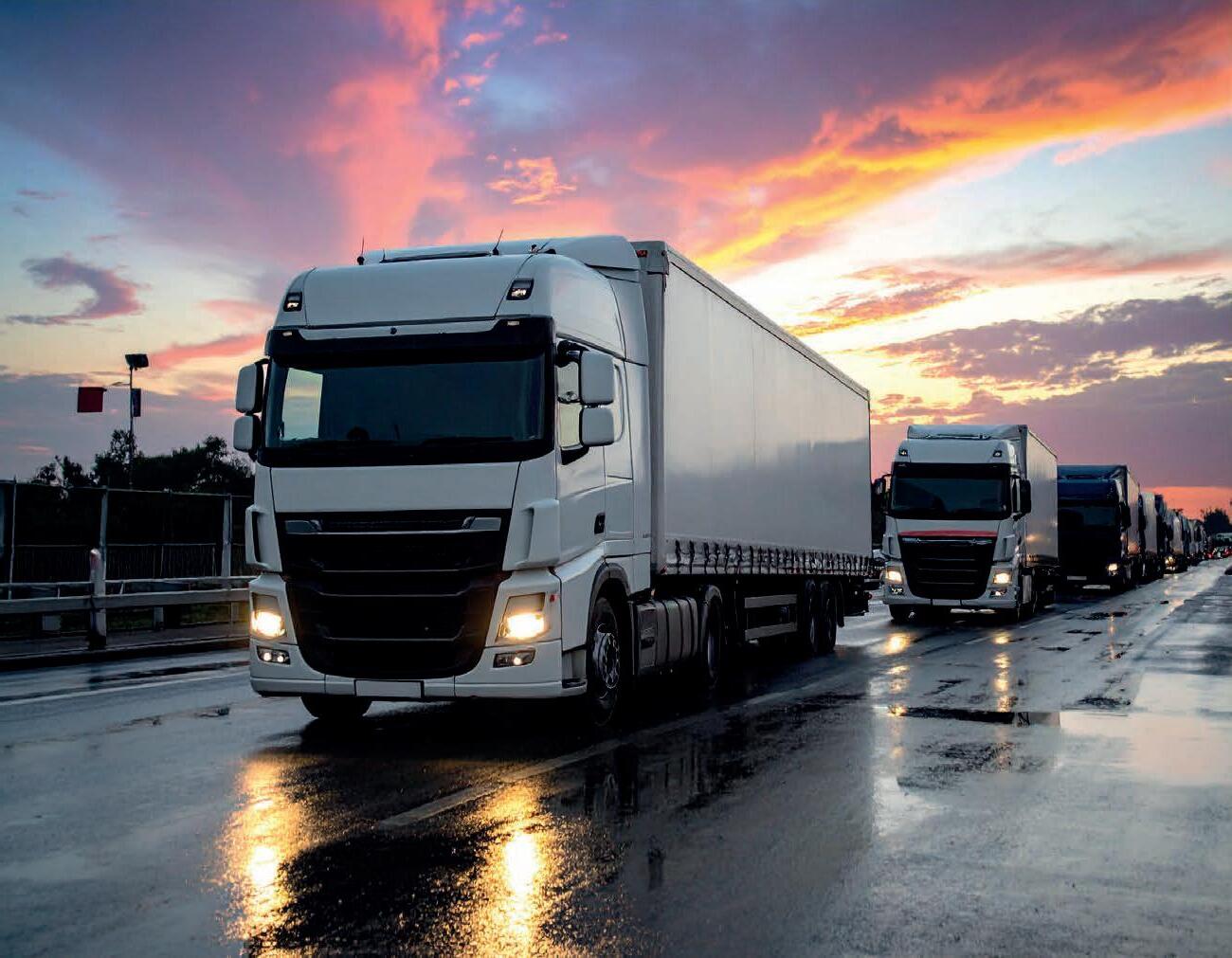
Images: Hino Australia.
Dorothy Nycz, RAA General Manager Automotive Services.

than 95 per cent of vehicles the RAA expects to have to tow in the Adelaide metropolitan area.
High visibility is achieved with the distinctive RAA vinyl wrap, complimented by ashing strobe lights and retro-re ective tape and the use of intelligent ‘e-Flares’ which synchronise to provide a safe worksite when loading and unloading in all light and weather conditions.
“We’ve been very impressed by the Hino vehicles,” says Dorothy. “These vehicles ensure RAA tow drivers can deliver a safe and professional experience for our members, and staff have been particularly impressed with the comfort, ergonomics and vehicle safety features.”
A system of six cameras mounted around the trucks provides a live 360 degree view of what’s happening in, and around the cabs. This can be viewed in real-time and is also recorded. It allows the RAA to review and investigate workplace health and safety procedures and additionally ensures members have peace of mind regarding how their vehicles are treated and looked after when in the RAA’s care. South Australia recently implemented laws for traf c to be at a maximum of 25km/h when travelling past ashing amber lights for vehicle breakdowns. The cameras will help RAA and the government review the effectiveness of this important safety initiative.
For metropolitan applications the Hino Standard Cab is used, as there is no need for dual cab models because there is plentiful access to taxis and other forms of public transport available when a member’s vehicle is being towed to a place of repair.
The Standard Cab has suf cient space to accommodate a sizable 12-volt refrigerator so the drivers have access to their fresh meals and plenty of cold water can be available for members who may have been waiting on the roadside in warm conditions.
The last thing RAA would want would be one of its highly visible tow trucks involved in a traf c accident. The Hino trucks’ high level of inbuilt active safety technologies available through the Hino SmartSafe package provide advanced driver assistance systems aimed at protecting the drivers, passengers and other road users through multiple systems including Safety Eye (SE), Pre-Collision System (PCS), Autonomous Emergency Braking (AEB), and Pedestrian Detection (PD), Adaptive Cruise Control (ACC), Vehicle Stability Control (VSC) and Lane Departure Warning System (LDWS) are standard equipment which also includes Antilock brakes, traction control and a driver’s SRS airbag.
A reason for the RAA’s long-term success has been the organisation’s ability to keep up with changes in
the road-using society. In addition to actually having retail outlets which sell mobility scooters among a range of other products and services, RAA can support owners of any mobility scooters with servicing and repairs including a similar level of roadside assistance in the event of a breakdown.
The increasing take up of electric vehicles is also supported by the RAA, which has completed South Australia’s rst border-to-border EV charging network, RAA Charge, in partnership with the State Government. RAA also provides and installs home-based EV charging equipment by licenced electricians.
The selection of Hino as the truck brand of choice was initially due to the existing long-term relationship with Hino’s parent company Toyota, through RAA’s 100-plus Toyota HI Ace roadside service vans. Research conducted as part of RAA’s due diligence process underlined local dealer CMI-Hino’s ability to meet the speci c requirements and provide trucks which met all the criteria, including con guration options, appearance and performance, while offering a competitive price.
“As South Australia’s number one brand, serving our members for more than 120 years, the partnership with CMI also seemed like a perfect synergy as they’ve also been serving SA for 90 years,” says Dorothy Nycz.

Manufacturers
Rugged engineering
Long-lasting protection
Built for the long haul


TORQUE IT OVER
NAPA has brought Norbar’s new Cordless Torque Multiplier to Toll Group, ensuring e ciency and safety for the logistics provider’s operations.
NAPA has been solving problems in Australia’s commercial road transport industry since 2018. The company — a consolidation of Ashdown-Ingram, Covs, Global Auto Spares and R&E Auto Parts — utilises both a unique array of expertise and a vast supply network to provide solutions for its partners in the form of distributing products. In this way, NAPA acts as a broker of sorts, creating a bridge between manufacturers and transport operators to achieve success for all parties.
Under this model NAPA has been able to provide ongoing guidance for national logistics giant, Toll Group.
According to NAPA’s Southeast Queensland Industrial Channel
Manager, Daniel Coward, the two companies have long enjoyed a fruitful partnership.
“We’ve enjoyed a positive working relationship with Toll for at least six years, probably more,” he says. “The relationship has predominantly taken the form of NAPA supplying Toll’s workshops with their requirements. This has included a lot of tooling and equipment over the years but has also included other things like workshop consumables. It’s been quite a mixed bag.”
The foundation of this existing partnership proved vital when a safety incident occurred at Toll Group, involving a torque wrench at one of the operator’s workshops, which was made known to Toll’s Head of Fleet
Maintenance, Mitch Brooke.
“I was running a program within our workshops before the Brisbane Truck Show to identify general hazards and risks,” he says. “One of the staff members, who was completing a period of work at one of our regional sites, brought some safety concerns to my attention.”
The concerns in question referred to the regional workshop’s typical process of torquing some 400 wheelnuts between quad roadtrains and their combinations. The process, which requires two staff members handling a heavy torque wrench, can be something of a gargantuan task. It takes time and energy and is far from risk-free.
“The repetitive movement of the torque wrenches can lead to fatigue, injury,
Norbar Cordless EBT-C. Image: NAPA
and people generally being in the line of re,” Mitch continues. “That’s exactly what our team identi ed as something we need to overcome.”
Upon identifying the problem to solve, Toll promptly contacted NAPA for a solution.
“When Mitch and the Toll team are looking for equipment solutions, they normally give us an opportunity to have a crack at it rst,” Daniel says. “Given our position in the industry, we were quite well-connected to nd what Toll was looking for.”
And NAPA did. Or, rather, it found them, in the form of Norbar’s EvoTorque Battery Tool EBT-C. Norbar has been manufacturing commercial road transport tools and equipment in the United Kingdom and Australia for decades. Its introduction to NAPA rst came in the form of its parent company, the United-States based Genuine Parts Company (GPC).
“We’ve had a long-term relationship with GPC that has gone back many years,” says Norbar Business Development Manager, Jeff Rosenberg. “NAPA has always been there by extension, but it’s only quite recently that we’ve been explicitly talking with each other.”
The conversation between the two companies was sparked shortly after the development of the EBT-C, which Norbar thought would pique NAPA’s interest. While Norbar had similar tools available on the market, its newest version came with some adjustments.
“We’ve had a battery tool for a long time, but a different version of it,” Jeff says. “Our original, range-topping EBT models are still available — they’ve got more features and higher torque outputs — but those really aren’t needed for this type of application. Because of that, they’re a bit more expensive than the compact version. Since we released the EBT-C, which is priced more competitively but still offers full transducer control, it’s been getting a lot of attention from companies like Toll.”
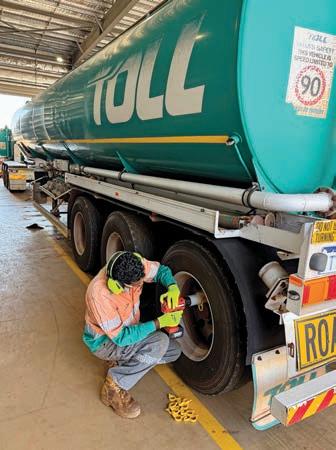
Norbar’s Cordless EBT-C is a digital torque multiplier, delivering high levels of torque to the wheel nuts of transport units with a built in transducer which controls the tools’ output to the highest level of accuracy. This torque is then applied to the lug nuts on the wheel of a truck or trailer. Through this digital process of providing torque, the Norbar Cordless EBT-C has been designed to re ne the role of a typical heavy-duty torque wrench, providing a new level of safety to the process, as a result.
“As a digital torque multiplier, this tool removes the physical exertion of the torquing process from the operator,” Jeff explains. “While you’d usually need two people on a large torque wrench to achieve the high torque, our new tool is a one-person operation only.
“In terms of safety, it greatly reduces fatigue because of its battery power, meaning less manpower is needed. This will prevent taxing movements and staff injuries, and there’s one less person putting themselves at risk entirely.”
The Norbar Cordless EBT-C also provides ef ciency gains. In Jeff’s view, the tool allows for a much higher torquing accuracy than that of a large torque wrench, due to the gun’s builtin transducer.
“While on paper, a large torque wrench provides the same amount of accuracy as our Norbar EBT-C, I would suggest our battery-powered tool is actually much more accurate,” he says. “The tool itself measures torque at all times because of the transducer we’ve built
into it, and not many other brands on the market include this in their tool designs. Our level of accuracy is extremely high, and as a result, the torquing process is much faster.”
Upon completion and internal testing of the Norbar EBT-C, Jeff and the Norbar team toured the product at various NAPA sites, thinking the company would be interested in distributing it to one of the many transport partners in its national network.
“We actually didn’t know the tool existed until Norbar showed it to us,” Daniel says. “It was the perfect tool to solve Toll’s problem. So, we grabbed it immediately and also supplied it to other customers that had similar eets in the industry, as we anticipated they would have similar issues.”
From there, Mitch and the Toll team got familiar with the product before using it across Toll’s own national workshop network.
“After NAPA showed us this tool, we went through a bit of a discovery session with Norbar,” he says. “We travelled to their site, had a look, tested it and interacted with the team behind it, too. That gave me a lot of con dence in the torque gun’s ability.
“The timeframe from that testing stage to rollout was pretty quick and seamless. Norbar and NAPA both saw the sense of urgency with our issue due to the safety risk we were trying to curb. They’ve been very helpful, supportive and accommodating.”
In a similar vein, Jeff also found the partnership with NAPA — and by extension, Toll — trouble-free and successful.
“We’ve formed the basis of a great relationship with NAPA,” he says.
“Not only have we sold this product to Toll, but NAPA has also helped with other sales to other important clients, which is fantastic. NAPA has a strong name within Australia, and a pretty big footprint that we’re happy to work within.”
He adds, “This has provided a great foundation for future collaboration.”
Image: Toll Group.
A Toll technician using the new Norbar EvoTorque Battery Tool EBT-C.
INDUSTRY CITY OF
Victorian-based truck dealership chain, Patterson Cheney, expanded its footprint in the state with the opening of a new Isuzu facility in Pakenham this year.
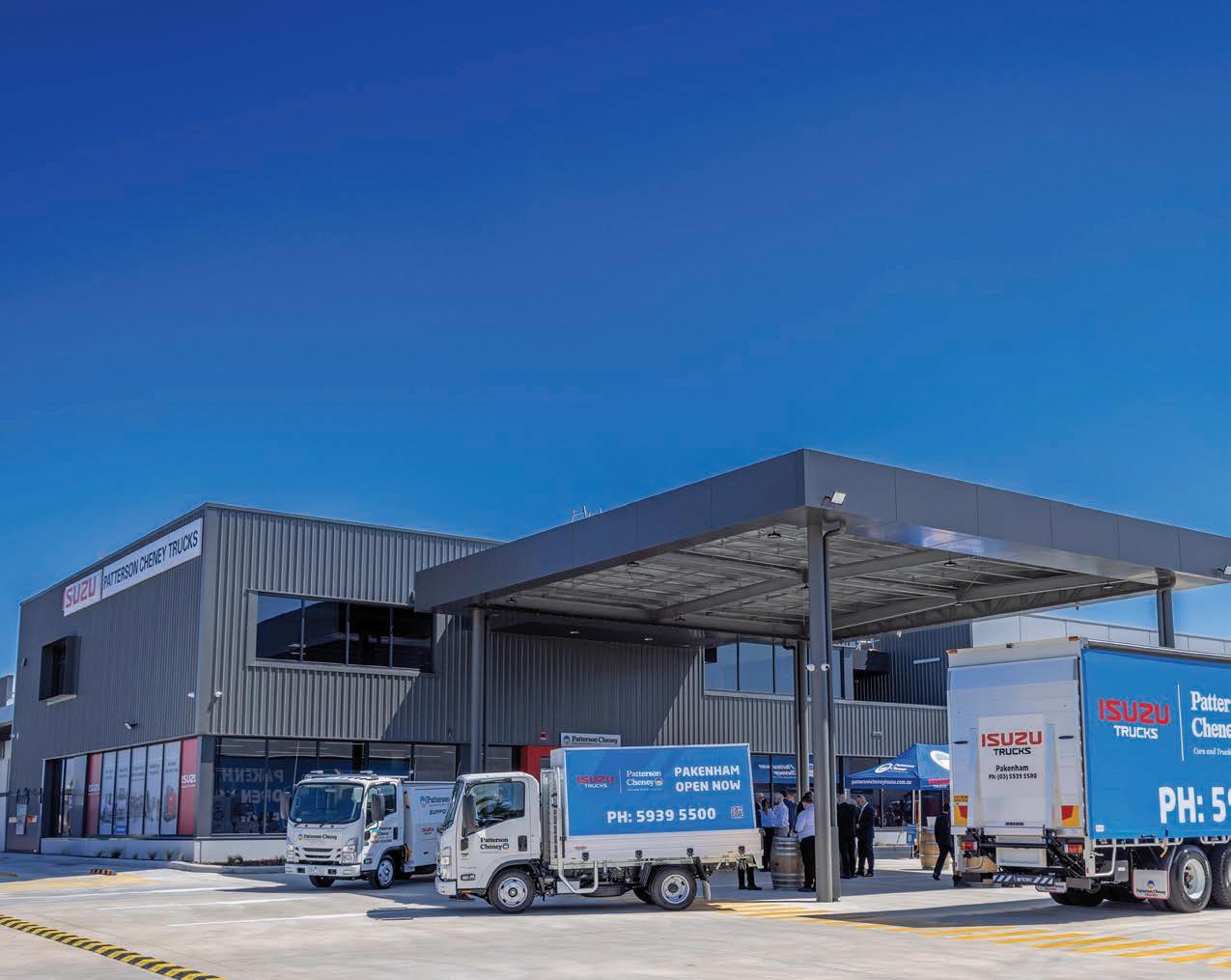
Some dynasties hold crowns. Patterson Cheney holds trucks. The family business has operated in Victoria for 110 years, an impressive lineage which has been sustained through brick-and-mortar growth. Over the past century and change, Patterson Cheney has served as an intermediary between a range of commercial vehicle manufacturers and local customers in what are now 14 distinct locations.
The business’ most recent pursuit of expansion in trucks, has been the opening of an Isuzu dealership in Pakenham — a suburb in Victoria’s southeast — which has sought to bring the brand’s tailored services to a budding commercial area. And, according to Patterson Cheney Trucks Isuzu General Manager, John Elliot, it’s been a long time coming.
“The idea for this site has been in the pipeline for ten years,” he says. “We’ve
wanted to develop further out in the state for quite some time, and the whole Pakenham area — even heading out into Gippsland — is a growth corridor.”
John adds, “There is a lot of residential expansion happening in the area and its surrounding suburbs, and businesses are starting to migrate here, too.”
While the idea to enter the Pakenham market may have been a decade in the making, speci c construction of the site took three years, which included the purchasing of the site’s land, construction planning, receiving relevant approvals, appointing builders and more. The designing and building of the site were helmed under the idea that the demand for the space and its amenities would grow with time.
“Trying to optimise the design and build of the site was a compromise between constructing something big enough for things like customer
parking and truck displays and constructing something that would give us the option to upsize in the future,”
John explains. “This site has been built for our business to grow into.”
The facility currently provides customers with a comprehensive sales, service, parts and support experience, delivered through a wide range of amenities. Covering 12,143m2, the site features a workshop equipped with 12 truck bays, two 26-metre service pits, an inground roller brake tester and a full-length overhead gantry crane. Additionally, there is a dual wash bay with a drive-over underbody truck washer, along with other features which properly showcase genuine truck parts and accessories, like a mezzanine parts level and a 60m2 parts showroom. While these resources equip the facility to cater to many customer needs, the physical location of Patterson Cheney’s Isuzu dealership is an asset in its own
The new Pakenham site brings great exposure along the adjacent M1 freeway.

right. It was selected to maximise customer access and convenience.
“I think our site’s location is really what sets it apart,” John says. “We’re on the corner of McGregor Road and Southeast Boulevard, just off the M1 Highway, so customers can enter and exit our site with ease. That space and access is really important, as our customers are handling heavy vehicles which can be hard to manoeuvre in certain areas.”
The facility’s placement by a major highway also provides Patterson Cheney with great exposure to motorists and prospective customers alike.
“The site is on the new, industrial side of Pakenham, and the amount of traf c that drives past us is huge,” John continues. “We get a lot of eyes on the dealership this way. Customers can see our full offering of Isuzu trucks, as well as trucks from our other manufacturers being MAN and Western Star Trucks. And when it comes to servicing, our
capabilities aren’t limited to those brands at all.”
Furthermore, the Pakenham facility enjoys a strong connection to Patterson Cheney’s agship Isuzu dealership in Keysborough, a nearby suburb. This is a massive plus, as the two sites can share resources and expertise as needed.
“We have customers that get trucks serviced in both Keysborough and Pakenham,” John continues. “The placement of our Pakenham site was all about making it easy for customers to come to us.”
Such a placement has seemingly paid dividends for the dealership chain throughout the year. Since its opening in January, Patterson Cheney’s Isuzu dealership in Pakenham has experienced incremental growth. John and his team are very happy with the performance and have speci cally attributed it to the patterns of industry demand.
“We of cially launched in February and every month since then we’ve

seen more and more business. We’re starting to properly grow our customer base.”
The Pakenham facility has been growing its team in pace with the gradual uptick in customer demand.
“Some of these technicians are local and the opportunity to work closer to home has been a real drawcard, while others were picked from a bit further away, we have recently added an MAN technician from the United Kingdom who starts this month,” John says. “Bringing this skillset into the business is very exciting. We’re always on the hunt for more talent and would love to add more Pakenham locals to our team.”
The Pakenham facility’s growth has also helped Patterson Cheney integrate with the suburb’s local community.
Much of this integration has come in the form of sponsoring local clubs — a Pakenham netball team, a junior rugby league team and a junior AFL team over the winter, with more to be supported in the upcoming summer.
For John, the opportunity to interact with the community is critical.
“I think giving back is the key to long-term success,” he says. “That’s something we have always been very big on at Patterson Cheney.”
Furthering the truck industries reach into Pakenham is Penske Truck Rental opening its rst standalone facility in Pakenham — also the rst in the southern hemisphere and second facility in Melbourne — in early September.
The Penske facility offers a range of medium- and heavy-duty prime movers and rigids from MAN and Western Star Trucks. John and the Patterson Cheney team believe this presence will attract even more traf c and interest to Pakenham and, moreover, signals great con dence in the suburb’s automotive growth.
John says. “Having this brand come into the area is a vote of con dence for Pakenham. It shows consumers and operators that this is a viable place for business.”
Patterson Cheney Trucks Isuzu General Manager, John Elliot.
HIGH VISIBILITY
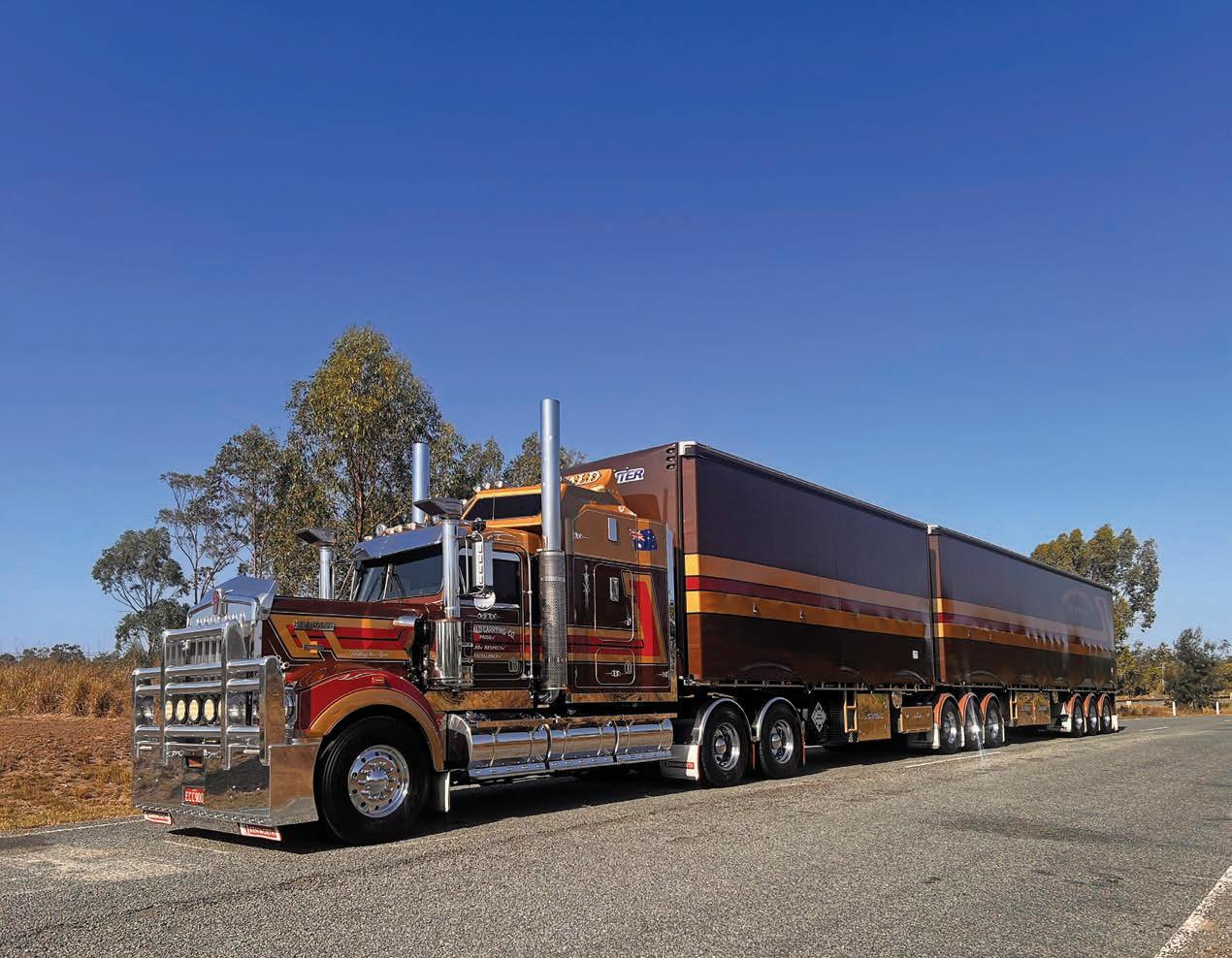
For carriers struggling with rising costs, operational ine ciencies, and complex compliance demands, Slipstream delivers clarity and control with its next-generation Transport Management System.
The brainchild of founder Wade McDonough, Slipstream Clear is a scalable Transport Management System (TMS) designed to help mid-tier operators thrive. It takes a fresh approach to how technology and automation can drive ef ciency, visibility, and growth for transport businesses. Backed by respected transport industry leaders such as Glen Cameron, Slipstream Clear is built for operators seeking to replace outdated manual processes or legacy technology that no longer meets customer expectations. Today’s clients demand automation, visibility, and speed, and Slipstream is designed to deliver exactly that.
“The freight task is only getting more complex, and the only way forward is technology,” says Glen Cameron. “Slipstream’s modern platform takes away the manual grind and gives operators the visibility they need
to make real-time decisions with con dence.”
Wade’s journey
Wade McDonough brings an impressive background to the Slipstream vision. After graduating from La Trobe University with a biomedical engineering degree, he ventured to the US during the dotcom boom, interning under Alan Finkel (later Australia’s Chief Scientist) in San Francisco. That experience led to a unique opportunity at NASA, where he contributed to building a telemetry unit for Russian astronauts.
“It was a fascinating project, and I probably didn’t fully appreciate its importance at the time,” recalls Wade. “But it gave me a strong set of engineering principles that became the foundation of my career.”
Wade then attended Stanford University, gaining further hands-on experience with scalable, repeatable
technology projects.
“The key to success was scalability,” he explains. “By identifying the common elements across projects, we could rapidly deploy modular, future-proof solutions.”
Entering the transport industry
On returning to Australia, Wade was introduced to the transport and logistics sector by a friend at Melbourne’s International Air Freight Centre. Struggling operators were buried in paperwork and late payments, so Wade developed a job management platform that quickly gained traction among freight forwarders. The early success revealed an even bigger opportunity: building a uni ed industry-wide platform called Slipstream Clear.
Instead of siloed, outdated TMS products, Wade envisioned a collaborative ecosystem more like Google’s connected approach, where
Emerald Carrying Company has reaped benefits from Slipstream Clear.
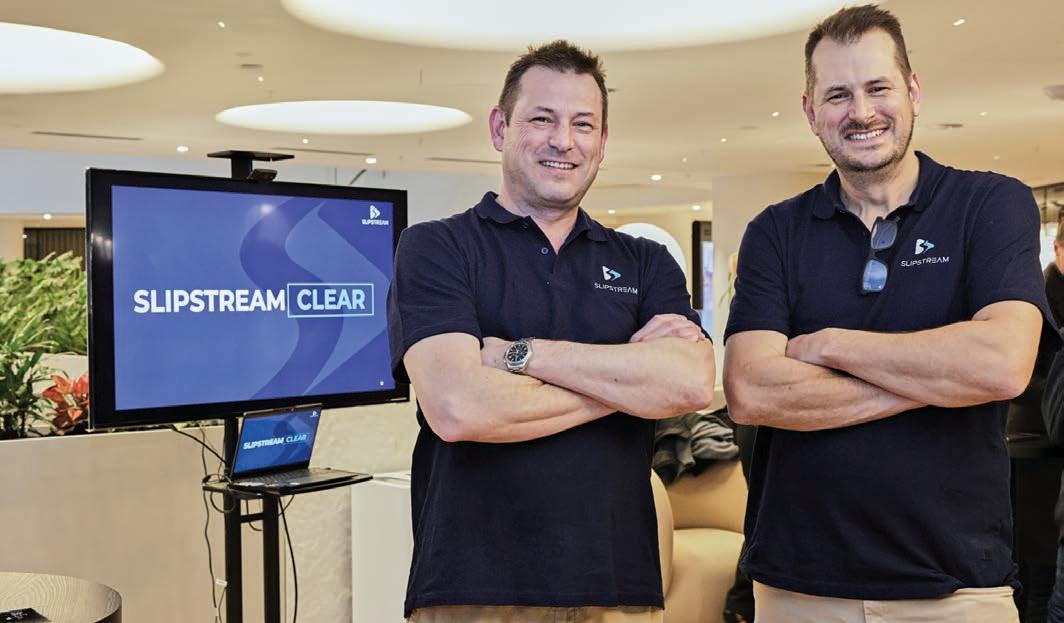
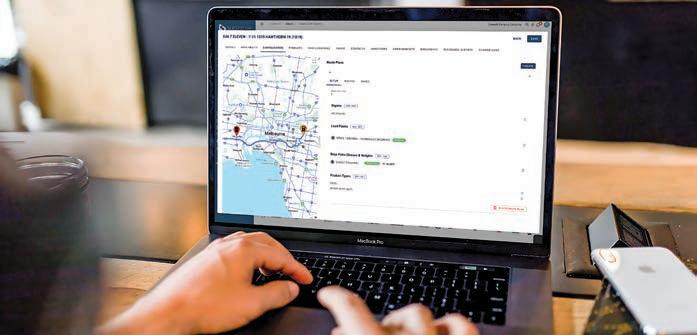
carriers could share best practices and gain a single source of truth for their operations.
“Our goal was to let carriers compete on customer service, not on outdated back-of ce systems. The industry needed a shared ecosystem that simpli ed operations and unlocked visibility,” says Wade.
Industry adoption
Glen Cameron was quick to recognise the potential, using Slipstream technology to optimise his Sydney operations.
“For too long, advanced systems were only accessible to big eets,” Glen says. “Slipstream levels the playing eld, giving small and mid-sized operators the same tools to grow, stay competitive, and delight customers.”
Bulk fuel carrier John L Pierce Transport also turned to Slipstream to overcome
legacy system challenges while meeting the complex requirements of transporting dangerous goods.
“Being a foundation customer has allowed us to take a future-focused approach,” says Executive Leader Emerson Pierce. “We’re not just adopting new technology. We’re shaping a platform that re ects the realities of our industry and positions us for long-term success.”
Configured for carriers, not the other way around Wade stresses that Slipstream’s strength lies in its modularity and adaptability.
Rather than forcing carriers to change their work ows to t a rigid system, Slipstream con gures the platform around each operator’s needs.
“Change management is always tough,” Wade explains. “But too often carriers are forced to adapt to generic
systems. We take the opposite approach working closely with partners to shape a platform that truly ts their business.” Also, by centralising data, Slipstream enables real-time visibility for both carriers and customers. The result is smarter decision-making, improved resource allocation, and reduced waste.
“Administrative tasks don’t add to pro tability,” Wade says. “Our platform automates those processes, freeing people to focus on customer service — the true point of difference.”
Emerald Carrying Company CEO Arron Johnson is among the operators already seeing positive results.
“Slipstream is helping us modernise, improve visibility, and create smoother information ows across our business,” he says. “The bene ts are already clear.” With its modern architecture, industryled development, and vision of a uni ed ecosystem, Slipstream Clear is rede ning how transport operators compete and grow. By removing manual burdens and unlocking realtime intelligence, the platform gives mid-tier operators the same edge once reserved for large eets — helping them thrive in a rapidly evolving logistics landscape.
Advanced fleet tracking capabilities that ensure ontime delivery.
Wade and Ryan McDonough.
DATA SMARTER

Operational work ows within businesses are increasingly being driven by data generated from telematics which are leading to better nancial outcomes.
It’s 4 o’clock on a cold morning. The driver turns the key in the truck. But it won’t start. An alert on the dash has been ignored. The battery has gone below its reserve capacity and needs to be replaced. Now the driver, drawing a wage for standing around, is waiting on an auto electrician while the customer’s freight is going to be late. In this scenario, money and time, have been wasted by a company in no position to do so. To add salt into the wound, it could have been avoided. If a ruleset had been implemented notifying the workshop that the
batteries, whose voltage can be measured 100 times a second, needed checking, the maintenance management system could have been consulted on when the batteries were last replaced. A custom ruleset, like those built into My Geotab, would have cascaded the task through the organisational network the moment something happened onboard the vehicle.
“That can be the difference between a minor incident two weeks down the line or something catastrophic,” says Andrew Hintz, Geotab Associate Vice
President Heavy Transport. “If you actually capture that real-time and send it back it gives the guys in the workshop something to work with and they can go back and look at what the fault code is and get the truck off the road.”
Telematics makes it possible to isolate different areas where immediate cost reductions can be achieved. What’s more, these tools can be used not just preventively but creatively. While a vast amount of the road transport industry is still using rst generation telematics platforms, if they are using any at all, Geotab offers something far more
Techncians run a diagnostic check after a telematics alert.
sophisticated when it is applied to the likes of eet management, maintenance schedules and pre-emptive diagnostics. The data obtained from a second generation telematics device with a good CAN bus library is rich and Geotab helps its customers exploit it for the better.
A eet can trend datasets to the point it might overlay engine coolant temperature versus ambient temperature based on the geolocation of where their trucks are operating. An outlier, in which the coolant temperature is running 15 per cent above normal operating temperature on a particular vehicle, can, via a data platform, trigger a noti cation.
“The truck runs outside whatever their designated rule set is, and it can prompt something as simple as inspecting the radiator,” says Andrew. “Perhaps the fan is not coming in. Maybe the vehicle has been out during harvest, and the radiator is blocked with grass. It just allows a technician to get those insights to do something ahead of an engine overheat event two weeks later and all of a sudden, you’re up for an engine rebuild.”
As a central platform built on modules, Geotab can even surface information relevant to total cost of ownership by showing labour components and parts that have been used so operators have a detailed understanding of the end-to-end maintenance history of the truck. By making the most of their rulesets, eets are optimising how they action work ows across the three pillars as Andrew identi es them: fuel, maintenance, mass management.
“Fuel can be as much as 30 per cent of the operational expenditure for a transport company,” he says. “They can save money just by understanding the way a driver can perform better. Or maybe it’s the vehicles that are idling for too long.”
Fuel tax credits are also a largely untapped metric for eets. According to Andrew they’re rarely claiming the full 51.6 cents per litre for offroad usage. “They might be claiming a safe harbour
rate of around 20 cents a litre, but they are leaving a lot on the table,” he says. “Many are not maximising that claim. They have the ability to do a four-year retrospective claim and month-bymonth going forward based on where you can prove 90 days of data and your business doesn’t typically change. Some of the outcomes we’re seeing are six gure sums.”
A leading garden supplier in Melbourne with 90 tipper trucks using power take-offs in their eet recently discovered how much they had underestimated their offroad usage. It was signi cant. After the data was put through a fuel tax estimator, the business was able to secure a fouryear retrospective claim of just over $150,000 with an ongoing annual claim of $45,000 a year.
“Break that down across 90 trucks per month. It’s a bit over $41 per vehicle. Now depending on your technology onboard that truck, that’s going to subsidise your telematics solution depending on what they have signed up for,” says Andrew. “That’s an amazing outcome. A fuel tax credit for offroad usage can potentially fund your technology. In this case if they had a GO9 device they probably would have had money in their hand at the end of each month.”
Some businesses will, of course, have vehicles that spend more time offroad. Cement agitators have potential for a fuel tax credit up to $200 per vehicle per month. Waste management is also another good segment in which a fuel tax credit of up to $120 per vehicle per month can potentially be claimed. Fridge vans with cooling units on the trailer are another example cited by Andrew.
“Aside from the offroad component there is a 100 per cent on-road claim at 51 cents per litre because it’s not on the main engine that’s powering the vehicle,” he says. “It’s on an auxiliary engine that’s powering the fridge unit. Most people don’t realise how good it actually can be. When you’re running a transport company which is typically sub 5 per cent margins, you want every
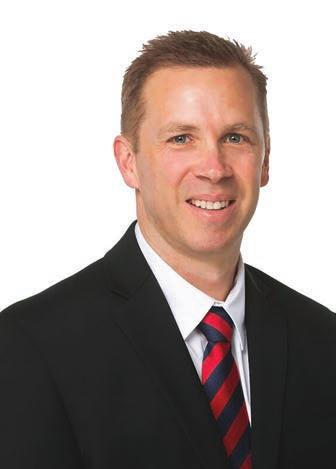
cent that you can get your hands on.”
With 20 years in the industry, Andrew has watched with interest how major events such as the Global Financial Crisis, the fallout from the mining boom and the recent in ationary postCOVID environment have impacted operators. In downturn economies, he observes, they rally to telematics.
“It’s those times when the economy gets tough that have some of the best adoption rates you can see in telematics not just in transport but across the board,” he says. “Where the business has an economic challenge and they’re trying to nd every cent they can. That’s when telematics does best.”
Historically businesses have chased safety as an outcome or driver training to conserve money on fuel. But those days, according to Andrew, are gone.
“We’re now seeing educated customers who recognise safety is a great thing for the business, they grab the data and focus on that for 90 days, and get on top of it, retrain drivers nd some fuel savings as a result and if the vehicles are being driven too harsh you will see the roll-on effect in maintenance. Brakes not needing to be replaced as often and other areas as well,” he says. “Then they look somewhere else. Sometimes it’s smarter routing. Are they allowing freight movements to be more productive? There is big savings from smarter routing but there’s ultimately improved customer service as well. Then they move onto preventative maintenance.” He adds, “It’s not just one data point that they’re chasing, and crucially, they get everybody across the business onboard.”
Images:
Andrew Hintz.

ACHIEVER A QUIET
The versatility of the DAF CF makes it suitable for many applications in addition to typical linehaul work.

The DAF CF can be regarded as a bit of an unsung hero of the Australian road transport industry, blending almost seamlessly into the mix of trucks running between Australia’s major centres in typical B-double curtainsider and refrigerated con gurations. As a prime mover the CF has proved to be ideal for that type of work, but it’s also readily suited for other applications such as car carriers, tankers, and tippers. Following an extraordinarily comprehensive revision of every critical component and after securing multiple ‘truck of the year’ awards in Europe, the DAF CF Euro VI range was introduced to Australia in 2020. The new package bought with it signi cant improvements to the CF’s fuel consumption, safety and driver comfort and all-around operational ef ciency. More recently, a lot of industry attention has been directed towards the CF’s big brother, the DAF XG with its 660hp Cummins engine. The 11- and 13-litre PACCAR engines available in the CF models may not be considered as ‘big bangers’, yet as a prime mover the CF lends itself to a long and diverse list of applications. In addition to general freight work, rigid models can also nd homes in many applications such as dog-towing tippers, concrete pumps, hooklifts, front and rear waste loaders as well as heavy duty tilt trays and crane trucks.
In order to reacquaint with the CF, after the media activities surrounding the launch of the Cummins-powered XG in late 2024, arrangements were made to experience a B-double tipper con guration as an alternative to being connected to a typical plain white curtainsider trailer set.
Three cab sizes are available in the CF range: day, sleeper and space cabs, and the CF is available in multiple driveline options across 4x2, 6x4, and 8x4 axle con gurations with numerous wheelbases also available to suit most general and niche requirements.
The area around the Gilbert and Roach PACCAR dealership in the Newcastle
suburb of Hexham has seemingly become one big construction zone with major highway works including a massive bridge over the Hunter River, plus new industrial and residential estates emerging, so a couple of trailers lled with sand doesn’t seem out of place.
The trailer set used for this exercise are on the Mass Management program and are loaded with 44 tonnes of sand which takes the combination’s gross to 68 tonnes, just short of the CF’s GVM spec of 70 tonnes and certainly enough weight to obtain a realistic experience of the CF’s performance on the road.
The 13-litre MX-13 engine is rated at 530hp (390kW) and has an impressive 2,600Nm of maximum torque available between 900-1,125rpm. This level of torque at such low revs allows for a tall 3.40:1 rear axle ratio that downspeeds the engine and enables the truck to remain in higher gears for longer which helps with fuel ef ciency and also point-to-point times. The engine’s Variable Geometry Turbocharger provides high boost pressure at impressively low revs which is an important factor in achieving the high levels of torque. Also, making a contribution to improving fuel ef ciency, the parasitic power losses from some engine systems are minimised by utilising variable speed pumps for cooling, power steering and oil.
This particular truck is equipped with the ZF TraXon 16-speed Automated Manual Transmission, with options available for the TraXon 12-speed, as well as a six-speed Allison fully automatic box. The 13-litre engine is also available in a 480hp/2,500Nm speci cation. For applications not requiring the grunt of a 13-litre, the 11-litre MX-11 engine can be optioned in 340, 410 and 450 horsepower ratings. The main control for the transmission is a rotary dial on the dash, which is used to select forward or reverse direction, as well as the crawler ratios for ultra-slow manoeuvring when connecting to trailers or reversing
DAF CF 530 as tipper B-double.
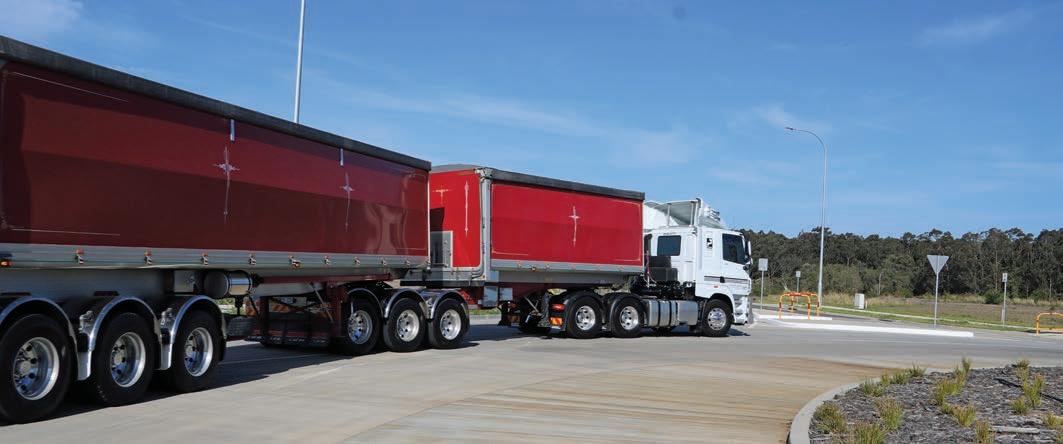
into a dock. A wand mounted on the steering column enables driver input to gear shifting.
A good example of the effect of the available torque is displayed while negotiating McDougall’s Hill just out of the Hunter Valley town of Singleton. The at stretch of road leading to the base of the hill has a 60 km/hr speed limit so there is little momentum accrued when tackling the steep, but short incline. With the cruise control set and the CF’s transmission left to make the decisions the CF down shifts as far as 8th gear on the climb by changing full gears rather than splitting the ratios. As the road levels out towards the peak, the upshifts are initiated by half ratios for each change via the TraXon’s use of its splitter. Both up and down gear changes are very quick which makes best use of any available momentum.
Descending hills is easily managed by use of the three stage engine brake wand on the driver’s side of the steering column as the precursor of applying the service brakes. The all-wheel ventilated disc brakes of the prime mover are managed, along with the trailers’ brakes, by the electronic brake (EBS) system. The maximum engine braking power of the MX-13 is 360kW between 1,200 and 1,500rpm. The TraXon transmission can be optioned with a ZF Intarder to provide even more driveline braking power.
The test truck features a stylish Whitlock polished alloy bullbar and has covered just 32,000 kilometres and normally sees work as a member of the PacLease eet. Fuel tank capacities are 600-litre and 400-litre with a 65-litre AdBlue tank. Access to the cab uses cast alloy nonslip steps and very solid grab handles. The driver gets an air-suspended seat and the steering column has an extensive range of adjustment. The fully automated HVAC system provides a comfortable environment regardless of the outside conditions. Sleeper cab models such as our test truck have a slide out fridge under the bunk which is easily accessed from the driver’s and passenger’s seats. The interior of the cab is best described as ‘premium’ which assists in minimising driver fatigue, as does the generous mattress in the sleeper. The ergonomic design of the cab interior helps maximise the driver’s attention to the road through the large windscreen and windows. The customisable dash layout with interchangeable switches allows the driver to con gure it to their individual preferences.
The dash has a 6.5-inch touchscreen display with navigation and straightforward phone connectivity. The DAF Driver Performance Assistance (DPA) feature provides feedback on such factors as anticipation, braking, gear shifting and fuel consumption and is controlled by a rotary switch with
the ‘enter’ function via the press button in the centre, which makes scrolling through the menus easy without any driver distraction.
PACCAR Connect is a user-friendly and intelligent telematics platform which monitors driver, truck and eet performance and supports operator control of the logistics processes, with driver and vehicle information available via live tracking on desktop computer or mobile devices through easy-to-read and fully customisable dashboards. PACCAR Connect provides detailed reports containing convenient and timely insights and can also share vehicle data with third-party eet management systems.
The inbuilt safety features of the CF include a driver’s airbag and seat belt pre-tensioners for driver and passenger. Adaptive Cruise Control, Forward Collision Warning, Lane Departure Warning and Vehicle Stability Control are all standard equipment. In the extreme situation where the combined driver assistance systems are unable to prevent a major impact the cab is designed to absorb a signi cant part of collision energy by a controlled rearwards movement of the cab along the chassis, thus protecting the occupants.
The local manufacture/assembly of DAF trucks at PACCAR’s Bayswater plant brings numerous advantages including the opportunity to customise trucks to best suit their local applications.
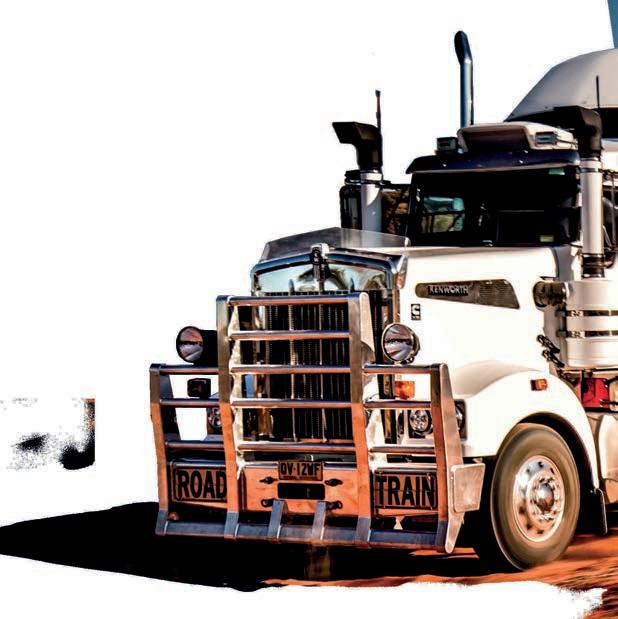
The test drive involved a load of 44-tonnes of sand.
New Kenworth trucks come with the reassurance of Castrol VECTON, enhancing performance and extending the life of your engine.

All Cummins-powered Australian made Kenworth’s come with the reassurance of Castrol Vecton 15W-40 CK-4/E9 as initial fill.
www.castrolvecton.com.au
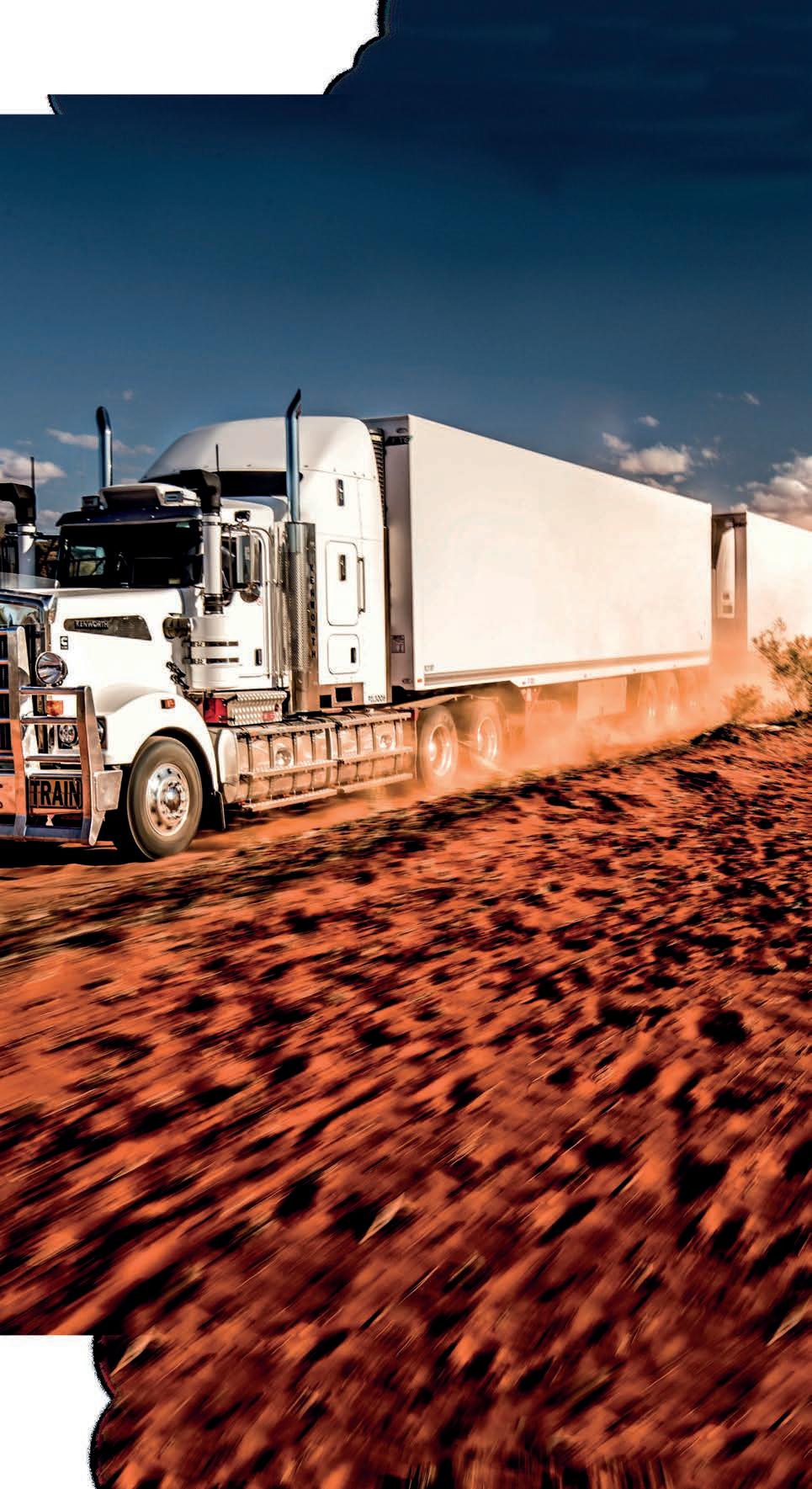
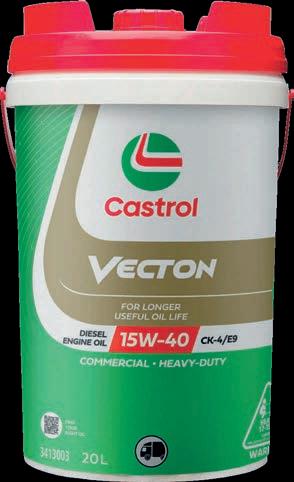
CRAVING CONSTANT
Operations Manager at Freighter Group’s facility in Sydney, Jo Tomaszewski still nds time to be a mum, study for her master’s degree in business, and do some drag racing.
Identi ed early on as a future leader in trucking, Jo Tomaszewski is making the most of what she calls receiving a “second chance”.
Prime Mover: What was your pathway prior to working at Freighter Group?
Jo Tomaszewski: I nished school after Year 10 with my parents’ support as long as I got a job or went to TAFE. I went to TAFE for a year and achieved Certs III and IV in Business Administration and I then started with receptionist work which led to administration roles. I was at Karras Transport for around four years where I showed interest in accounts and eventually was offered the role of assistant accountant, yet still with no formal quali cations. In my late 20s, after a few more years working as an assistant accountant, I decided to go back and study for my Bachelor of Commerce, majoring in accounting. This was part-time study while I was working full time. After getting my Degree I worked as an accountant for around one year, then a role came up at Maxitrans [now Freighter Group] for a system analyst role. I was then in the IT department for a few years plus doing some systems accounting, before I was offered the Operations Manager role.
PM: Did you always have an interest in road transport and equipment?
JT: Not really. Although I had worked at Karra,s it’s not an industry that growing up I thought I wanted to be in. If anything, I probably wanted to be more involved with cars because of my drag racing in my V8 Torana, which is actually where I met my husband.
PM: How did the Operations Manager position happen?
JT: The person who hired me said it was because of my knowledge around cars and the like, and he could see that I was able to quickly pick up the trailer side due to many similarities with cars — they have wheels, they have axles, which are similar to a diff, and they have brakes. I was a bit switched on with that sort of stuff and I had a different view towards trailers as opposed to someone else coming in who didn’t have any mechanical aptitude.
PM: You’ve been Operations Manager for six years. Has the role changed much and have you in uenced that?
JT: In a sense I have. When it was created, the role was a brand-new position within the company and the other branches didn’t have Operations Managers. Sydney is Freighter Group’s biggest service department and while I’m Operations Manager for the overall site, service is my main area of focus. I guess what I brought was my different perspective because it can be hard to nd a service manager who has the combination of technical knowledge as well as the HR and system experience and being able to look after the nances and other reports, as well as the safety aspects.
PM: Where are the trailers manufactured?
JT: All of our manufacturing is performed at Ballarat in Victoria. We have a sales team here in Sydney, so trailers are sold and ordered from here, they get made in Ballarat, delivered to Sydney and in our service department
we then do a pre-delivery check, plus any additional work the customers want done, then we deliver them from here.
PM: You’ve overcome a serious health diagnosis from your early 30s, so where do you draw your passion and positivity from?
JT: You just do what you’ve gotta do to get through it, and for me now I just want to live life to the fullest as I’ve been given a second chance. I’ve always been very driven in life, but now I’m doing it for my daughter, too. Years down the track I want her to know that she can do anything she puts her mind to. Realistically, I think this industry has come such as long way and it doesn’t have to be a ‘thing’ about women and men anymore. It’s just people.
PM: You were a recipient of a Transport for Women Australia ‘Driving the Difference’ scholarship in 2024 and named as a 2025 Daimler Trucks Future Leader by the Australian Trucking Association. What have these awards meant to you?
JT: I was so grateful to have won the ‘Driving the Difference’ scholarship, and the money has gone toward a portion of my master’s degree (MBA) which de nitely helps. I had come back from maternity leave in July 2024, and the 2024 Road Freight NSW event was my rst conference in my 25 year career and was essentially my introduction to the greater industry. I was excited to be listening to speeches by amazing people and I was in awe of industry and how people are striving to improve it, by coming together as one, celebrating
wins from the year just gone, planning for the future, and having a laugh and a chat. I nally met people who I had previously only connected with online. Then in late 2024, Simon O’Hara from RFNSW told me they would put in the application for the Future Leaders’ Forum and I wanted it so bad because it sounded so cool and I had found such a passion for the industry in the six months prior. I didn’t really know what to expect at the Future Leaders Forum. I had been told there would be some advice around advocating for the future, and there would be some sessions around how to be a good leader. Our industry is complex and involves a lot of things like compliance and chain of responsibility. What I got out of the Forum was so much more. We were provided skills, knowledge and tools to become future advocates for this industry and be a group of like-minded professionals who work around projects on issues currently facing the industry.
To Daimler Trucks and the ATA, I just want to say a genuine thank you for the opportunity, I am truly honoured to be considered a future leader of our industry.
PM: Is the industry giving you enough of a challenge to keep you invested?
JT: De nitely. I couldn’t see myself in any other industry. I like the challenge of it. People expecting ‘Joe’ not ‘Jo’. It’s stuff like that which makes me want to learn all I can about trailers and trucks and transport. There’s also that constant desire to prove people wrong. I made a promise to myself and my baby daughter when I returned from maternity leave last year, that I would give it my all to further myself and my career in this industry. I have always had drive and determination, but this is different now, this is for her future, too.
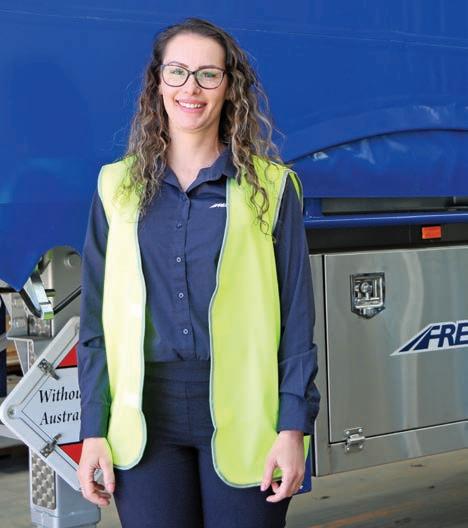
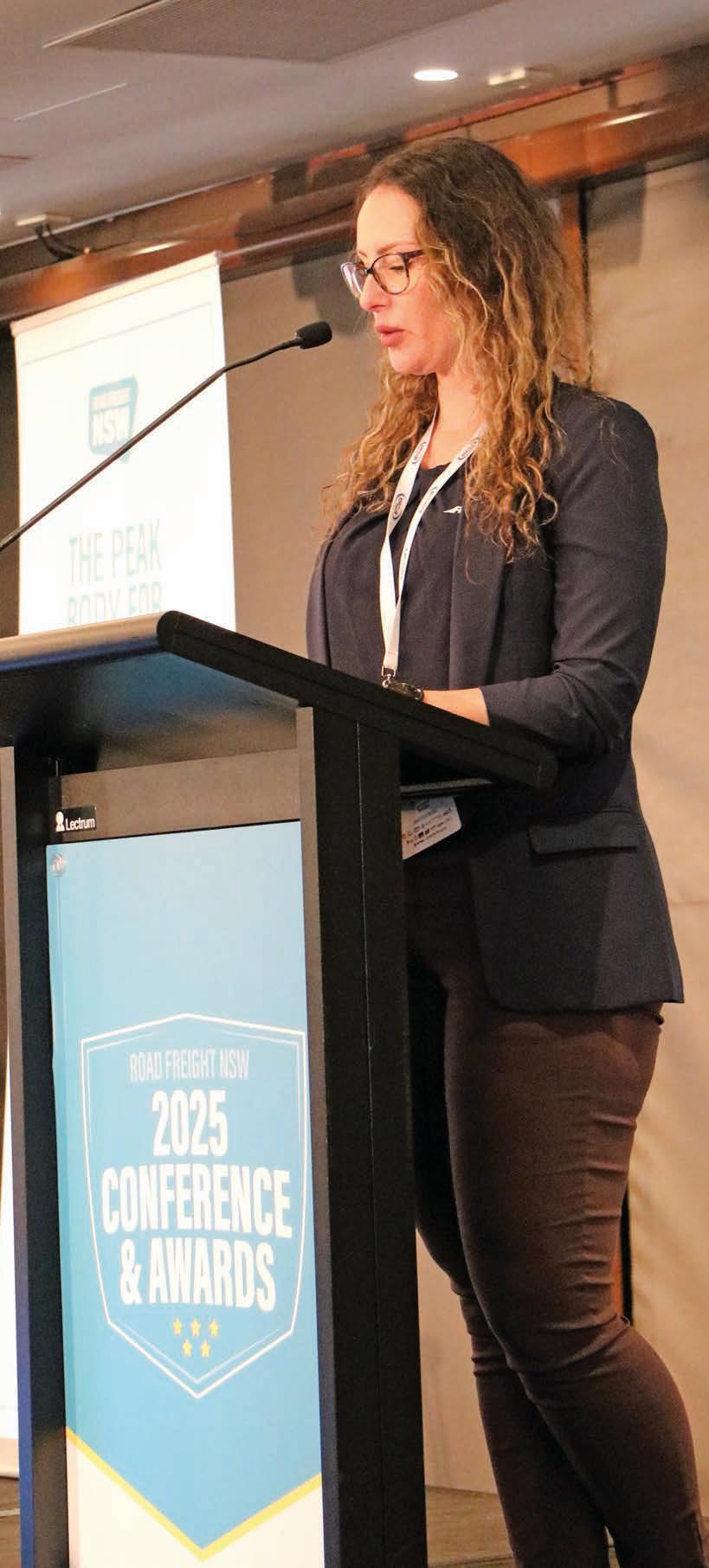
Images: Prime Creative Media.
Jo Tomaszewski presenting at Road Freight NSW Awards in September.
Freighter Group Ops Manager Jo Tomaszewski.
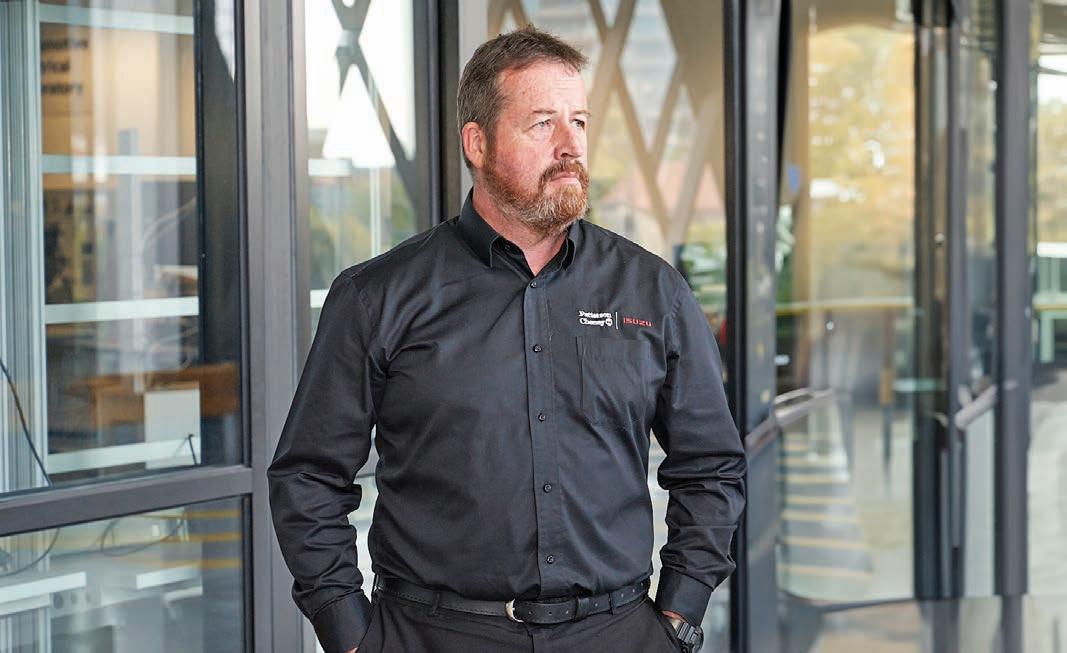
STANDING STILL
Wayne Murphy’s career is an accumulation of an impressive 40 years at Patterson Cheney. It’s not slowing down either having recently emerged victorious with his second managerial award and with plenty left in the tank.
Wayne Murphy’s calling in life was always loud and clear. For as long as Wayne could remember, he wanted to be a mechanic of some sort. Early in his life, this passion was split between cars and trucks but growing up right across the road from a Patterson Cheney Isuzu dealership in the suburb of Keysborough, Victoria, swayed him somewhat.
“I always wanted to do what they did at Patterson Cheney,” Wayne recalls. “I was set on it, so I applied for work there as soon as I could.”
This application was years in the making. Wayne nurtured his dreams by watching the dealership at work throughout his childhood and completing work experience there while in high school in the early 1980s. Once he of cially graduated in
1984, he wasted no time in applying for a truck mechanic apprenticeship. Needless to say, he got it and hasn’t looked back in the 42 years since. For a long time, he looked up — constantly learning and working, rising through various roles and ranks before earning the title of Service Manager in 2003, a role he still proudly holds today. From this perch, his perspective has since shifted, and he now nds himself looking out — onto a transport industry that has undergone some fundamental shifts.
“I think the biggest change I’ve seen during my time in the industry has been the accessibility to people,” Wayne says. “Back in the early days, there were no mobile phones to speak of. People would have to ring the business up on a landline and arrange a time to drop a vehicle off way in advance. Nowadays, that booking can
be done automatically, at any time of the day, and contacting people is instantaneous. The amount of change on that front has been incredible.”
While this change hasn’t been immediate per se, it has certainly been relentless. Keeping step with it has rede ned Wayne’s role to some extent.
“I think this change of pace has de nitely impacted the work I do to a degree,” he adds. “I think one needs to be switched on much more consistently than they might have been years ago, because so much more can be t into each day. Once upon a time, having any sort of meeting involved travel, letters, and more time in general. In the modern era, I can do three or four of these a day.”
Advances in technology have certainly created ef ciencies within the daily operations of industry, but the effect on its people and culture may still
Wayne Murphy Patterson Cheney Service ManagerKeysborough.
be up in the air. To Wayne, a tenet of the transport sector laid in its ability to bring people together and form a community.
Today, this sense of community has seemingly been traded in for a sense of urgency, as people move faster to meet deadlines and keep businesses running.
“In the early days, dealing with the customer base was a lot more personal,” he says. “There was more emphasis around understanding people’s business, having relationships or friendships with customers. You knew where they went for holidays, you might know their families. It was a real people business back then.”
The speed with which people are now accustomed to completing business tasks also compounds the need for ef ciencies so that it detracts in other ways.
“Today, people are more inclined to drop off their vehicle, receive a service, pay their bills, say thank you and out the door they walk,” says Wayne. “There isn’t as much time to cultivate relationships. People want to go on to the next thing.”
Amid a seemingly perennial effort to reduce and re ne industry processes,
Wayne has worked hard to keep the personal touch at the forefront of his Service Manager role at Keysborough’s Patterson Cheney Isuzu dealership. This effort extends to both customers and his employees.
“I’m spending a lot more time supporting staff, both up-skilling and supporting their wellbeing,” he says.
“I’m really trying to t everyone who works with me into one group and getting them to really gel. There are lots of different nationalities, personalities and abilities. So, it’s my job to put them all together and try to get the best out of each individual so we can then help customers as much as possible.”
Getting this balance right is as crucial to Wayne’s role as the other day-to-day business operations. Having a peoplerst approach has paid dividends in creating both strong work culture and positive customer experiences.
Wayne was recently honoured among the top three service managers for 2024 in Isuzu Australia Limited’s national dealership network, as part of the company’s prestigious Team Elite program.
This marked Wayne’s second consecutive win of the award, a track

record which he holds dear.
“While on some level I’d like to be number two or number one at some point, I’m very happy that my performance has been consistent,” he re ects. “I do think that in a lot of cases, it’s just as dif cult to be consistent as it is to win. Being recognised among the top three Service Managers in the country for Isuzu — that’s something I’m very proud to hold onto.”
Ultimately, to Wayne, it was never about acclaim. As a man who lives and breathes trucks, Wayne’s greatest achievement, in his eyes, has simply been his ability to do what he loves for as long as he has.
“My survival in the business has truly been my greatest accomplishment,”
Wayne says. “I’ve been a Service Manager for 22 years, and that’s quite a feat in the industry. I think my ability to move with the times is what I’ve gotten out of my career the most.”
He has seen off several signi cant challenges during his time from the fallout of the Global Financial Crisis to the more recent COVID-19 crisis.
“I was here for all of those. I adapted and changed with the business to keep moving forward and we’ve been doing well,” says Wayne.
“If there’s anything I’ve tried to pass on in my role, it’s the resilience that I’ve exercised.”

Images: Patterson Cheney.
Patterson Cheney General Manager John Elliot with Wayne Murphy.
Wayne’s 40th anniversary with Cameron Bertalli, Adrian Harding and John Elliot.


This article considers some importance safety aspects of heavy vehicle tyre performance: Standards and Certi cation. There is no Australian Design Rule that speci es the tyre and rim ratings that must be used on new commercial vehicles. This is left to vehicle manufacturers. The in-service requirements for tyres and rims are in the Heavy Vehicle National Law (vehicle standards regulations). Surprisingly, these regulations do not refer to the Australian Tyre & Rim Association

Critical tyre performance
Manual, which is the ‘national manual’ of the tyre-supplier industry. This manual is aligned with overseas technical speci cations and manuals. The in-service regulations do require that the tyre and the rim are suitably rated for the axle gross max rating. The maximum air pressure that can be used is 825 kPa and the speed rating should exceed 100 km/h. The original manufacturer’s speci cation is not mentioned in the regulation (HVNL regulations 23 – 26). This creates doubt about whether a tyre or rim change is a modi cation or not. The vehicle manufacturer is no longer required by an ADR to provide a tyre placard on a new vehicle, but it may in the truck manual. The requirement was dropped about a decade ago. An advantage of a tyre placard was to identify the manufacturer’s tyre size options. This de nes the manufacturer’s speci cation, which was relevant to de ning whether changing a tyre was a modi cation or not tting a different make, model or size of tyres is usually done without manufacturer’s approval or







AVE oversight because it is not considered to be a modi cation, but it is. The maximum Australian in ation pressure of 825 kPa was set based upon tyre-in ation pressure equipment limits in work-safety regulations and does not indicate the maximum safe tyre pressure.
Size: The international (ISO) size designation is best illustrated by example: 295/80R22.5 with load rating 152/148 at 750 kPa, and speed rating = N (140 km/h). The assignment of the load index and speed ratings can be found on the internet. The 295 designation means tyre width measured just above the rim in mm. The 80 designation is the aspect ratio, which means the nominal sidewall/ tread width at the top. So, the sidewall height is nominally 295mm x 0.8 = 236 mm at correct in ation pressure with rated load. A ‘low pro le’ truck or trailer tyre will have an aspect ratio of 60 – 70. The 11R22.5 ‘imperial’ tyre size in common use has an aspect ratio = 88 per cent. The rated load with index 152=3,550kg, or if used in a dual tyre set 148=3,150kg. While the individual tyre is rated at the higher level, use in a dual set introduces a risk of rubbing that could heat tyres, so a ‘factor of safety‘ of 1.125 is applied. Minimum load ratings are set in Tyre & Rim manuals, but tyre manufacturers can determine higher load ratings. If the tyre is regroovable, it will say so on the sidewall. Rolling Radius: Tyre rolling radius directly affects brake performance. Each wheelend brake produces torque according to the brake level determined by the driver. The retardation force applied to the axle is inversely proportional to the tyre radius during braking. So, if a 385/65R22.5 tyre was tted to a steer axle instead of a 295R80 tyre, the rolling radius would be reduced slightly by about 2.5 per cent and the brake force potential would increase by that amount. Whilst these changes may be minor, the problem is that the manufacturer’s brake certi cation is altered, and it is a modi cation.
Load Ratings and In ation Pressure: A
PETER HART
295/80R22.5, which is commonly used as a steer axle tyre on Australian heavy trucks, is likely to carry about 3,000/kg per tyre (statically). At that load, the in ation pressure is likely to be about 750 kPa (109psi). If the load on the tyre is reduced to 2,230kg (77 per cent), the appropriate in ation pressure is 500kpa (72.5psi). The pressure ratio 500/750=67 per cent. This illustrates the signi cant challenge to set the correct pressure depending upon load. For a trailer that ratio of laden to unladen mass on the axle is likely to be ~ 4 which would require a near quarter of the optimum laden pressure of 656kPa (95psi). Setting tyre pressure to optimum levels reduces stopping distance of a lightly laden vehicle by about 15 per cent and also reduces side-sliding tendency.
Sidewall Condition: Tyre in ation pressure does not hold up the axle. Air pressure keeps the tyre in a suitably rigid form. That form should be independent of the mass on the tyre, so the air pressure needs to change to keep the form correct. As the air pressure applies equally in all directions at the cylindrical centre of the wheel rim, no net force results on the rim. It is the side wall that supports the mass on the axle. The bottom sections of the sidewall push up on the rim and the top sidewall pull upwards on the wheel rim. The axle is lifted via the sidewalls and the lip of the wheel. Consequently, the strength and condition of the sidewalls and wheel rim lips are important. Rigid sidewalls give better road handling. Correct in ation pressure helps.
Rolling Resistance: The force needed to distort the tyre with each turn generates heat in the tyre. The main contribution is from the tread because of road friction, but the sidewalls also absorb energy, particularly when under-in ated. Low loss tryes are available that have additives, such as silicon, added to the rubber (polymer) tyre material. This can reduce internal heating (which is called hysteresis) during distortion with each rotation. Additives do not alter tread heating. Over-in ation reduces the size of the contact patch and the amount of sidewall distortion, which reduces losses. However, there is a road safety penalty with over-in ation
as discussed above. Another Australian consideration is direct heating of the tyre via the contact patch when the road is hot. The hotter the tyre rubber, the more compliant and the more internal heating will occur with each turn. Over-in ation reduces this heating. Total tyre power loss tends to be proportional to vehicle mass, so, because long-distance Australian trucks tend to be heavy, the tyre loses are substantial and probably exceed the aerodynamic power loss.
Road Friction: The peak road friction between a truck tyre and a road is avaialble when the wheel slip is 1520 per cent. This is illustrated in the gure. During wheel slip the tyre is being distorted at and around the contact patch. The condition of the road surface, including water on the surface signi cantly changes the available road friction. An Antilock (ABS) brake, is likely to intervene when the wheel slip is about 10 per cent or more. The purpose is to prevent the wheel locking up so that the maximum braking and road handling forces are achieved, albeit with ABS cycling delay. Truck tyres running
on sealed bituman roads probably have a peak friction level of about 0.8, but this depends on the road and whether the tyre is correctly in ated and the tread is good. Rainwater probably reduces the peak friction level to about 0.4, half the dry value. A loose surface and corrugations reduce the friction even further. The peak emergency braking deceleration that can be achieved is limited by the peak tyre-road friction. As a guide achievable deceleration (in g terms) is a bit greater than half of peak friction because braking effort is never perfectly balanced between all tyres and some friction is wasted.That is, the maximum practical emergency braking level of a (combination) heavy vehicle on a good road is probably about 0.5g. From 100 km/h the best case stopping distance is 77m. In the wet it is about 152m. Drivers should double these estimates to provide a safety margin. The ‘simple’ tyre is a crucial safety and ef ciency component!
Peter Hart ARTSA-I Chair

Truck tyres splash over a wet surface.
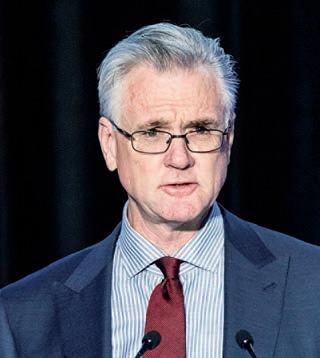
In my column last month, I detailed how Australia consumes over 56 billion litres of liquid fossil fuels each year across 11 major sectors of the economy, including heavy vehicle road freight. This liquid fuel use accounted for nearly 150 MtCO2 in 2022–23, approximately 32 per cent of domestic greenhouse emissions. With the heavy vehicle transport sector accounting for approximately 8.2 MtCO2 of this. In addition, I detailed that Low Carbon Liquid Fuels (LCLFs) have a major role to play in decarbonisation of liquid fuels in hard to abate sectors, many of which present in the truck space. Also, due to our old truck eet that has an average age of 15 years (30 year total life) a mechanism is required to, at least, partially decarbonise existing vehicles, as a new diesel truck sold today may not retire from the Australian truck eet until 2055.
Further, in global markets, LCLF production is scaling up rapidly due to supportive climate and economic policies, with global supply reaching 33 billion litres as of 2024. The Australian potential for a LCLF industry was recently highlighted in a report published by the Clean Energy Finance Corporation (CEFC). That CEFC report details that the pace of electri cation is increasing markedly as battery prices continue to fall, and new models enter the passenger, light commercial,
Major government funding for low carbon liquid fuels
and some truck segments. However, a signi cant share of Australia’s liquid fuel demand is hard-to-electrify, meaning net zero targets could be at risk without other decarbonisation options.
The development of an Australian LCLF industry could deliver the decarbonisation of Australia’s hard-toelectrify sectors. The CEFC report details how production of LCLFs can boost Australia’s economic prosperity, with bene ts owing directly to regional communities. A LCLF industry could deliver a signi cant economic bene t to Australian farmers and fuel producers.
The Australian agriculture sector has a competitive advantage with our abundant feedstock resources to supply the global LCLF market. Australian tallow and canola are major feedstocks for LCLF production. Unfortunately, these feedstocks are currently exported to Europe and Asia where they are transformed into LCLFs for use in those markets and we currently import small quantities of these processed LCLFs for use in trucks, aircraft, trains, mining and construction equipment, trials.
The Australian Government has now acknowledged the potential for a local LCLF industry and in a recent announcement has committed $1.1 billion to support the production of low carbon liquid fuels in Australia. This is the recognition and commitment that has been long missing from the Australian LCLF decarbonisation pathway. In their announcement, the government detailed that locally produced LCLFs, such as renewable diesel and sustainable aviation fuel, can help reduce emissions in hard to abate industries and sectors.
When announcing their $1.1 billion funding, the government speci cally detailed their target for hard to abate industries includes aviation, heavy road freight, rail, shipping and mining. Further, the announcement detailed
that LCLFs can be produced sustainably from, waste products such as used cooking oil, agricultural and forest residuals, as well as biomass (garbage) by combining renewable hydrogen with captured carbon dioxide in these waste products. Stating that these fuels will play an important role to deliver on Australia’s Net Zero commitments.
The Cleaner Fuels Program will offer grants to domestic producers of LCLFs and will be designed to attract investment in LCLF projects in Australia. It will help projects to establish and compete with existing LCLF production overseas. Detailed design of the program will be undertaken later this year in consultation with industry. The Government plans to nalise details of the scheme in mid-2026, ahead of opening applications for LCLF projects in 2026-27.
The Truck Industry Council has been championing LCLFs as one of the solutions that are critical for decarbonising Australia’s heavy vehicle fleet for some time now.
Along with the electrification of urban road freight and the use of higher productivity vehicle combinations, collectively these technologies will form the major pathways to decarbonisation of road freight in our country. TIC applauds the Albanese government in acknowledging the role LCLFs can play in Australia’s decarbonisation journey and setting Australia to become a major global supplier of locally produced LCLFs.
The announcement of $1.1 billion to develop a LCLF industry in Australia and support the production of low carbon liquid fuels here, is a major endorsement by the federal government of this decarbonisation pathway.
Tony McMullan CEO, Truck Industry Council
TONY MCMULLAN
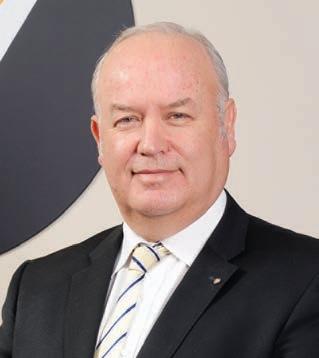
Australia’s freight and logistics sector is one of the most dynamic and essential industries in the country. It connects businesses, communities, and consumers, moving everything from groceries to medical supplies, construction materials to online orders. But beneath this vital service lies a growing threat to its integrity and sustainability: sham contracting.
Sham contracting is a practice where workers are misclassi ed as independent contractors—often under an ABN— despite working under conditions that legally de ne them as employees. This misclassi cation allows companies to avoid paying superannuation, leave entitlements, workers’ compensation, and taxes. It’s a loophole that not only exploits workers but also undermines ethical operators who are doing the right thing.
The issue of sham contracting is complex and deeply embedded in the road transport sector, which is the fourth largest contributor to Australia’s black economy. It is dif cult to establish exact cases due to their unreportable nature and the exploitation of various visa schemes and categories. These practices are decimating the transport industry by undercutting industrystandard labour rates, creating an anticompetitive environment that prevents fair competition.
End Sham Contracting in Freight Before It Ends Us
To effectively combat sham contracting, we need a coordinated, multi-agency approach.
The Victorian Transport Association calls for the Department of Home Affairs, the Australian Taxation Of ce (ATO), and the Fair Work Commission (FWC) to work together and develop a uni ed strategy to identify, investigate, and prosecute these practices. Enforcement alone cannot solve this issue—collaboration and coordination are essential.
Senator Glenn Sterle, a former truck driver and long-time champion of the transport industry, has repeatedly called out the ATO for its failure to act decisively on sham contracting. He has urged the formation of a dedicated taskforce to investigate and prosecute sham contracting in road transport—a proposal the VTA strongly supports. Senator Sterle’s advocacy is backed by industry bodies across the country; all of whom have seen rsthand how sham contracting distorts competition and damages the reputation of our industry. Clients from large entities are increasingly demanding lower freight rates and encouraging transport companies to restructure their employment practices to engage drivers on ABNs. This is not innovation, it’s exploitation.
The consequences of inaction are severe. Ethical operators are being squeezed out of contracts by competitors who exploit workers and dodge tax obligations. Drivers are left without protections, often unaware of the risks they face. And the broader community suffers as the industry’s reputation is tarnished by stories of exploitation and unsafe practices.
The VTA believes that now is the time to escalate efforts to rid the freight industry of sham contracting, a practice that continues to undermine the integrity of the sector. We urge the

federal government to take decisive and coordinated action by establishing a national taskforce speci cally focused on investigating sham contracting in transport. This taskforce must be equipped with the authority to audit, enforce, and prosecute offenders across the industry.
In addition, it is critical to strengthen the legal definitions that distinguish employment from contractor relationships, closing loopholes that allow misclassification to persist. A unified and collaborative approach is essential, involving key agencies such as the ATO, the FWC, and the Department of Home Affairs, to ensure consistent enforcement and oversight.
Education also plays a vital role— operators and workers must be informed about their rights, responsibilities, and the risks associated with sham contracting. Finally, ethical businesses that uphold fair labour standards should be recognised and supported through targeted procurement policies, incentive programs, and public recognition initiatives that reward compliance and investment in people.
Transport is a labor-intensive industry. It’s not automated or remote—it’s boots on the ground, hands on the wheel, and people making things happen.
We must protect those people. We must protect the businesses that treat them fairly. And we must protect the future of freight in Australia.
The VTA stands united with all industry associations that support future investigations and efforts to close down sham contracting and the effects of the shadow economy in our industry.
Peter Anderson National Secretary, ARTIO
STUART ST CLAIR
PETER ANDERSON
Drag City
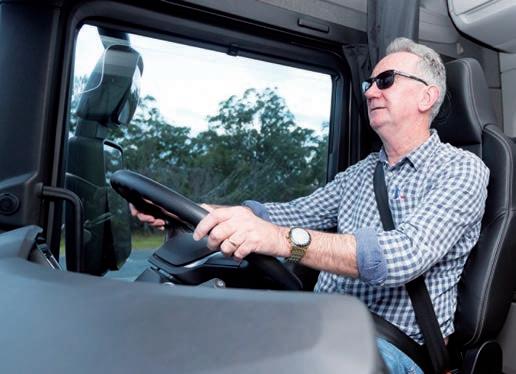
The new truck and van market in Australia during September continued to be behind the pace of 2024’s record results, according to the statistics compiled by the Truck Industry Council. The month’s total of 3,012 trucks was 554 less than in September 2024 (-15.3 per cent) and took the YTD accrual to 25,752 which was 3,597 units less than at the same point in time last year (-13.3 per cent).
The Heavy Duty sector, after a booming 2024, continued to be hardest hit by 2025’s market slow down with 1,221 new units for September compared with last year’s 1,530, a decrease of 309 for the month (-20.2 per cent). On a quarterly basis the July-September period was down 668 trucks (-16.3 per cent) and looking at the YTD result of 10,563 the sector has contracted by 16.1 per cent year-on-year.
Medium Duty truck sales totalled 508 for the month, 201 less than September 2024 (-28.4 per cent). The YTD of 5,276 was 749 less than for the rst nine months of 2024 (-12.4 per cent). Light Duty truck sales during September achieved a total of 1,283 units, which was just 44 less than the previous September (-3.3 per cent) and took the YTD to 9,913 units, still 914 below the 2024 result (-8.4 per cent).
The van sector, which includes vans with GVMs between 3,500kgs and 8,000kgs, had a total of 866 for September, 114 less than in September 2024 (-11.6 per cent), and the YTD of 7,975 was 570 less than during the same period last year (-6.7 per cent).
On a quarterly basis, the heavy vehicle market of combined truck and van sales was down 6.9 per cent at the end of 2025’s rst quarter, 12.1 per cent down at the end of the second and now 11.8 per cent down at the end of the September quarter. If this rate remains steady, and despite what in isolation could be considered concerning gures, the overall market is still on track for its third best annual results in history.
The effects of the latest 25 per cent tariffs on trucks imported into the USA is still unclear as most of the major North American truck manufacturers, which these tariffs were meant
to support, are by their very nature global operations, with components and complete vehicles sourced from various factories throughout the world. The effect upon future local pricing of commercial vehicles, and consequently the sales results, will take some time to be determined given the complicated and changing nature of the US tariff policy.
